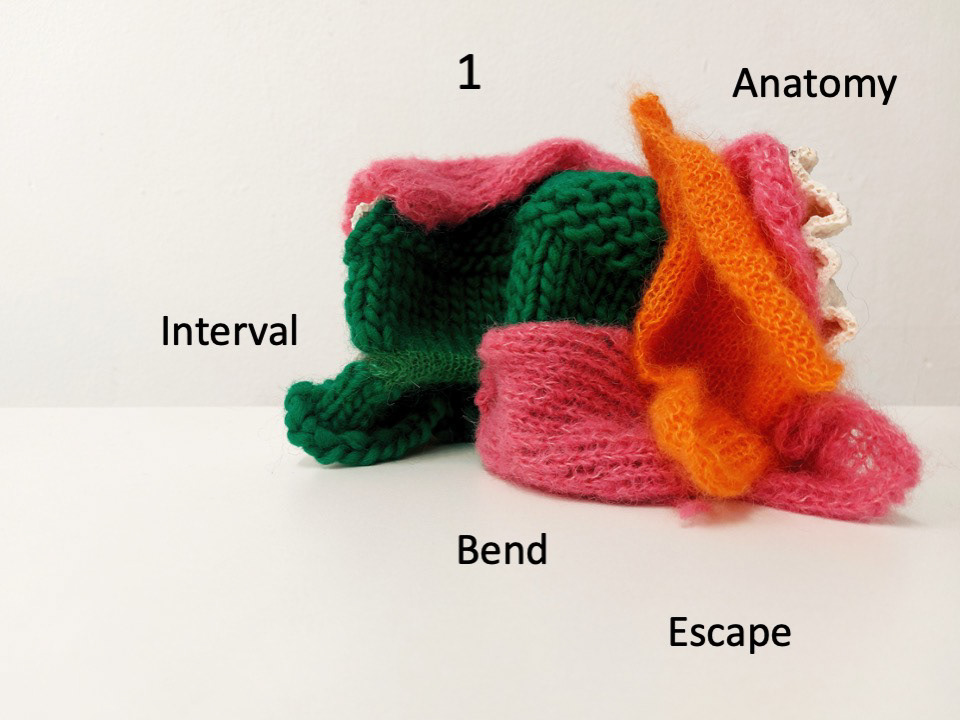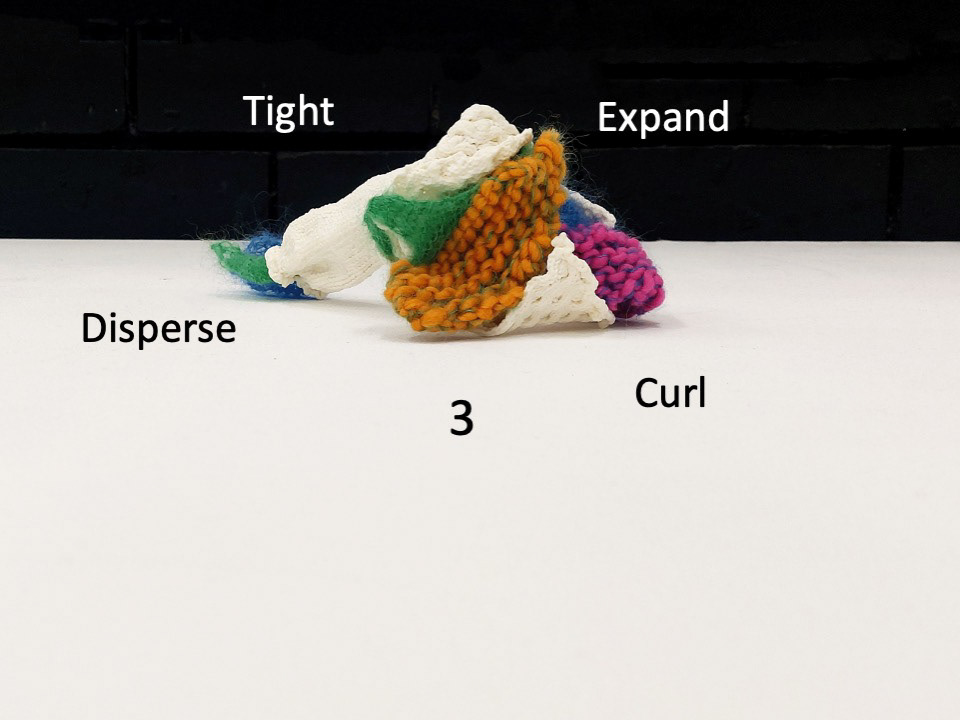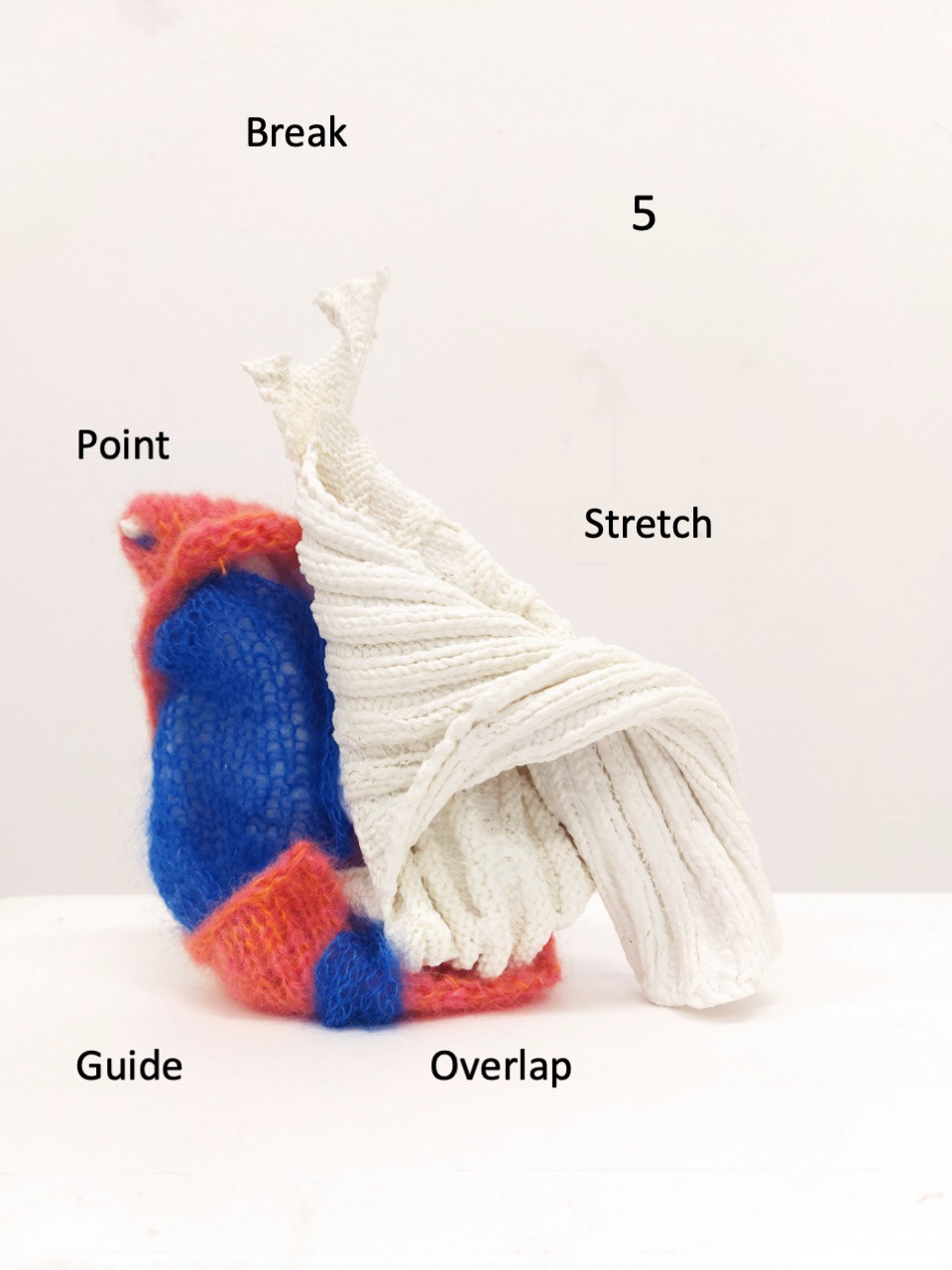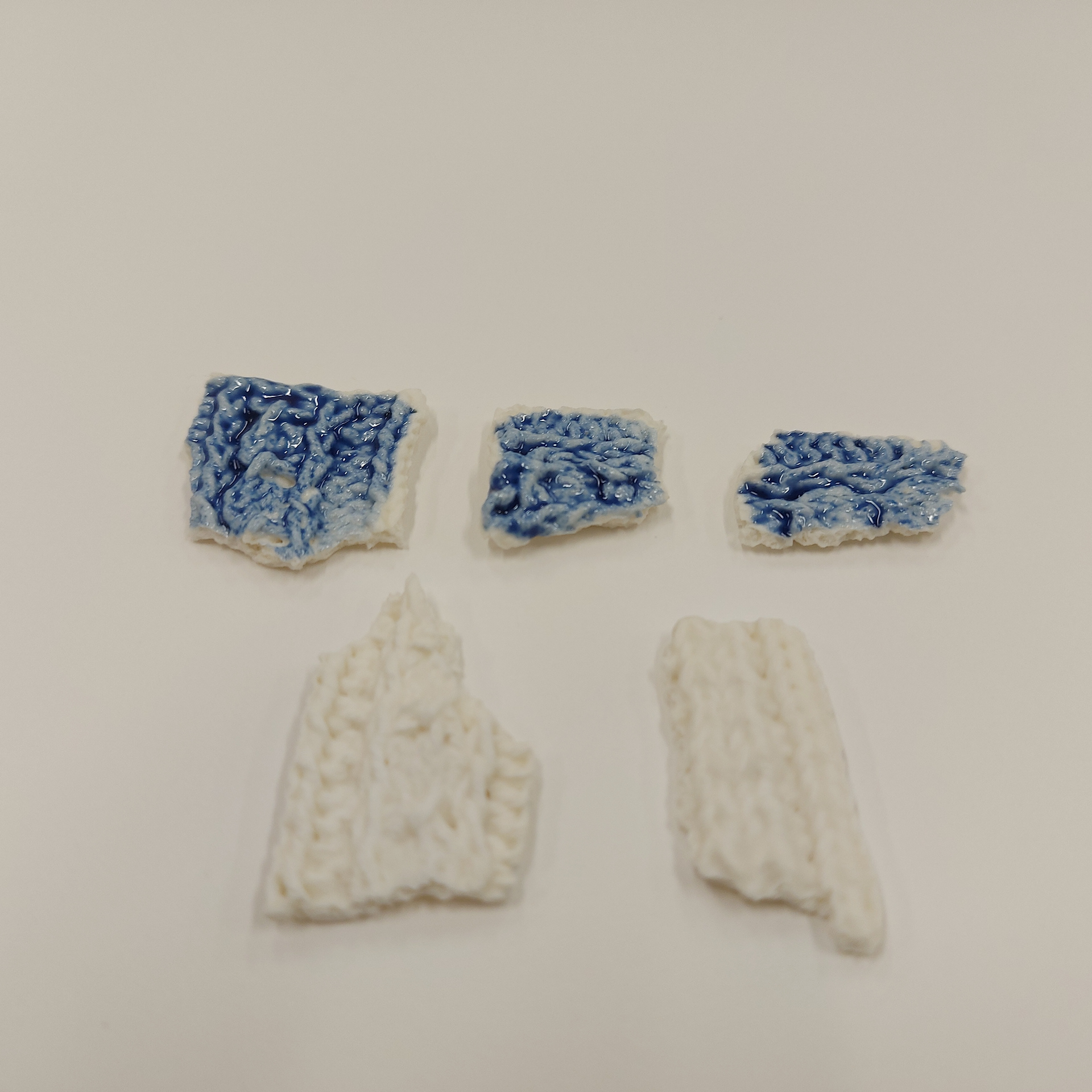
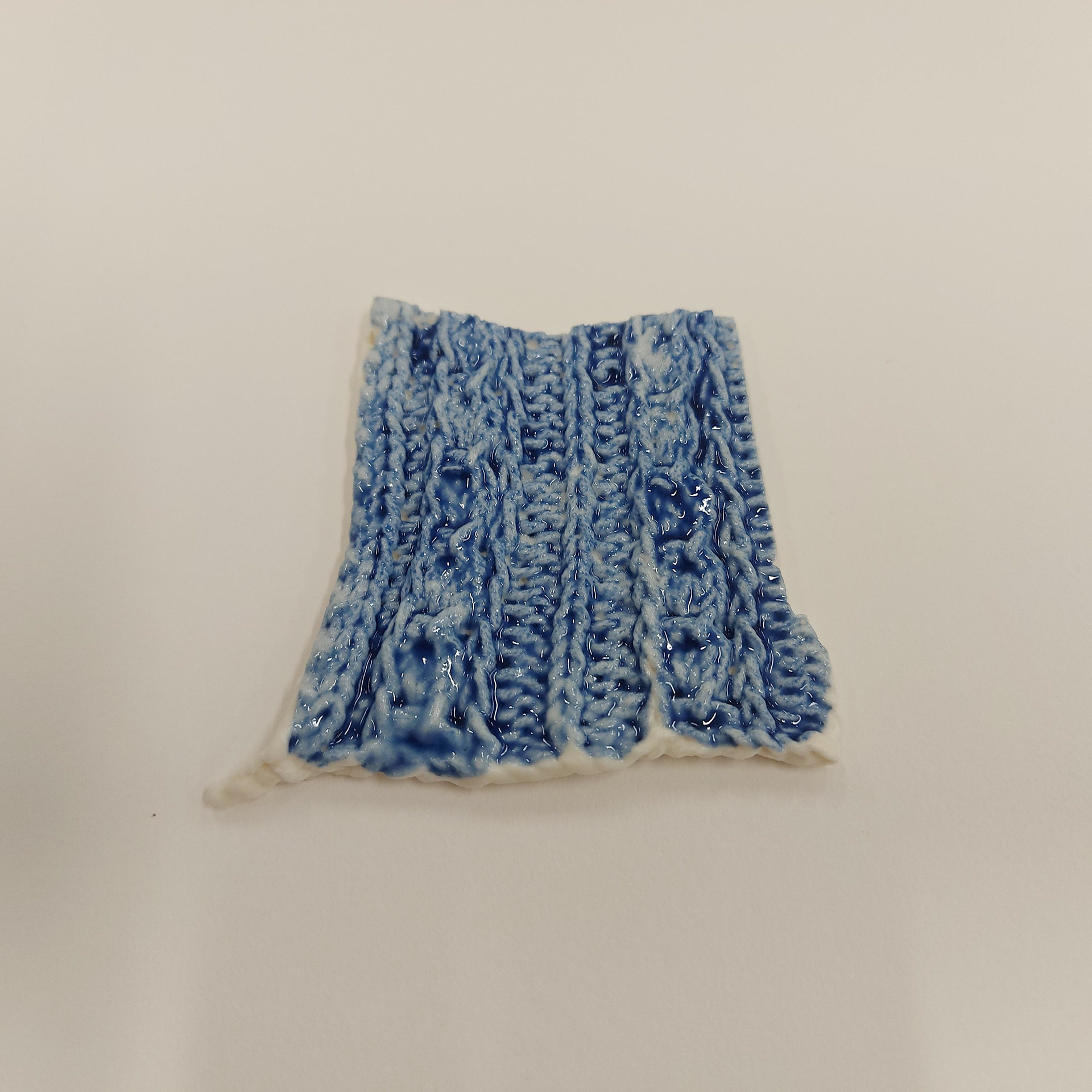
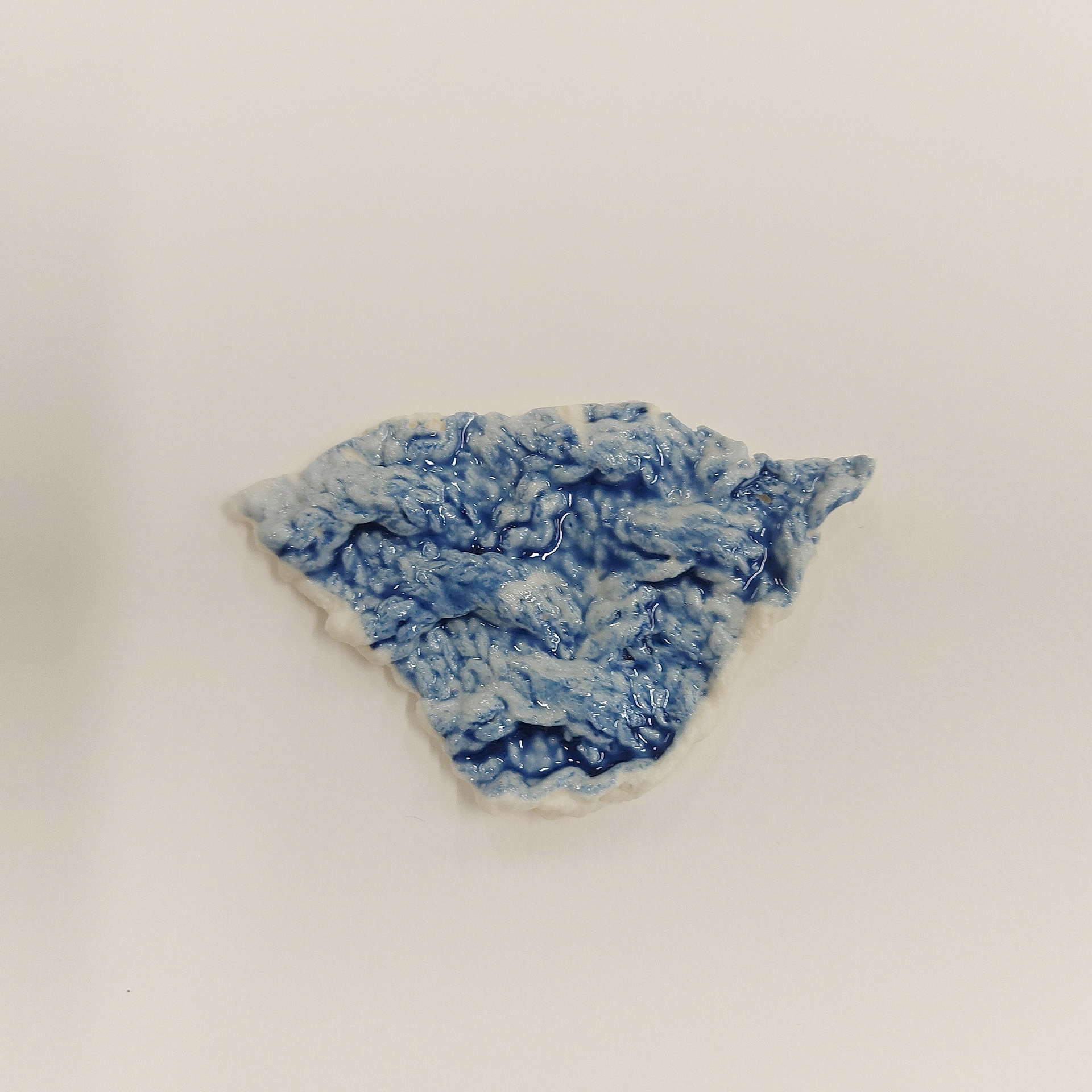

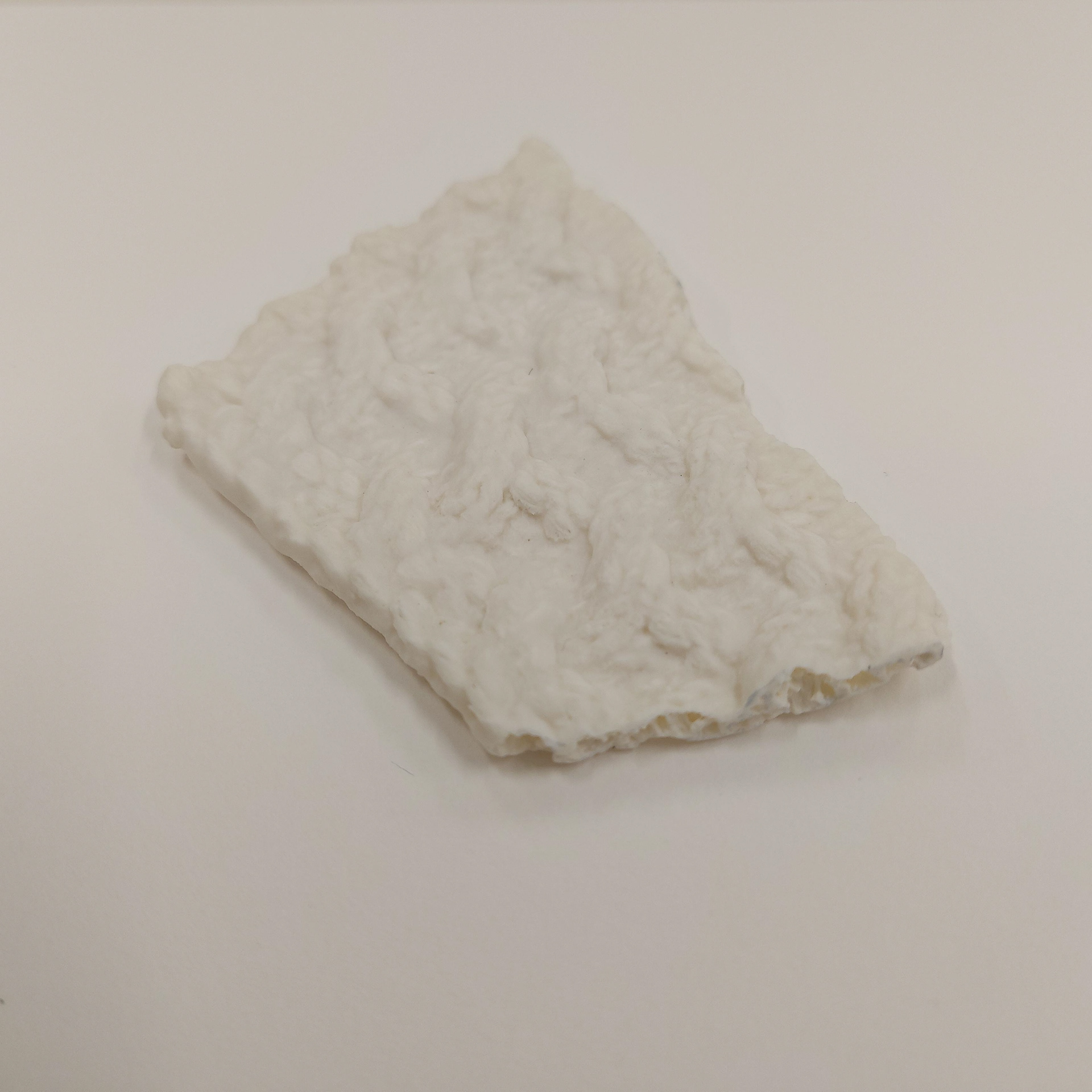
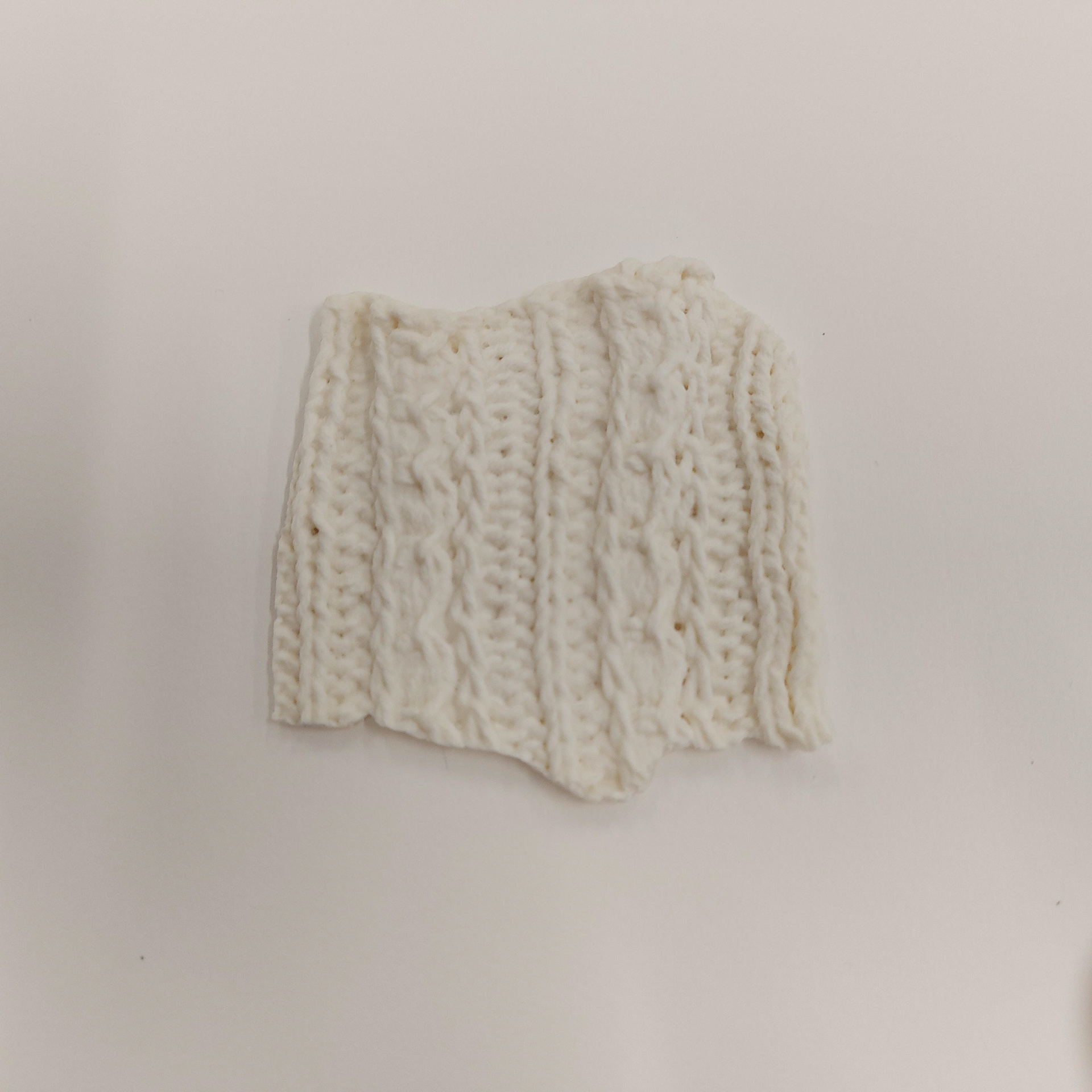

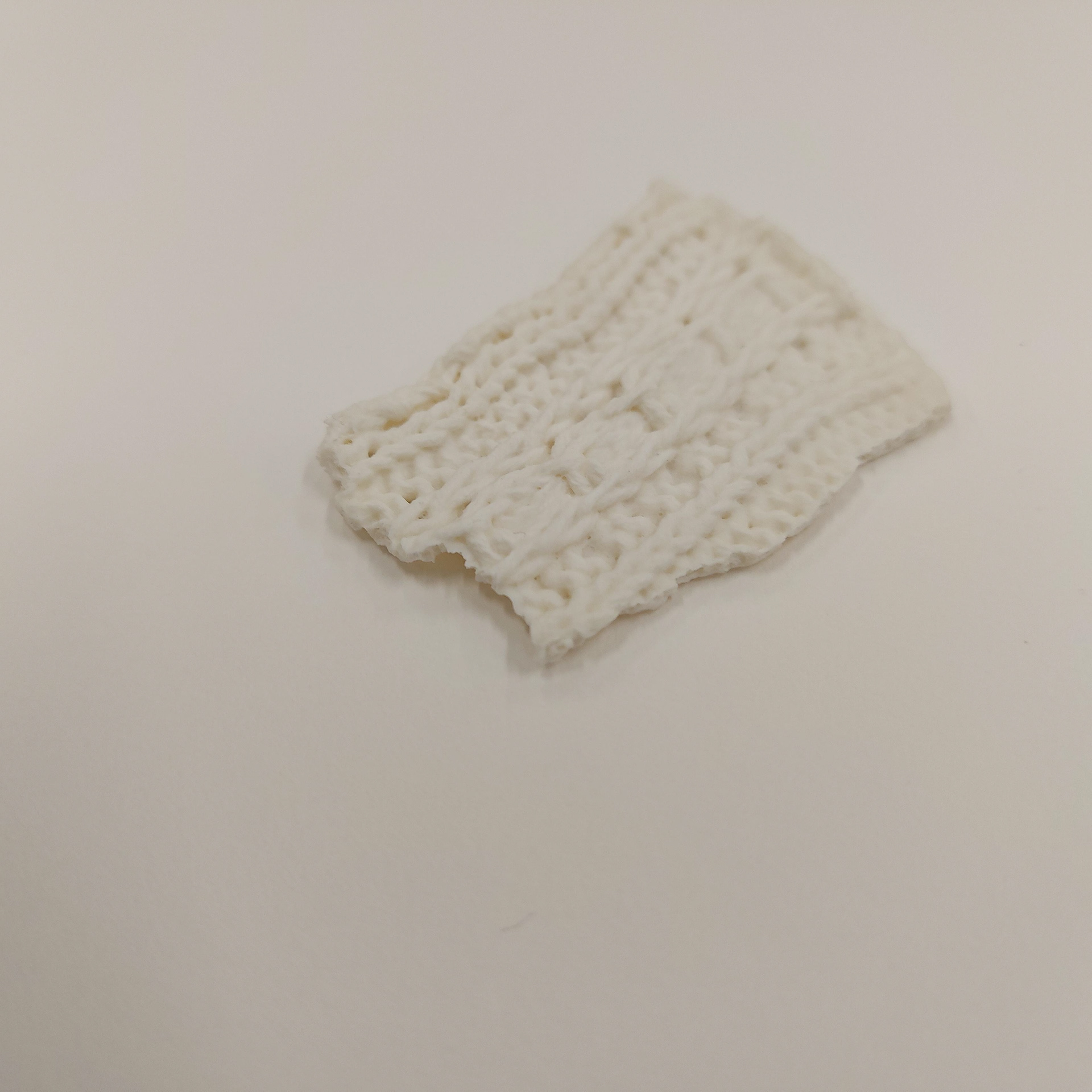
These are my porcelain pieces that have come out of the kiln at stoneware. Some are glazed in blue and some are not glazed. I really like the creaminess of the clay and the stitches in the knitting have come out visibly when cast. I've found that the intersection where you can see the stitches inside the cast ceramics have bigger holes in the porcelain cast slip compared to the usual casting slip.
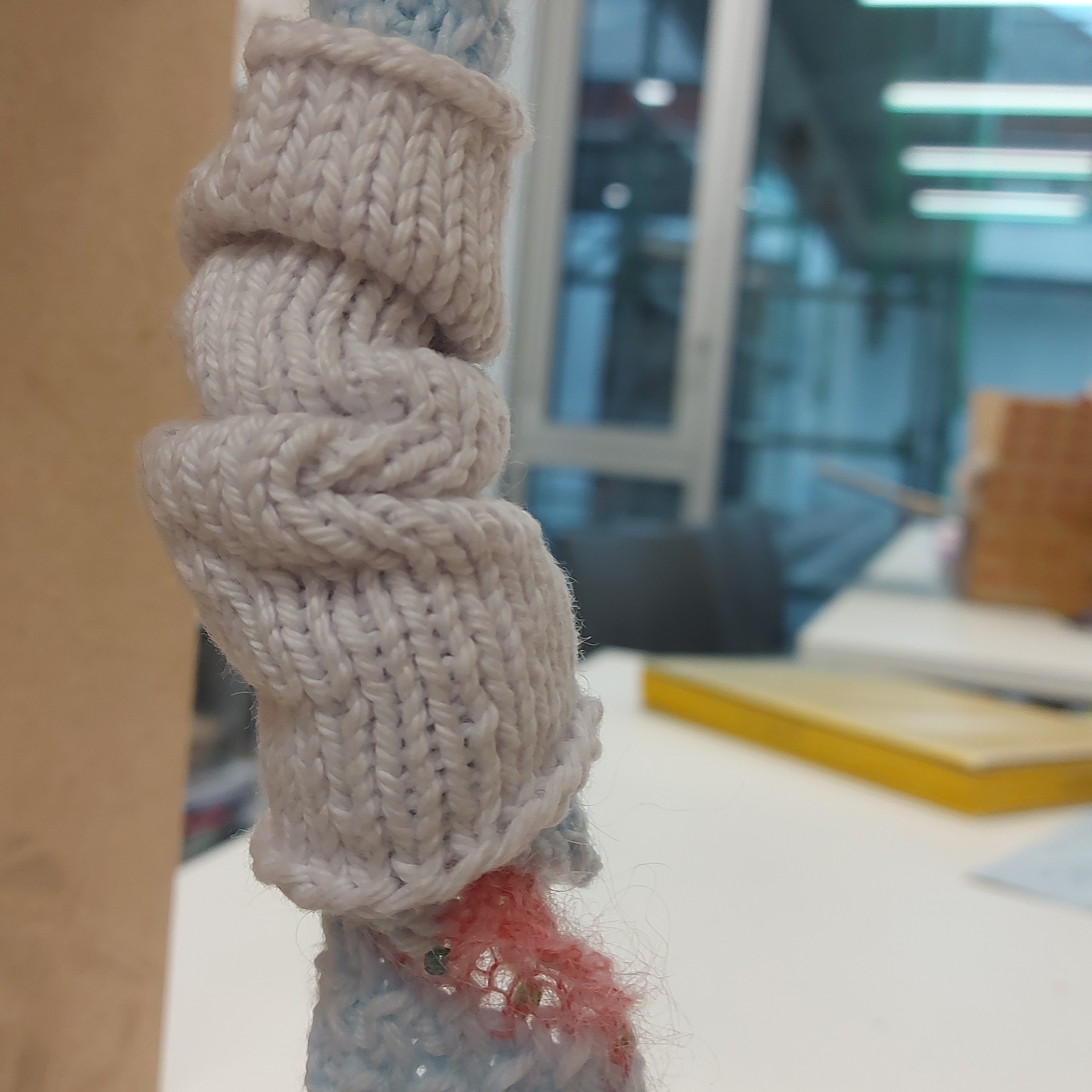
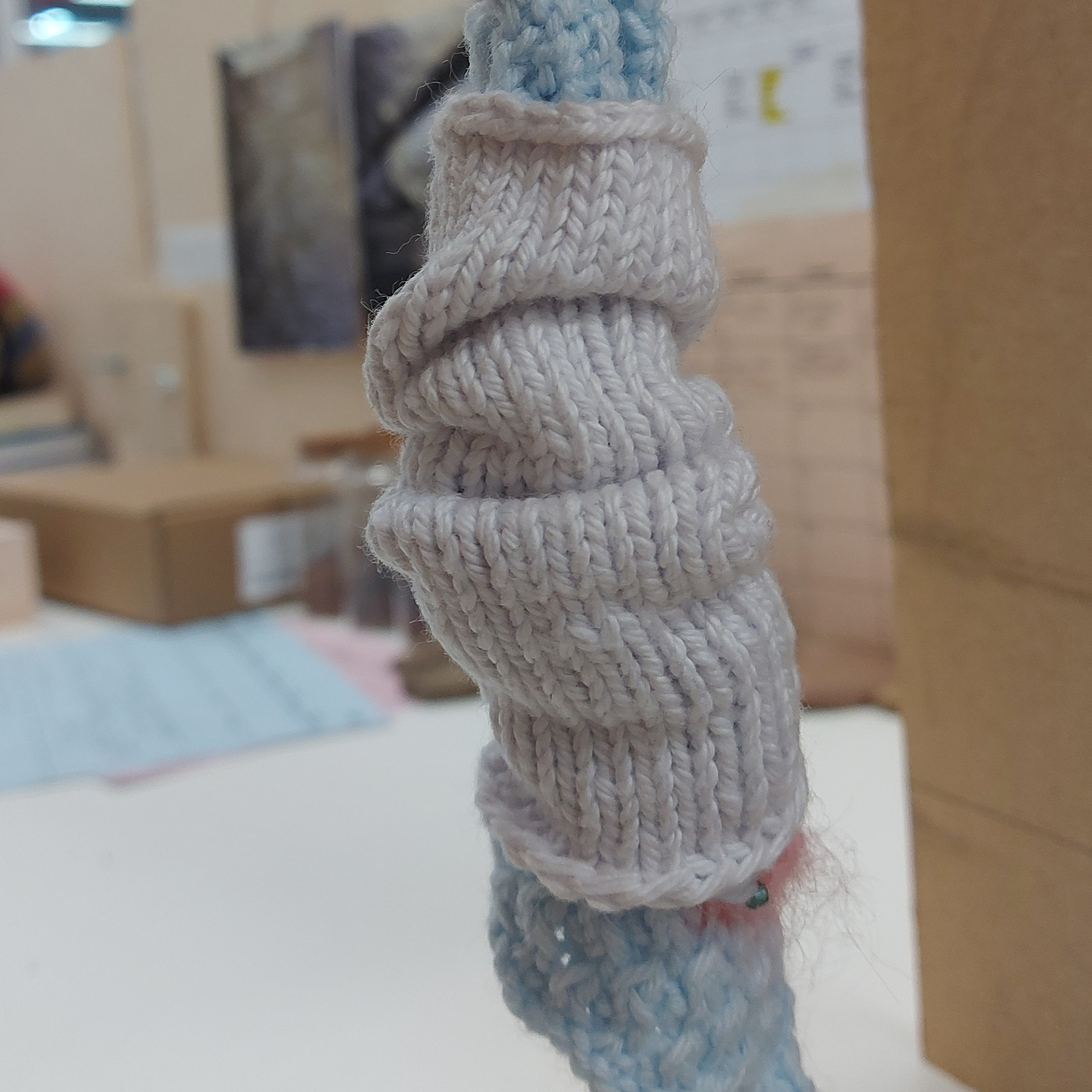

During my hanging experimentation I really liked how the knitted cylinders 'scrunched' when textile was put through it. If knitted textile was to go through a casted knitted 'scrunch' would it manipulate the material? Instead of the knitting manipulating the knitted cylinder to scrunch in the examples above?
I decided to explore this through the sketches below
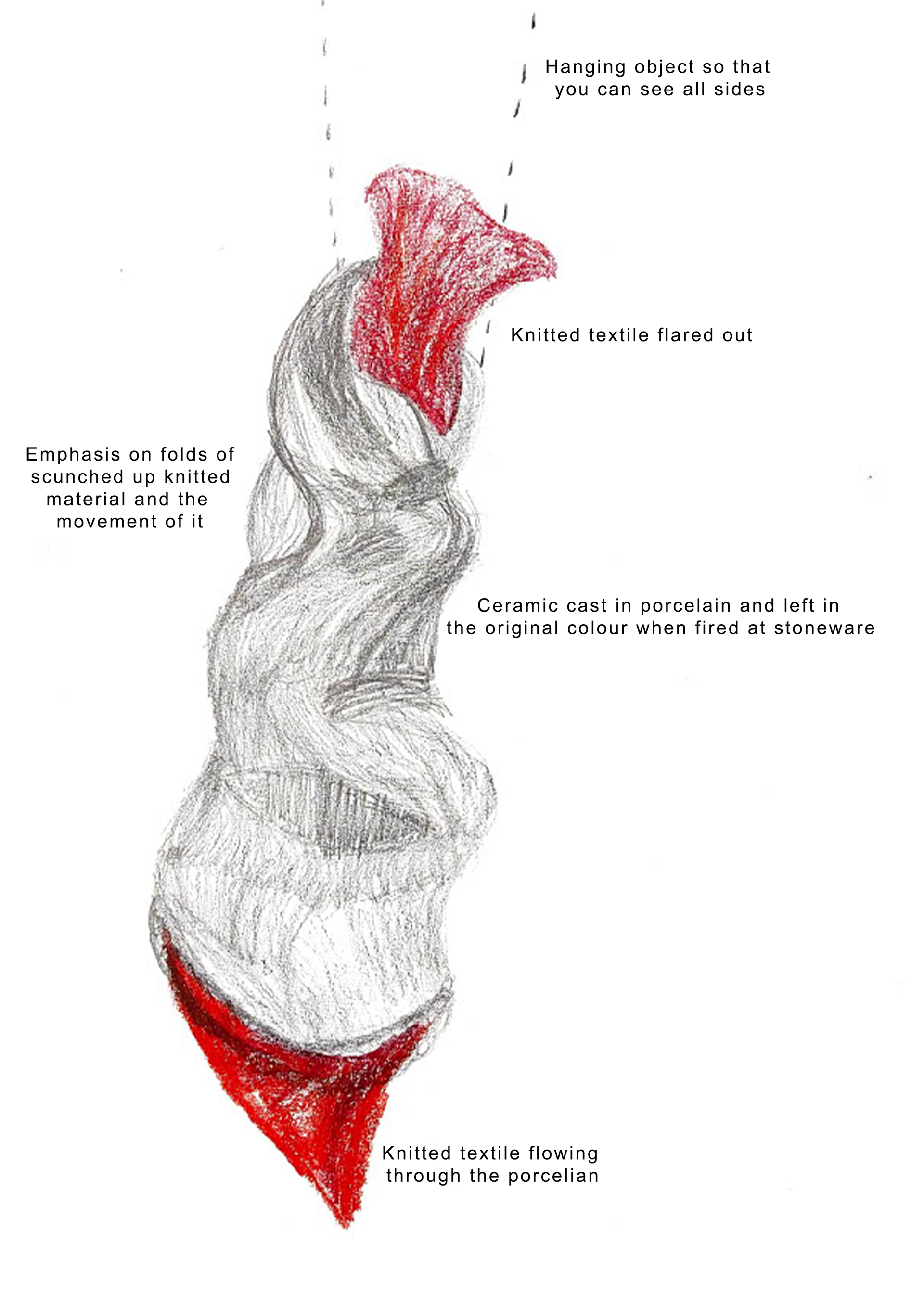
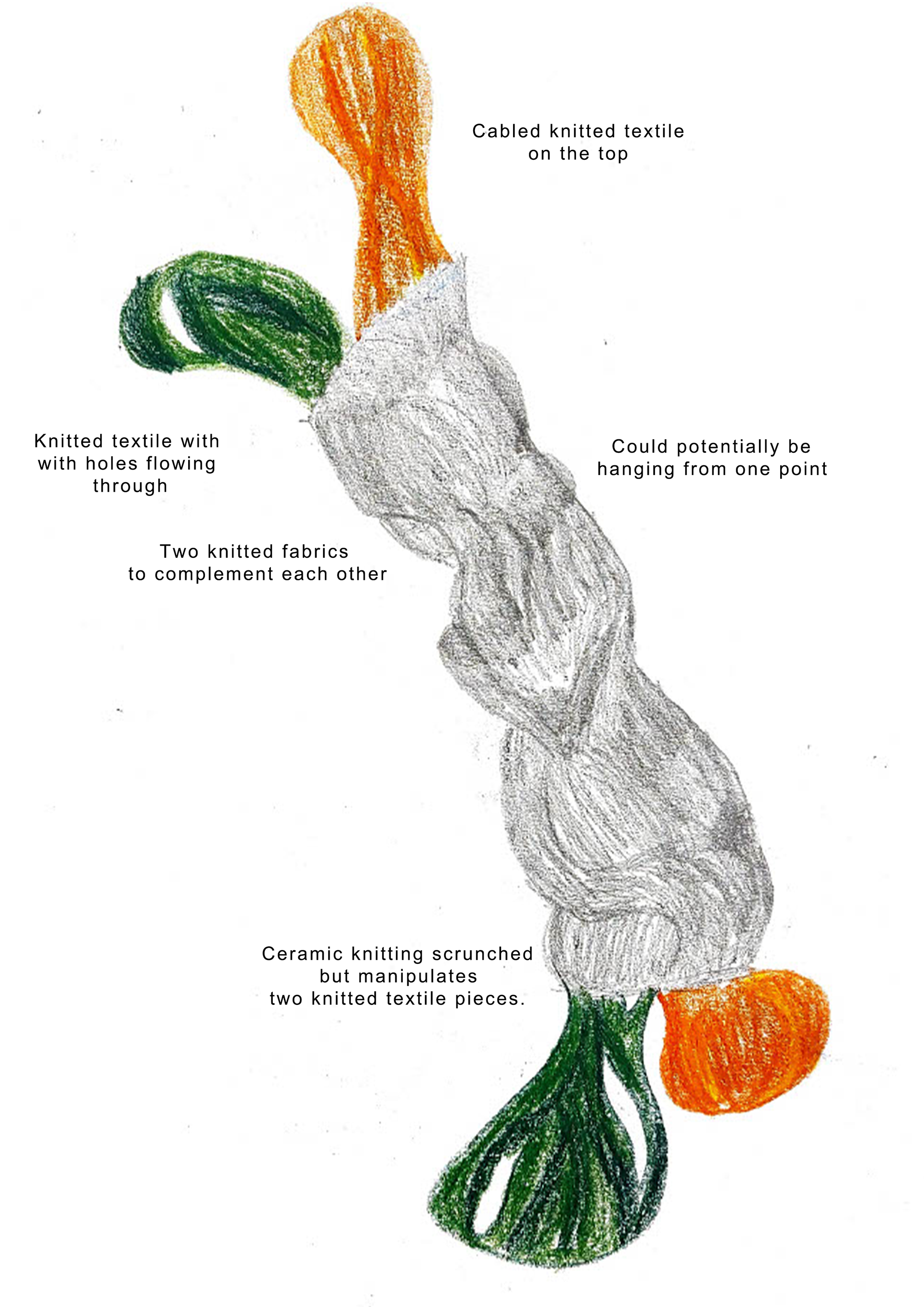
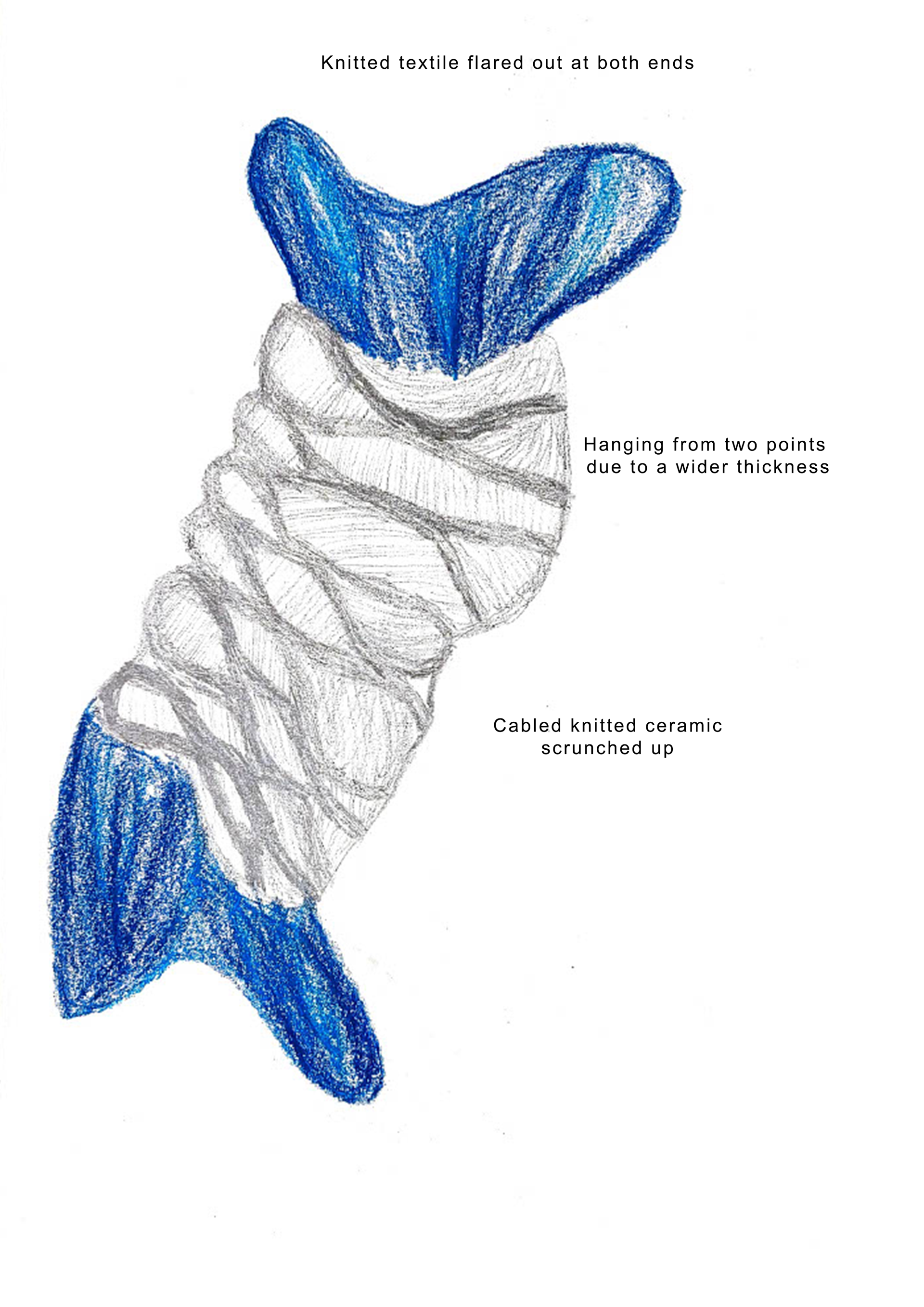

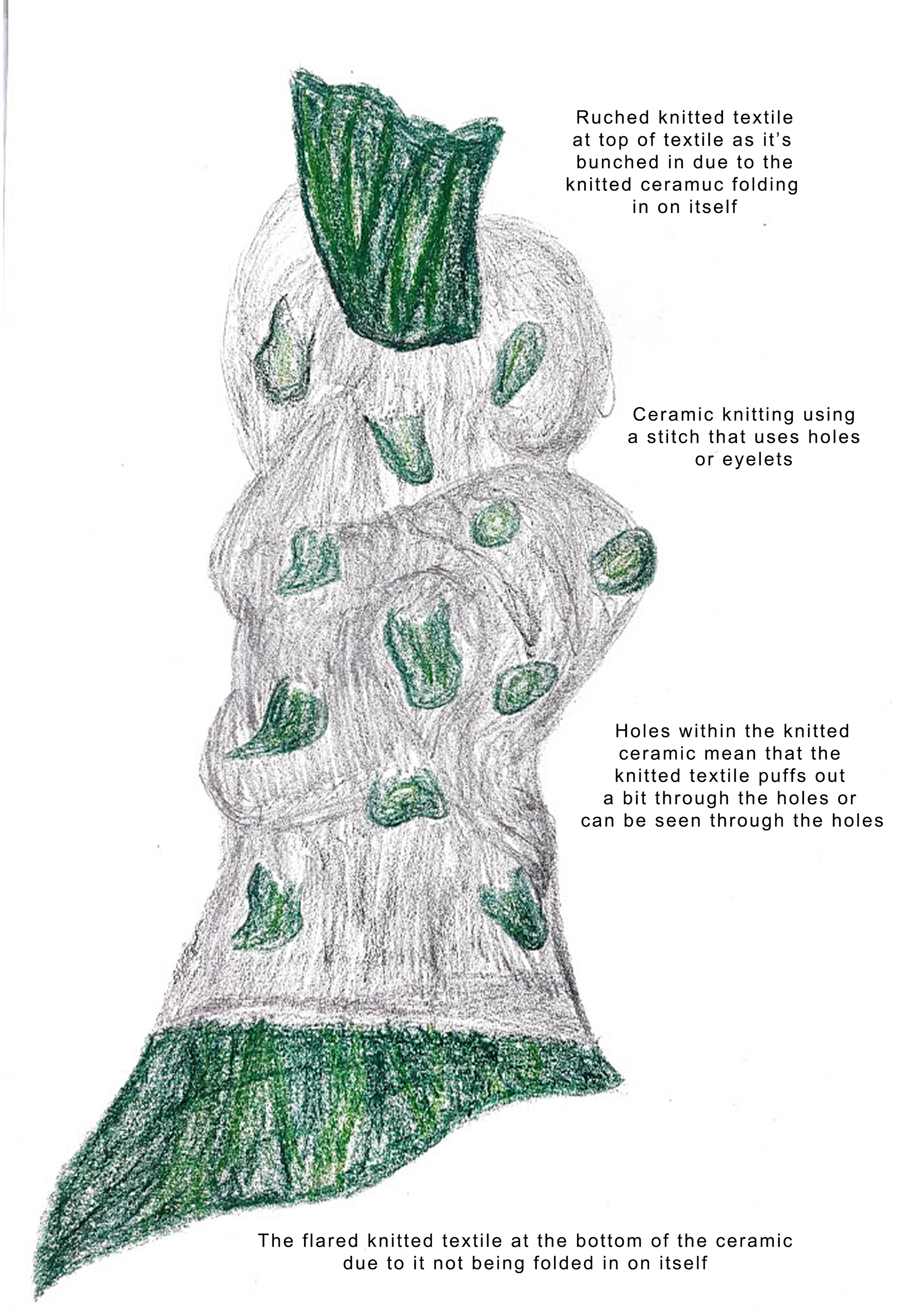
First iteration of ideas with a knitted ceramic cylinder.
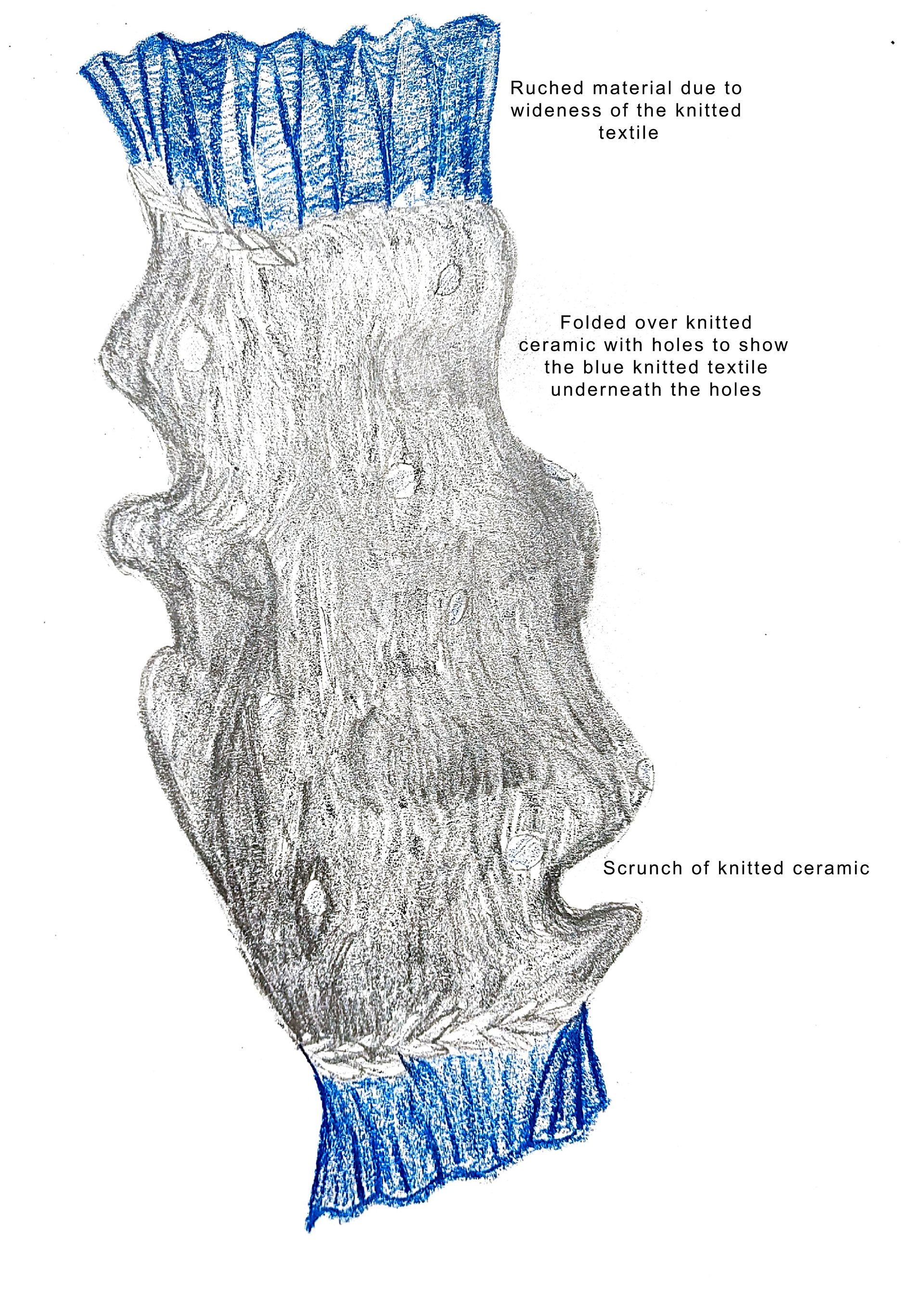

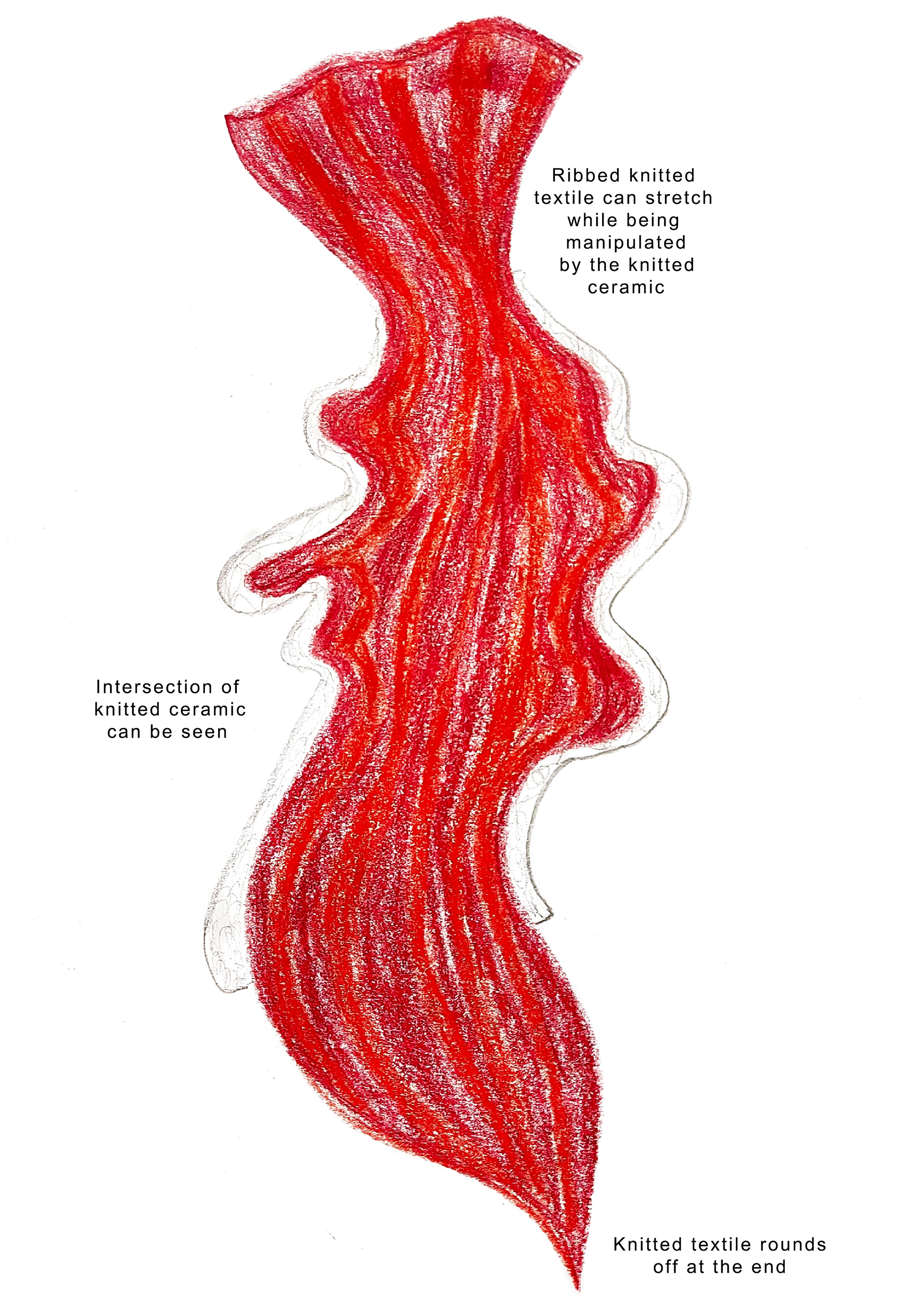
Above and below are the second iteration of ideas where I use the intersection of the cylinder by cutting it in half so that you can see the way the knitting is manipulated by the knitted ceramic.
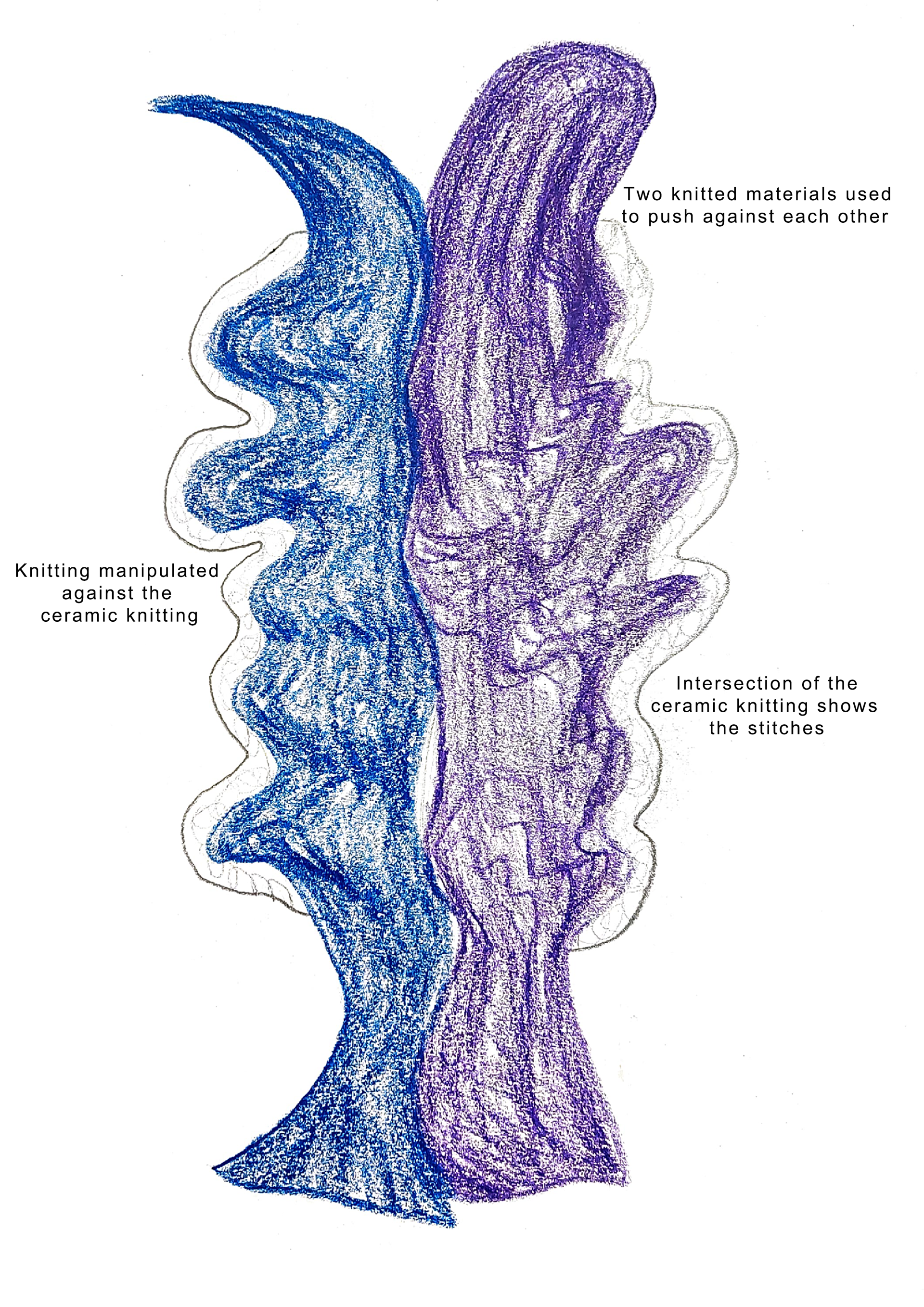

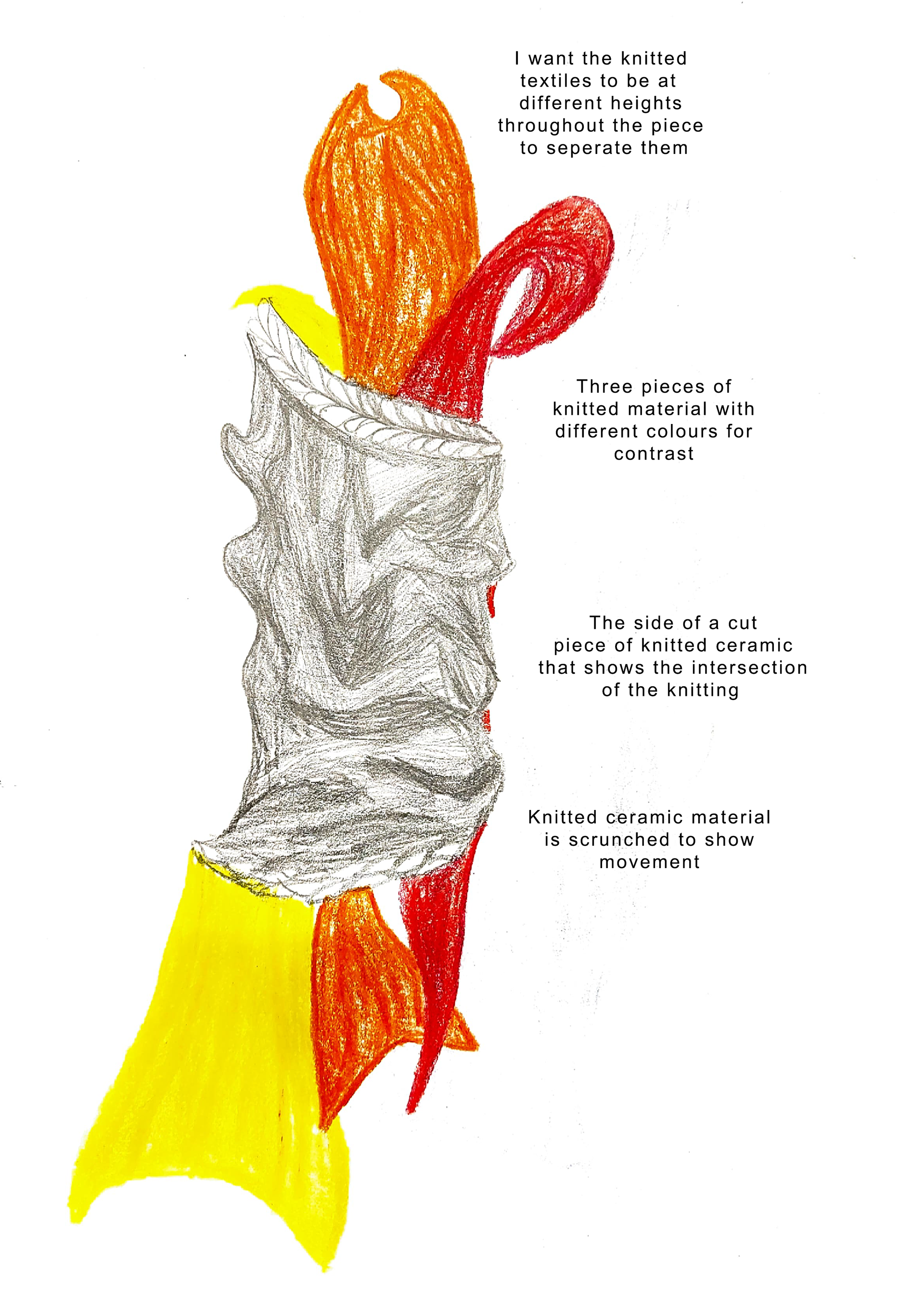
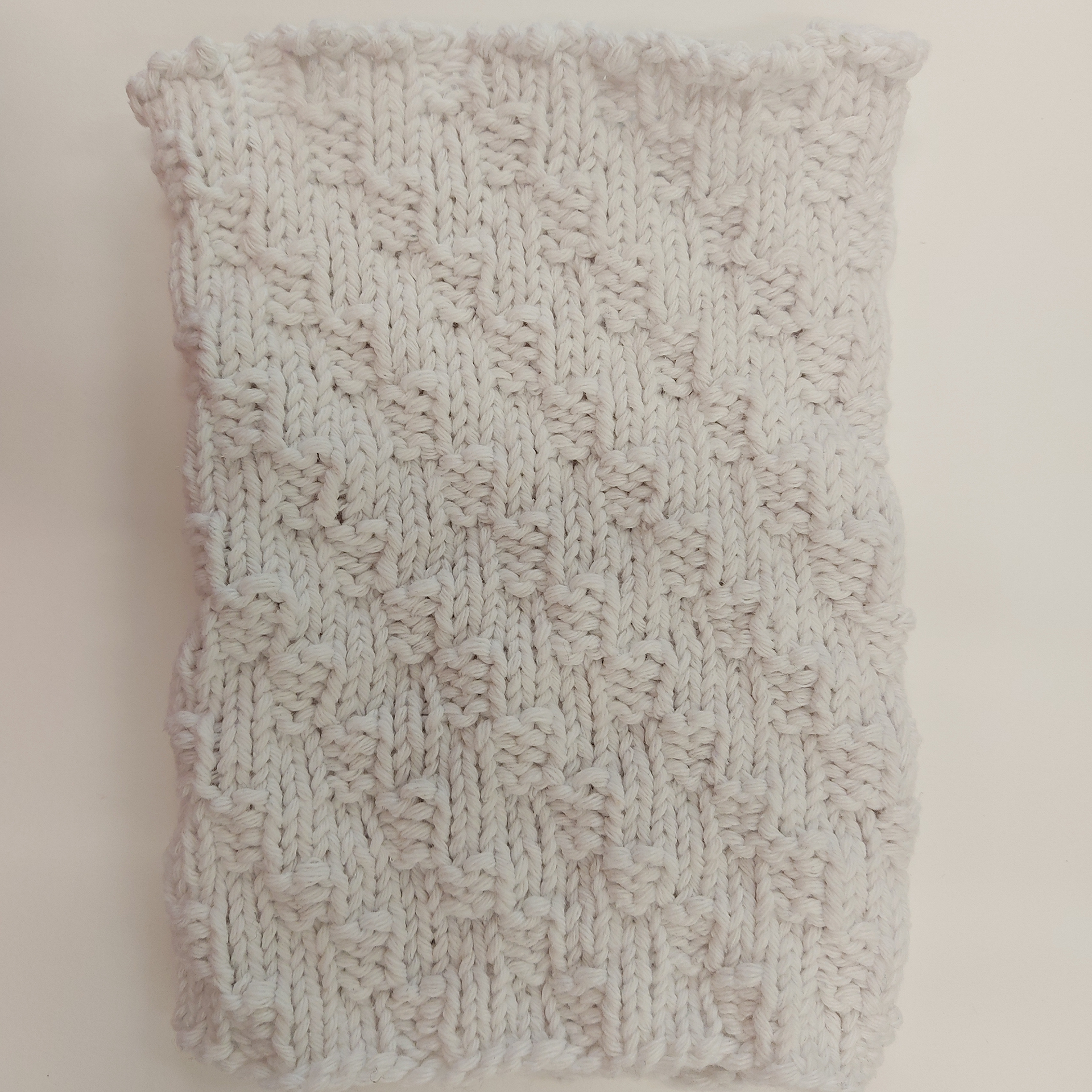




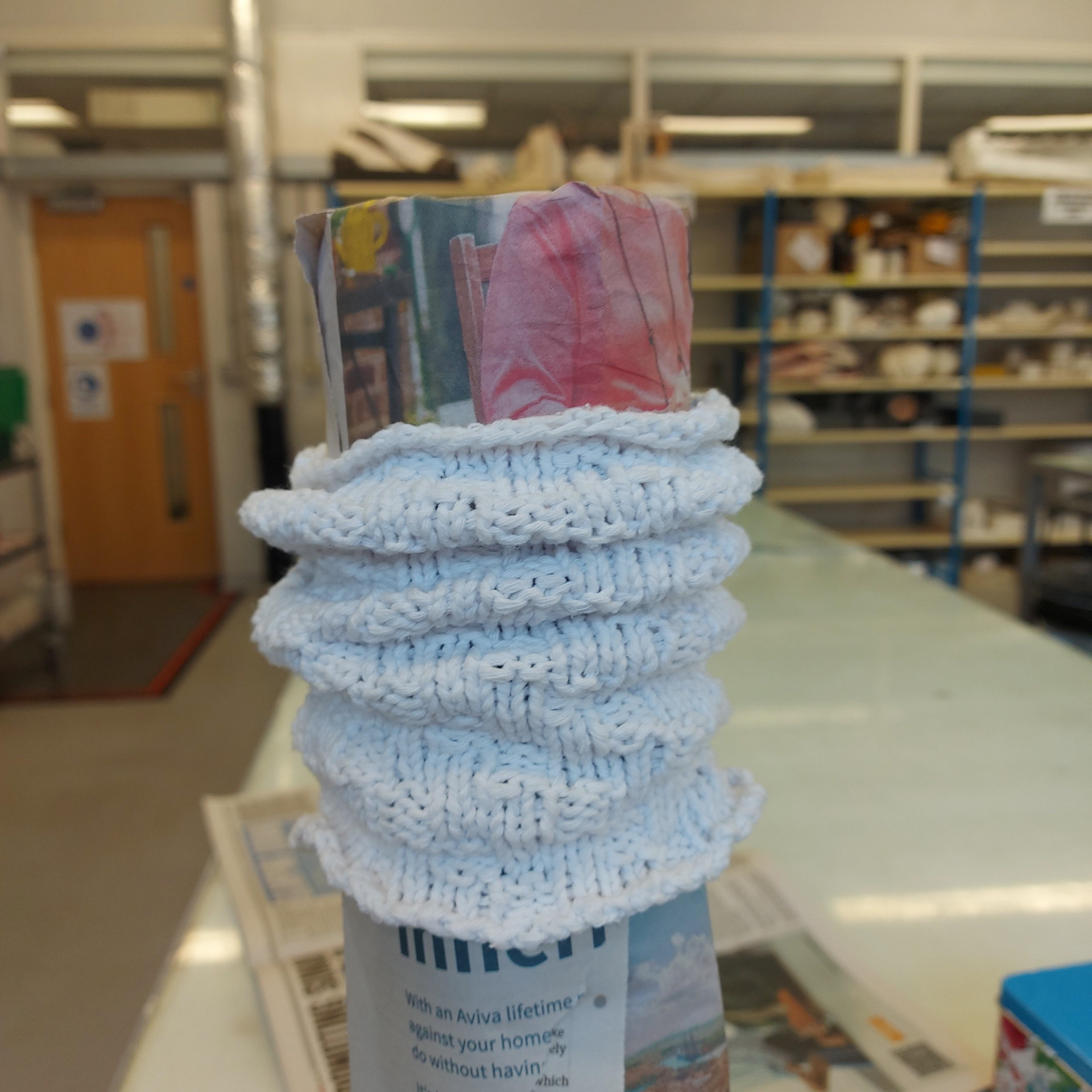
I knitted a cylinder using the stitch 'Left Diagonal Rib' in order to create some texture. When casting the piece, I found that the weight of the ceramic affected the scrunch as it stayed in place better than if it wasn't in casting slip as the knitting will sometimes spring back or try to go back to its original shape.
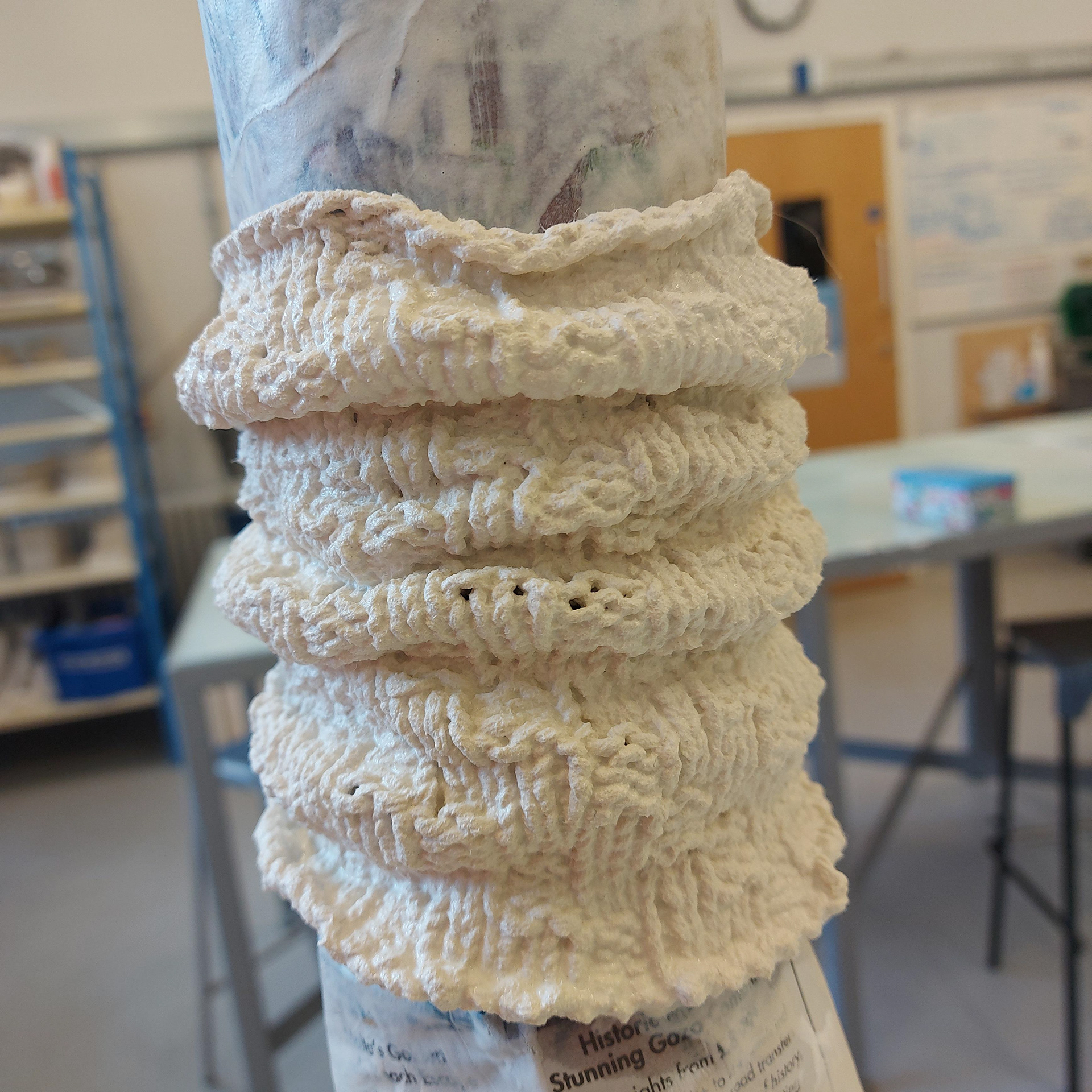
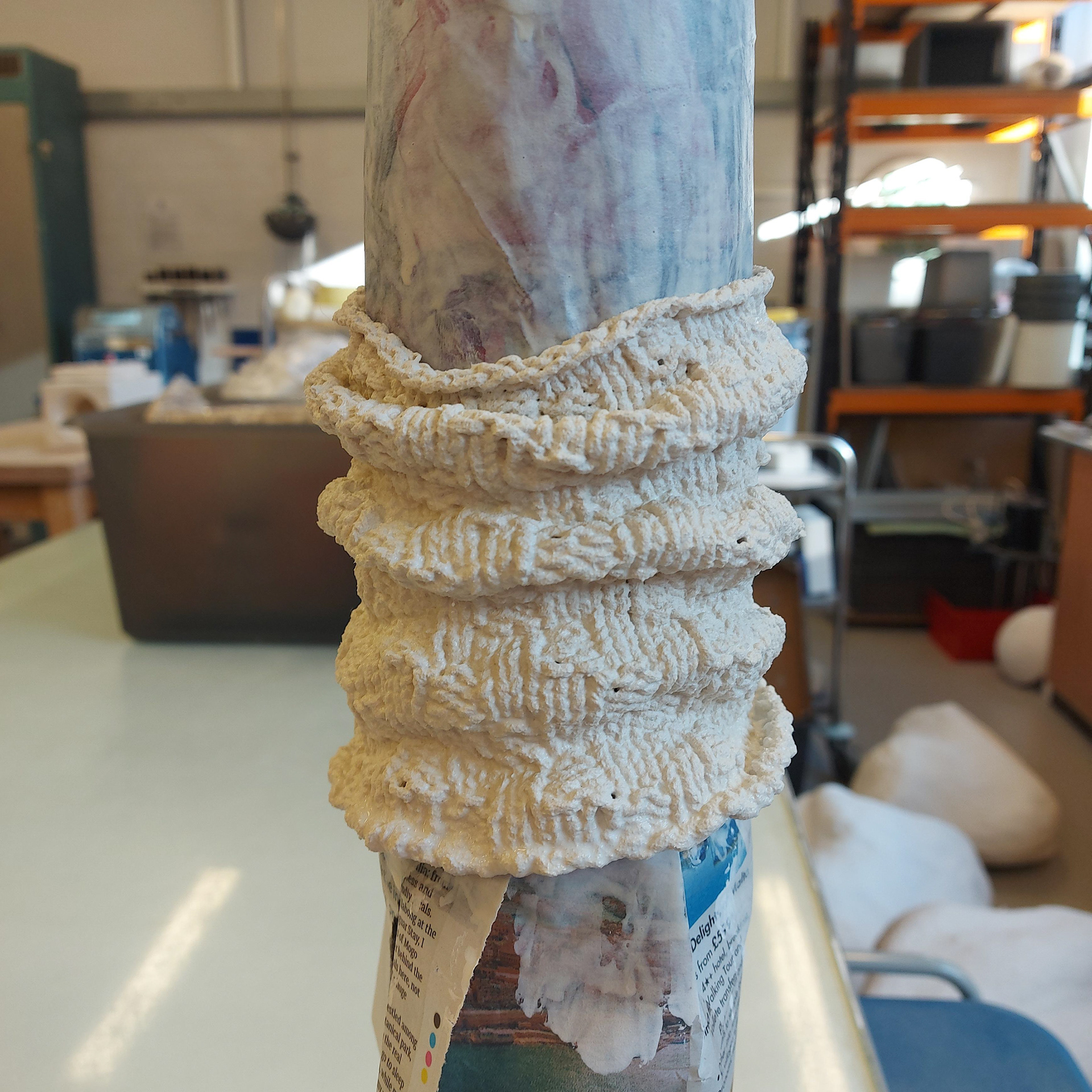
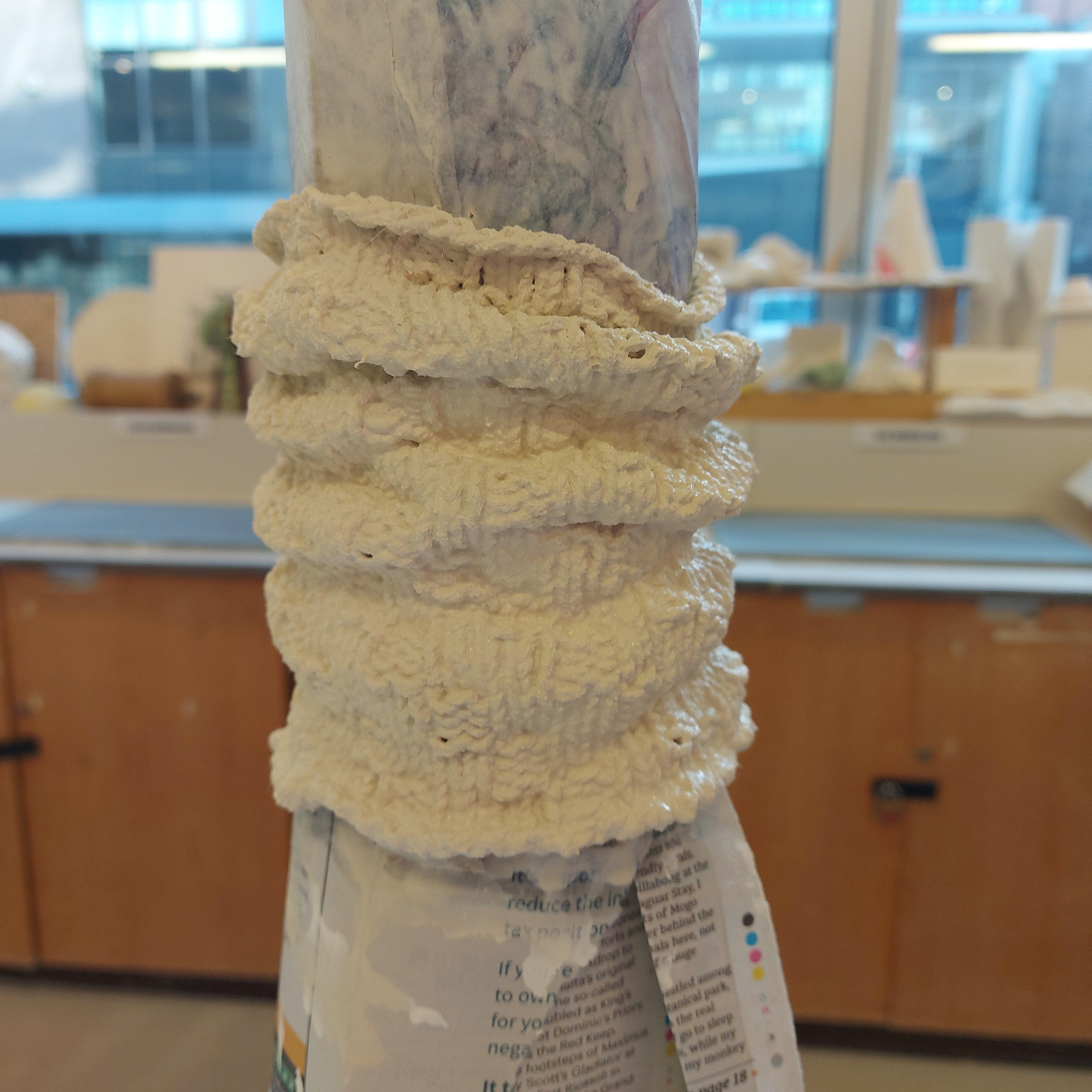
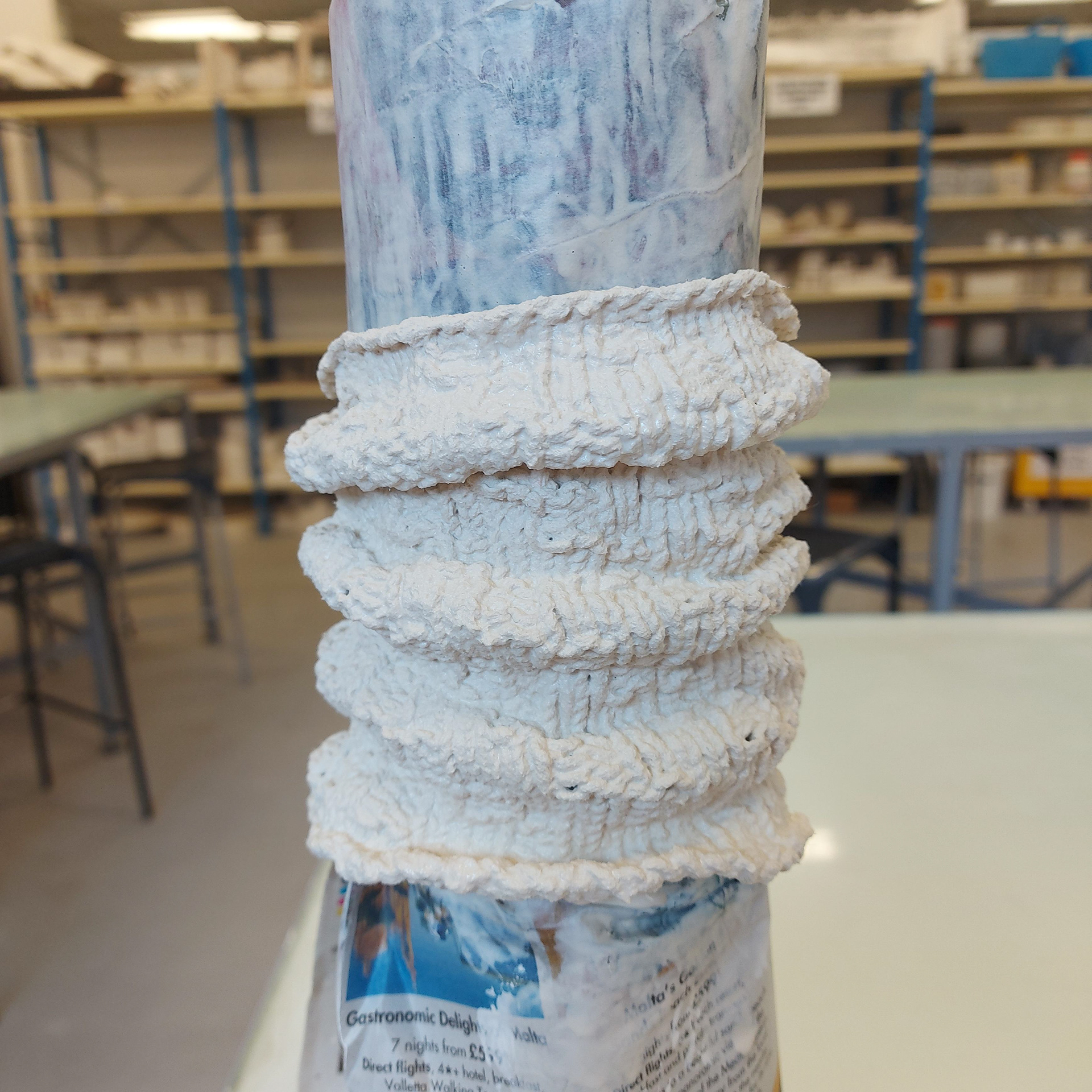

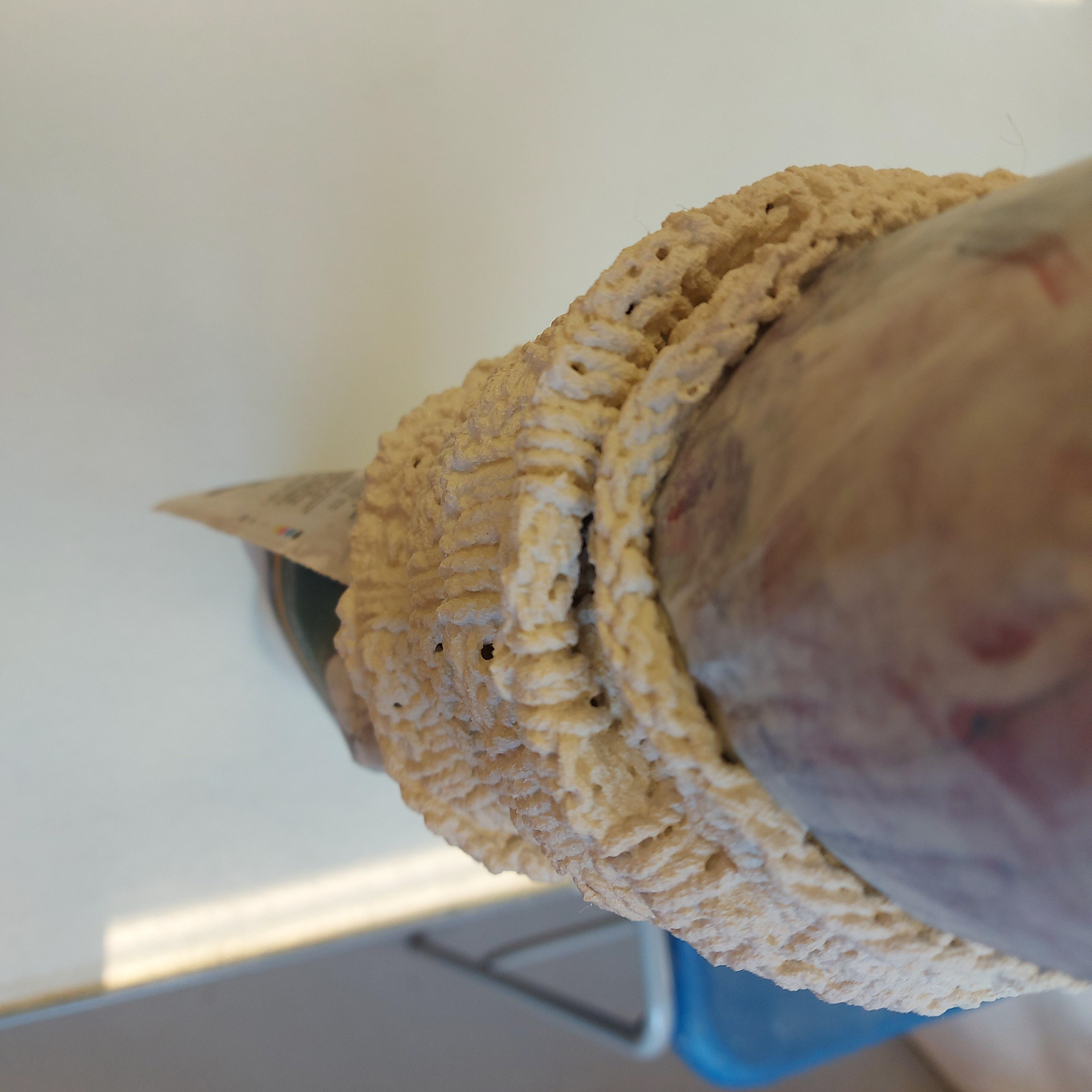
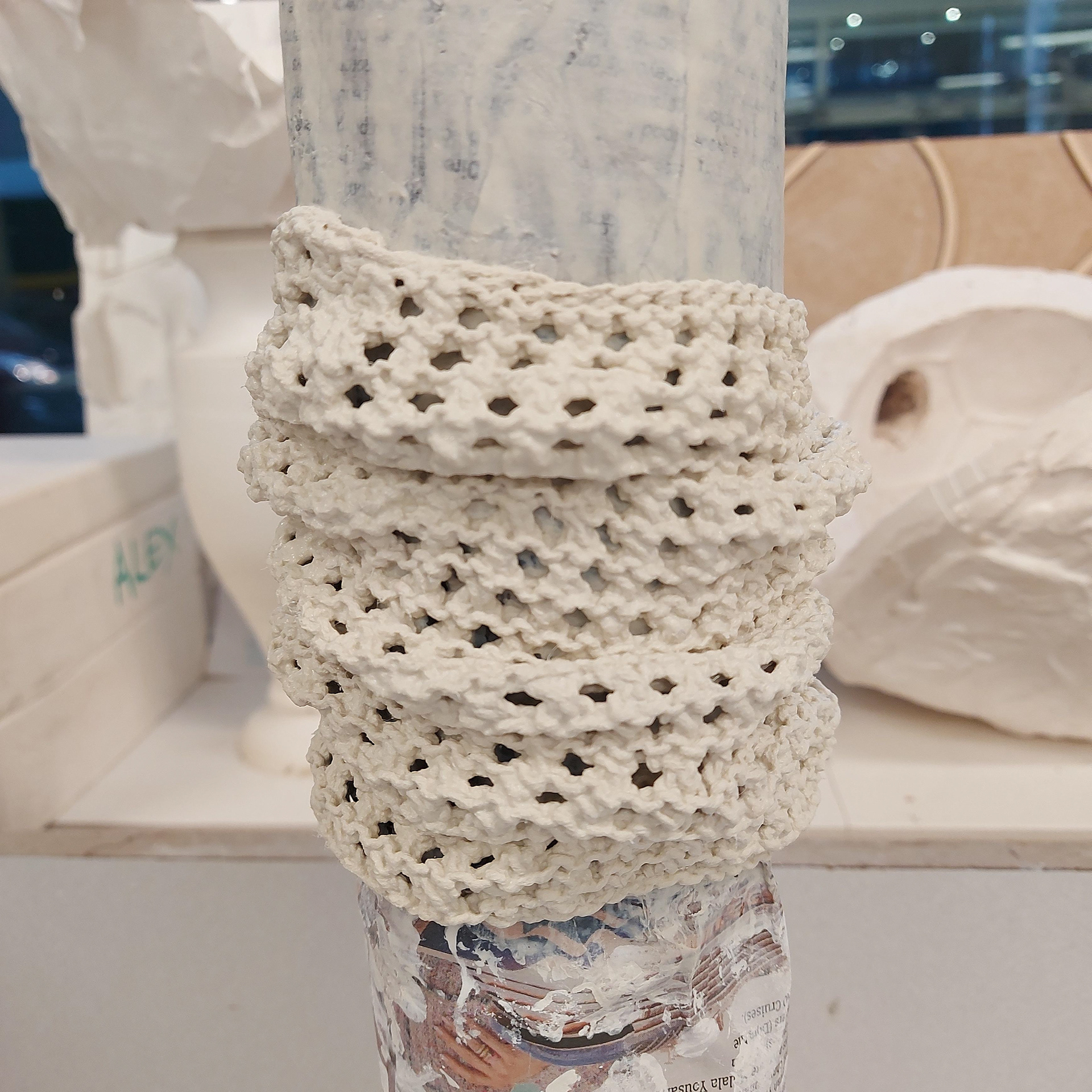


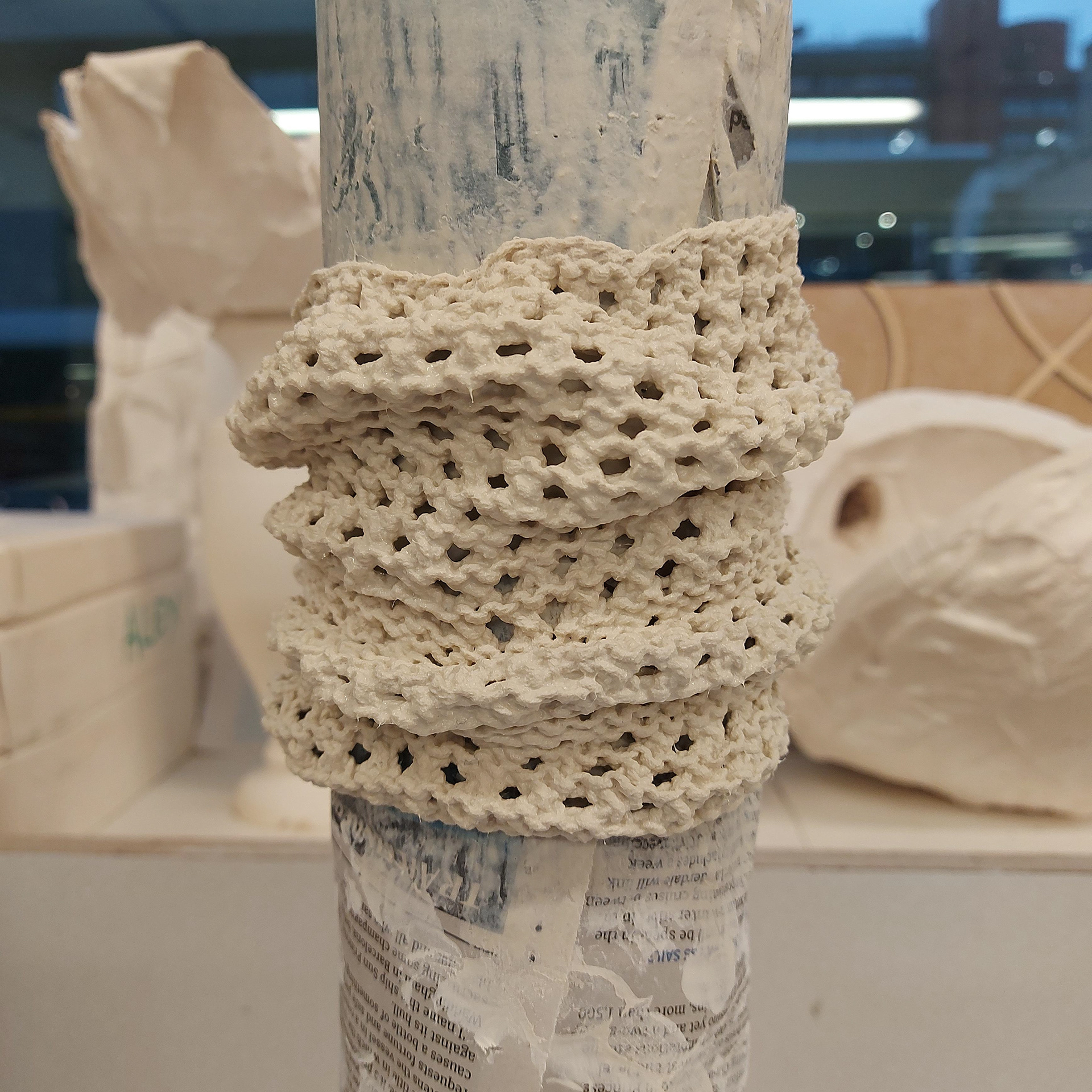
Above are holes in my knitted tube that I'm hoping gives more of a contrast to the yarn I will put inside. I am liking how the knitting is scrunching against each other and is able to stay in place due to the tightness of the cardboard cylinder.
Formative Review and Tutorial 18/11/24
Start thinking about how my objects can be installed and think about how this translates to a refined object. Use gravity and my knitting knowledge to be able to manipulate shapes and weighting within my knitting. I will add more primary and secondary research towards my project and externalise my practice more.
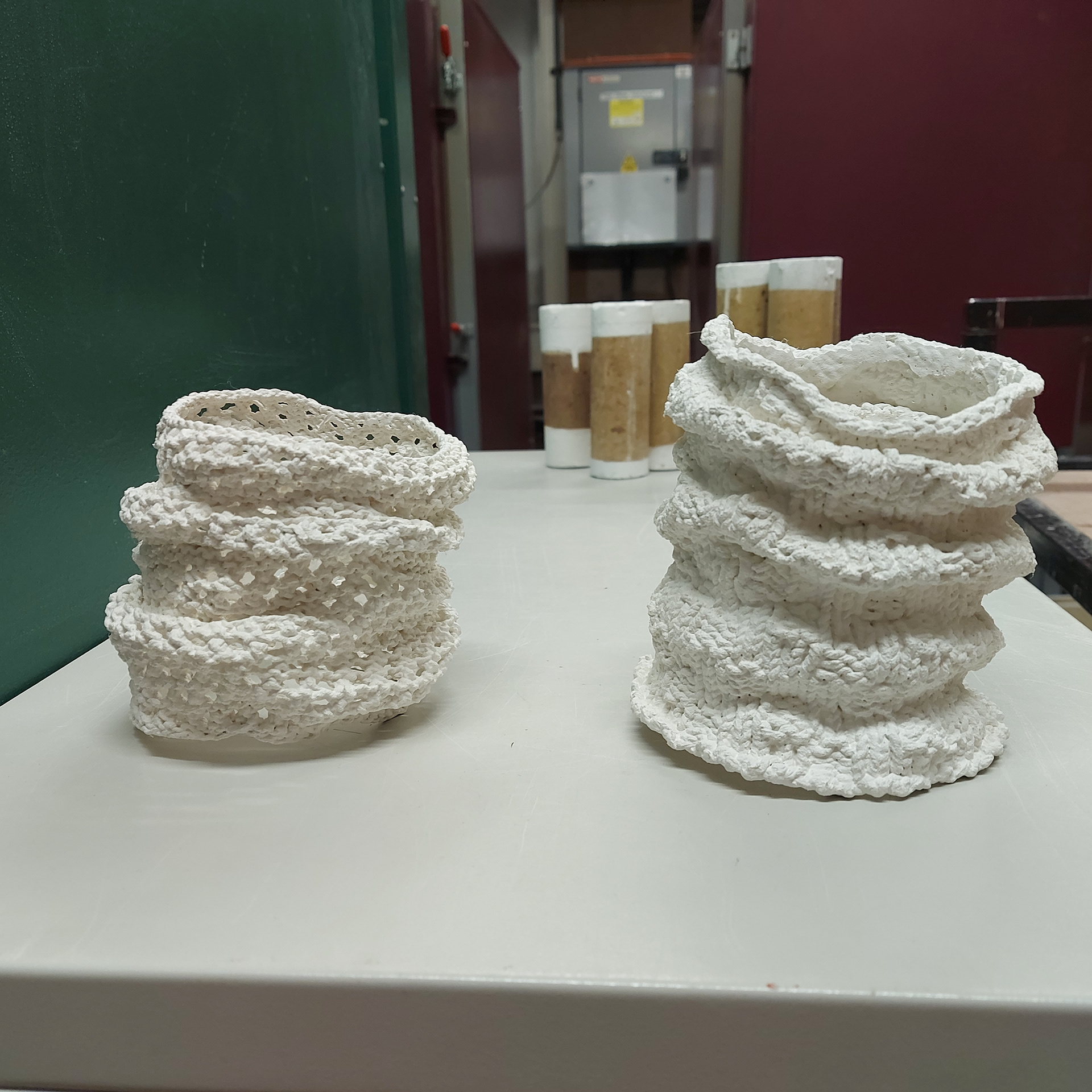
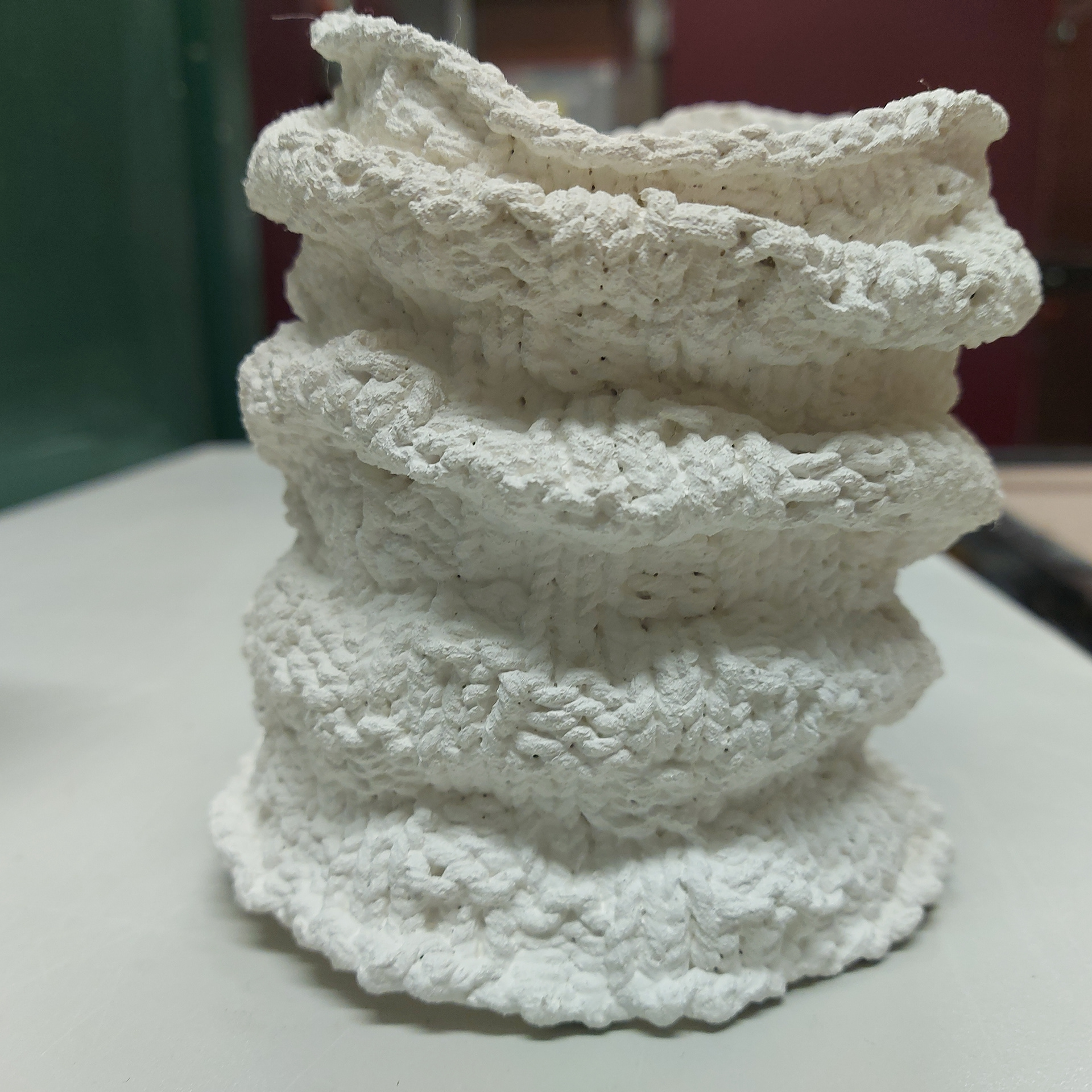
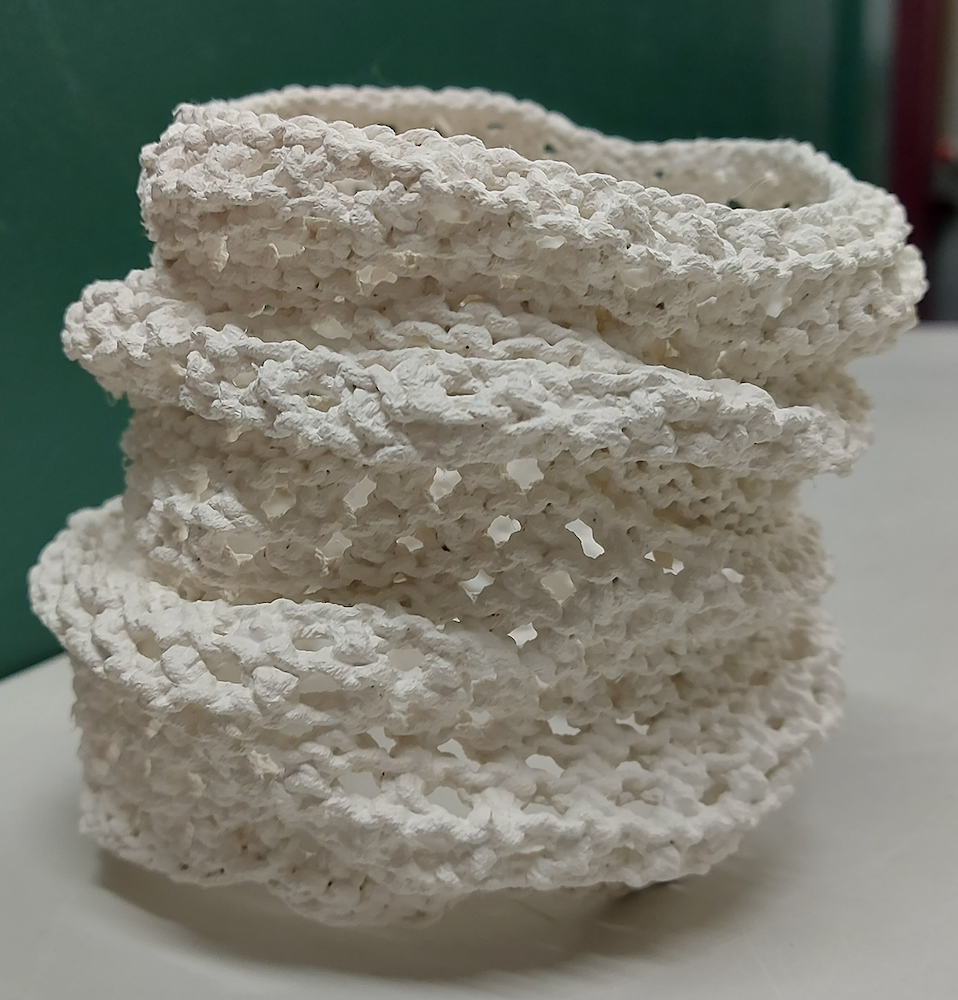
Due to the use of different weights of yarn and different stitches, although I increased the amount of stitches to keep the diameter similar, there is a difference in size, especially due to the compressed nature of the knitting.
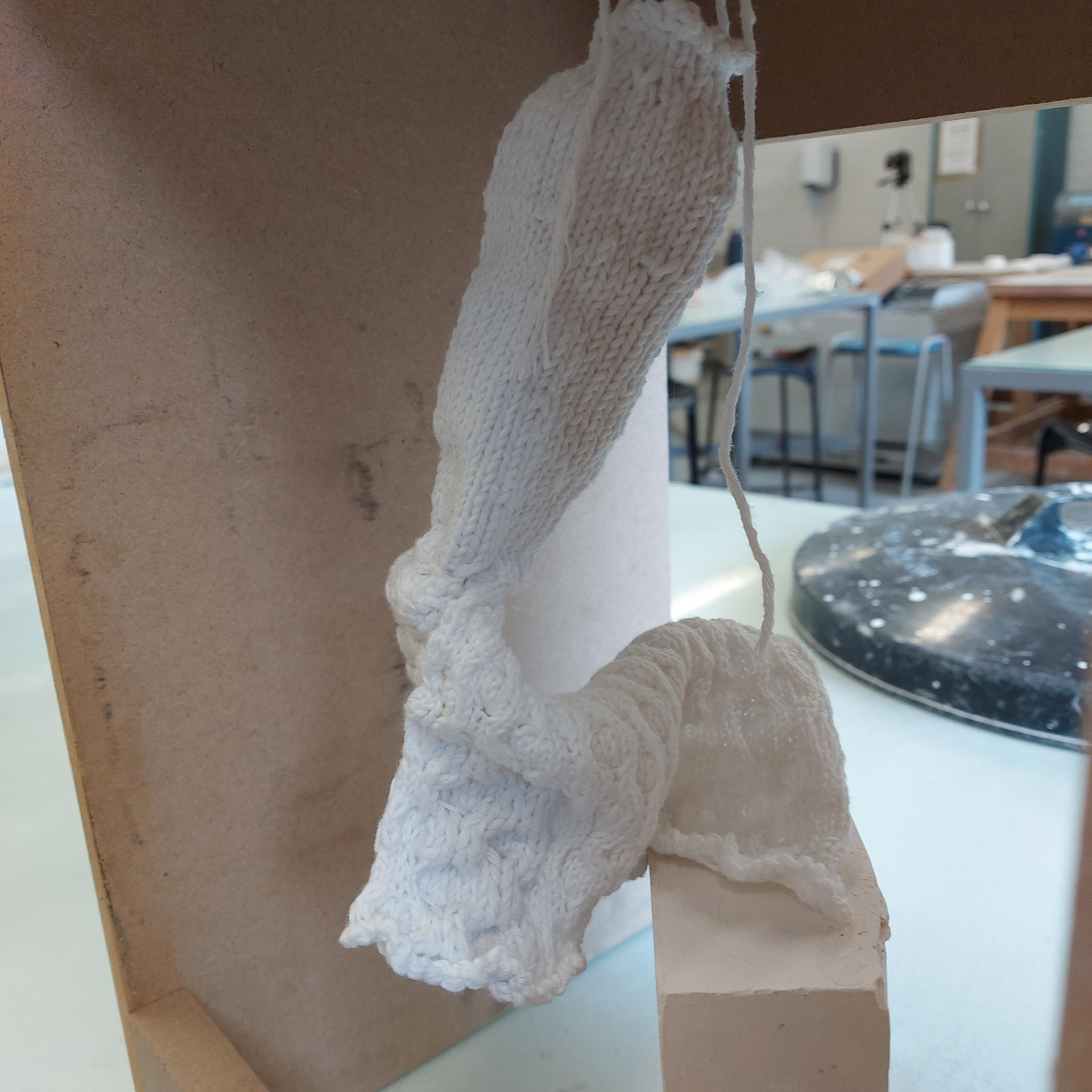

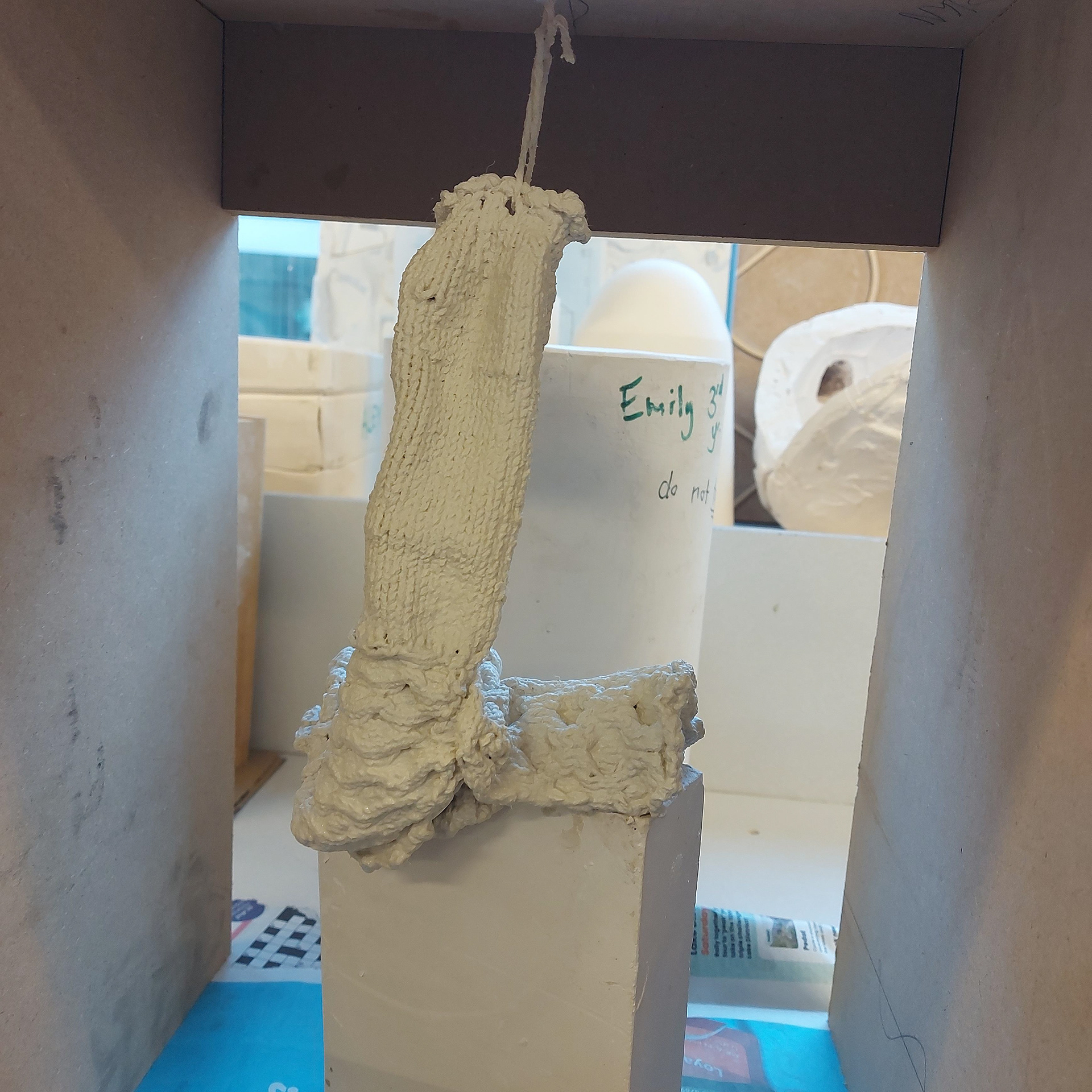
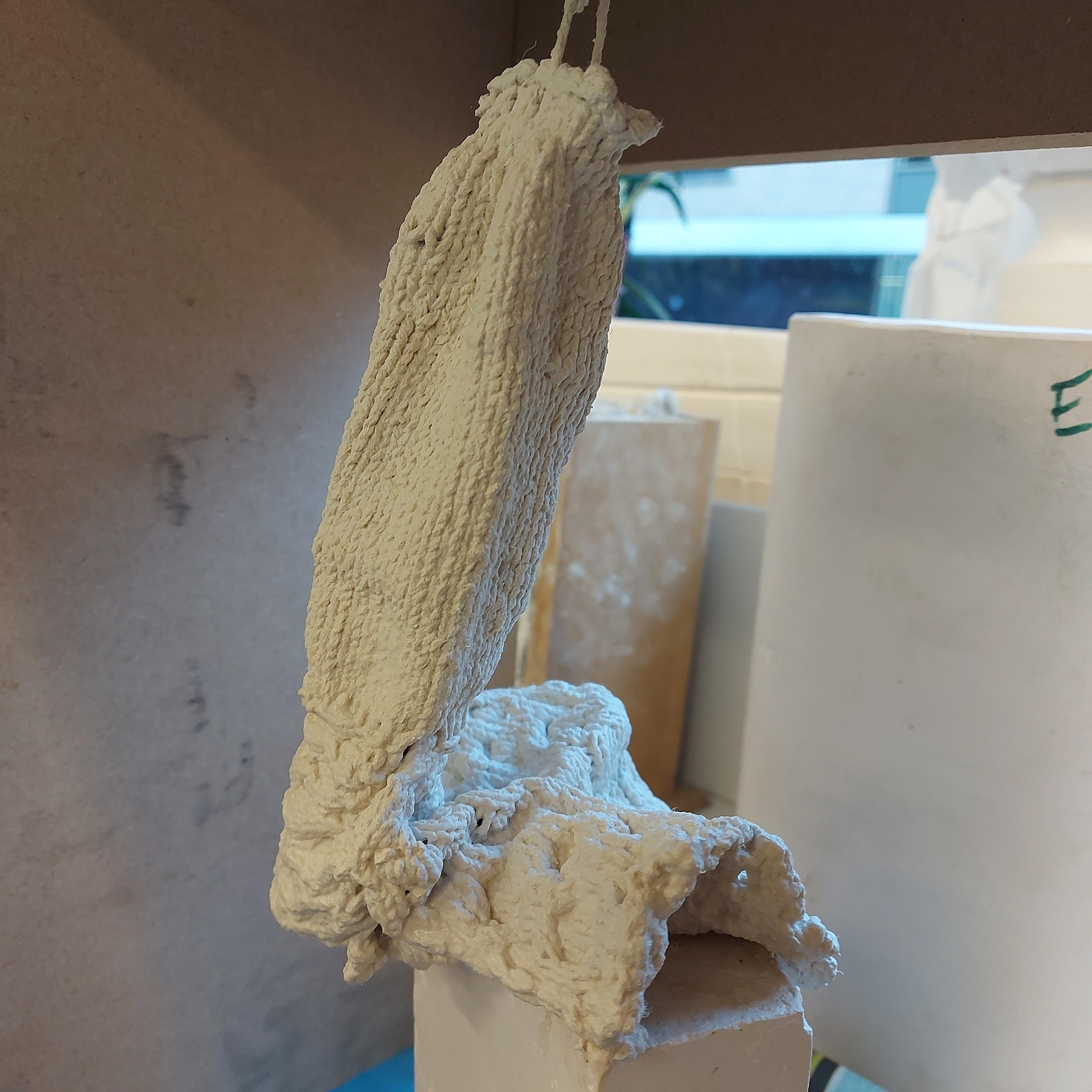
I attached two pieces of my knitting together. Throughout the piece I used two different weights and in the cabled square I knitted some thicker weight yarn in some parts in order to see if I can control the movement of the knitting when letting it dry in the porcelain slip. When knitting the more cylindrical shape, I used increases and decreases within my knitting rounds to change the shape and this made it increase the further it got up to the top of the piece. I'm considering cutting into the top shape so that I can see the inside of the tube shape, however, I might decided to keep the material partly hidden.

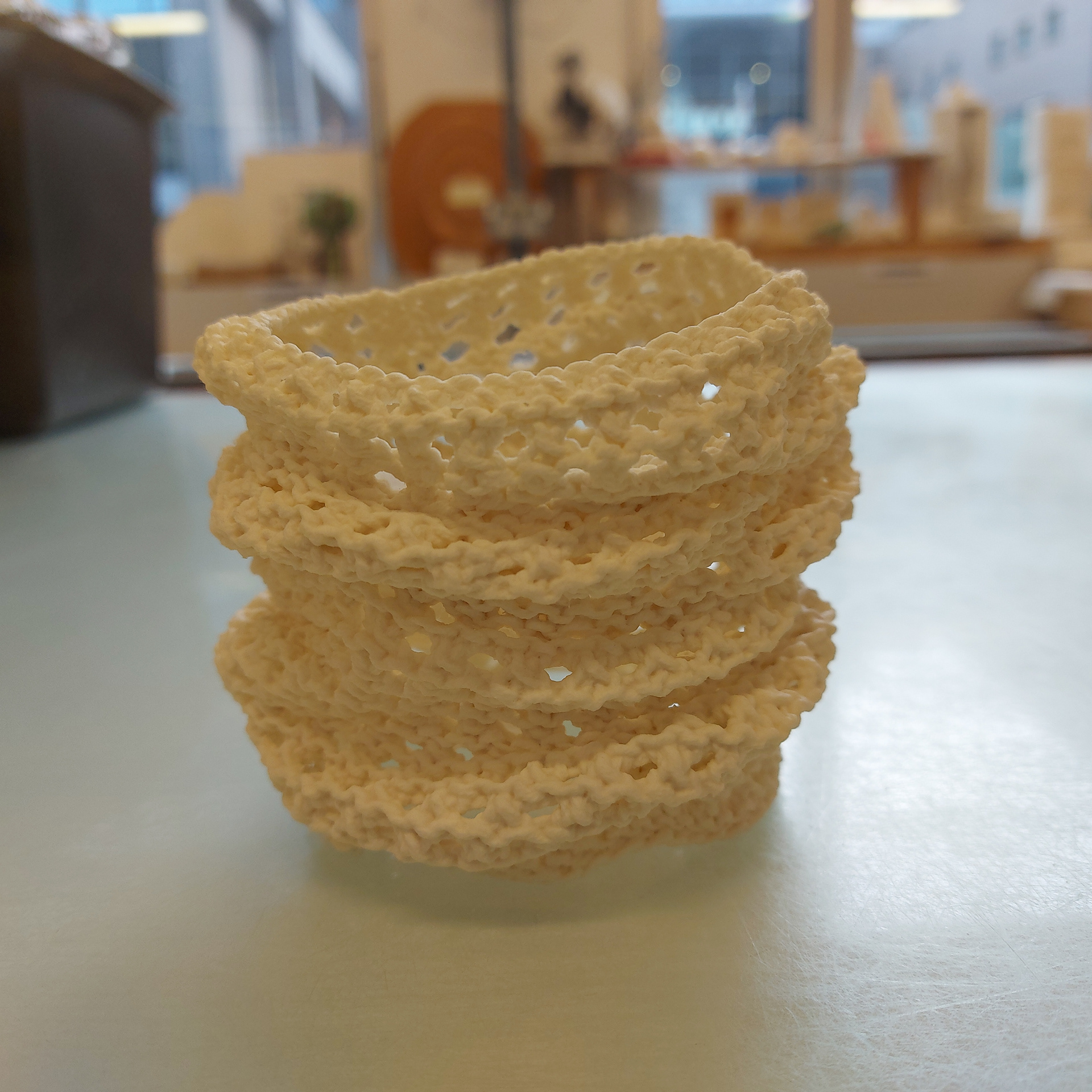
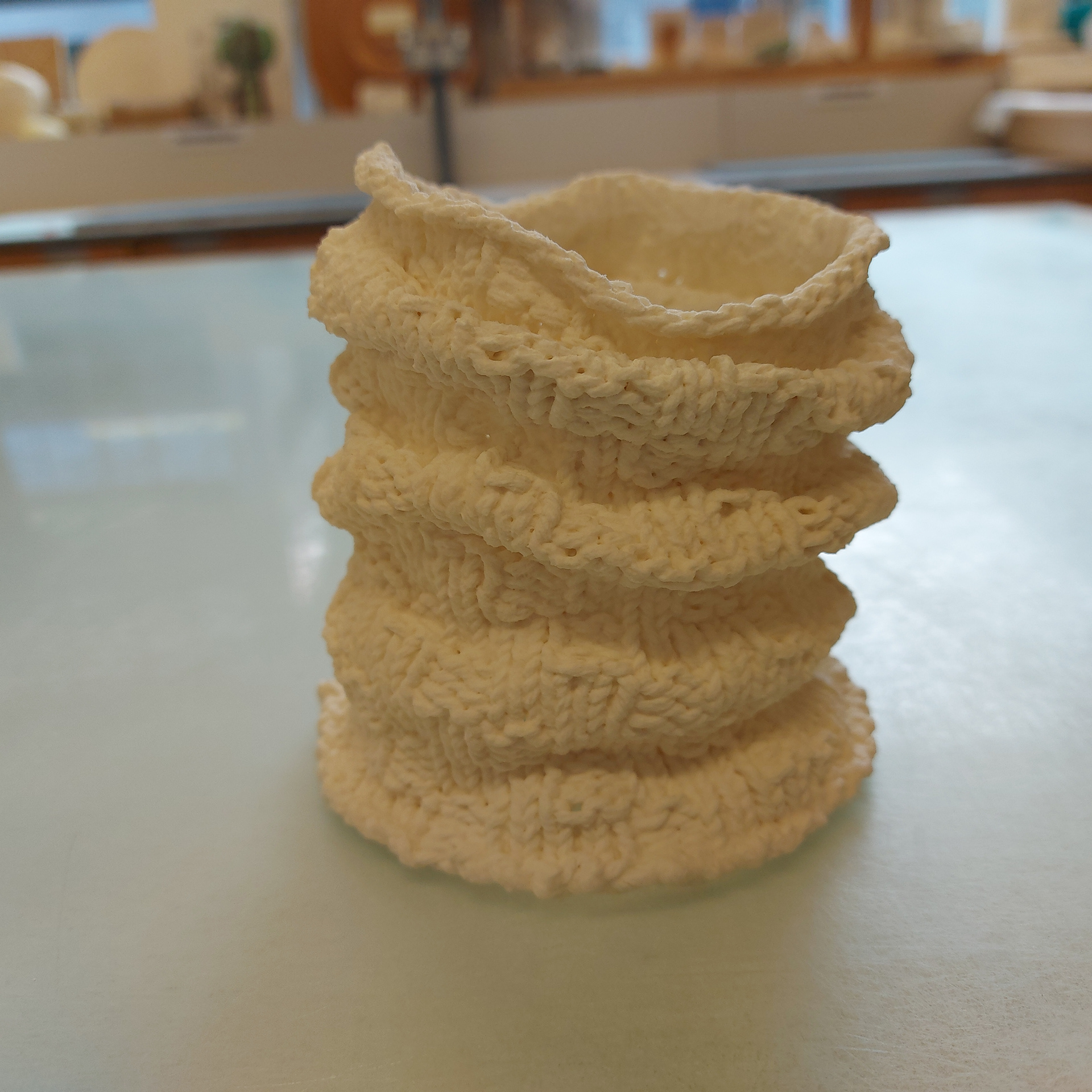
These are the cylindrical pieces fired to stoneware. I like how these came out, however the inside isn't to the level I want it to be as there are parts where the slip has flattened out against the newspaper when drying. Although knitted material will be pressed up against these pieces which will hide the flattened slip, I will need to figure out a way to sort this.
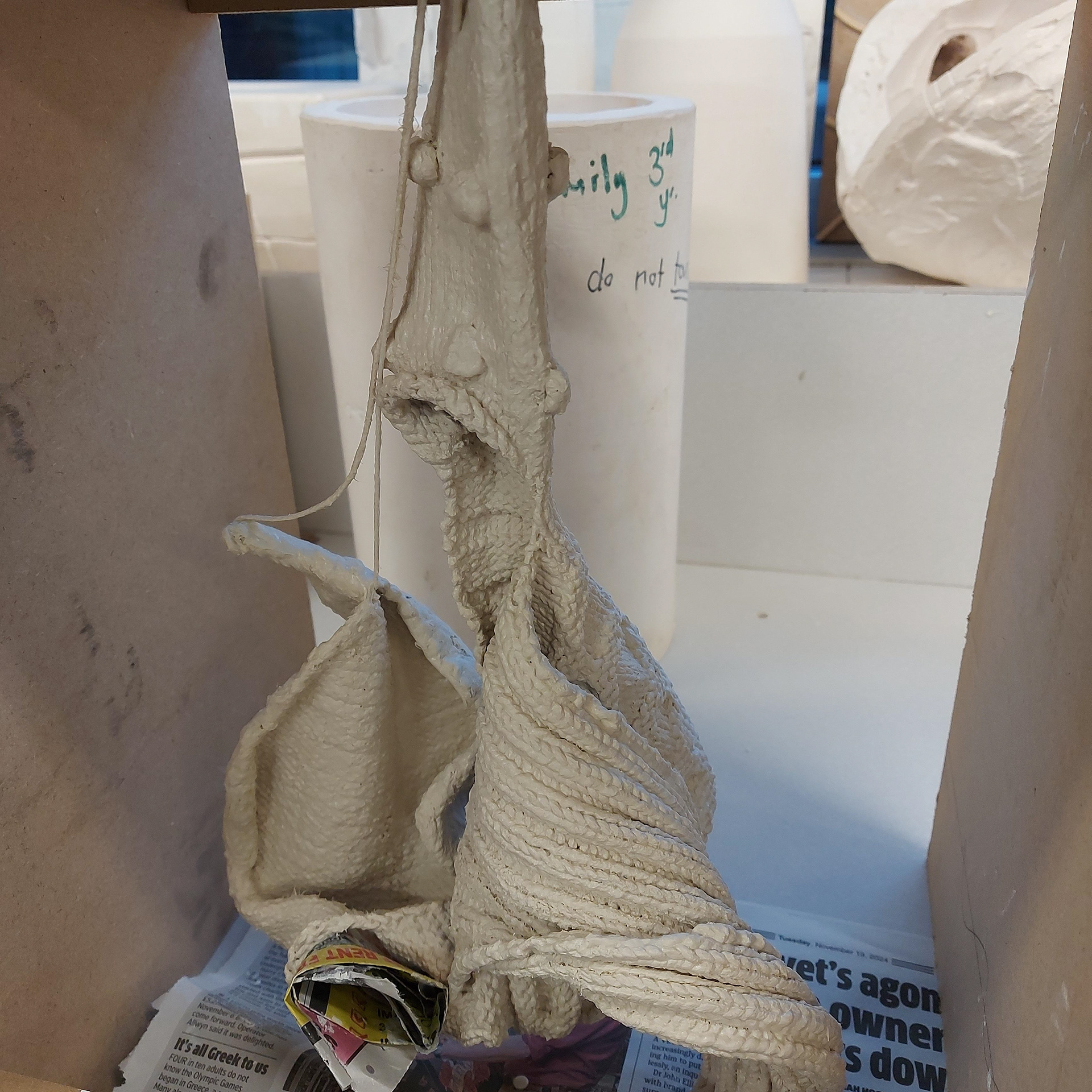
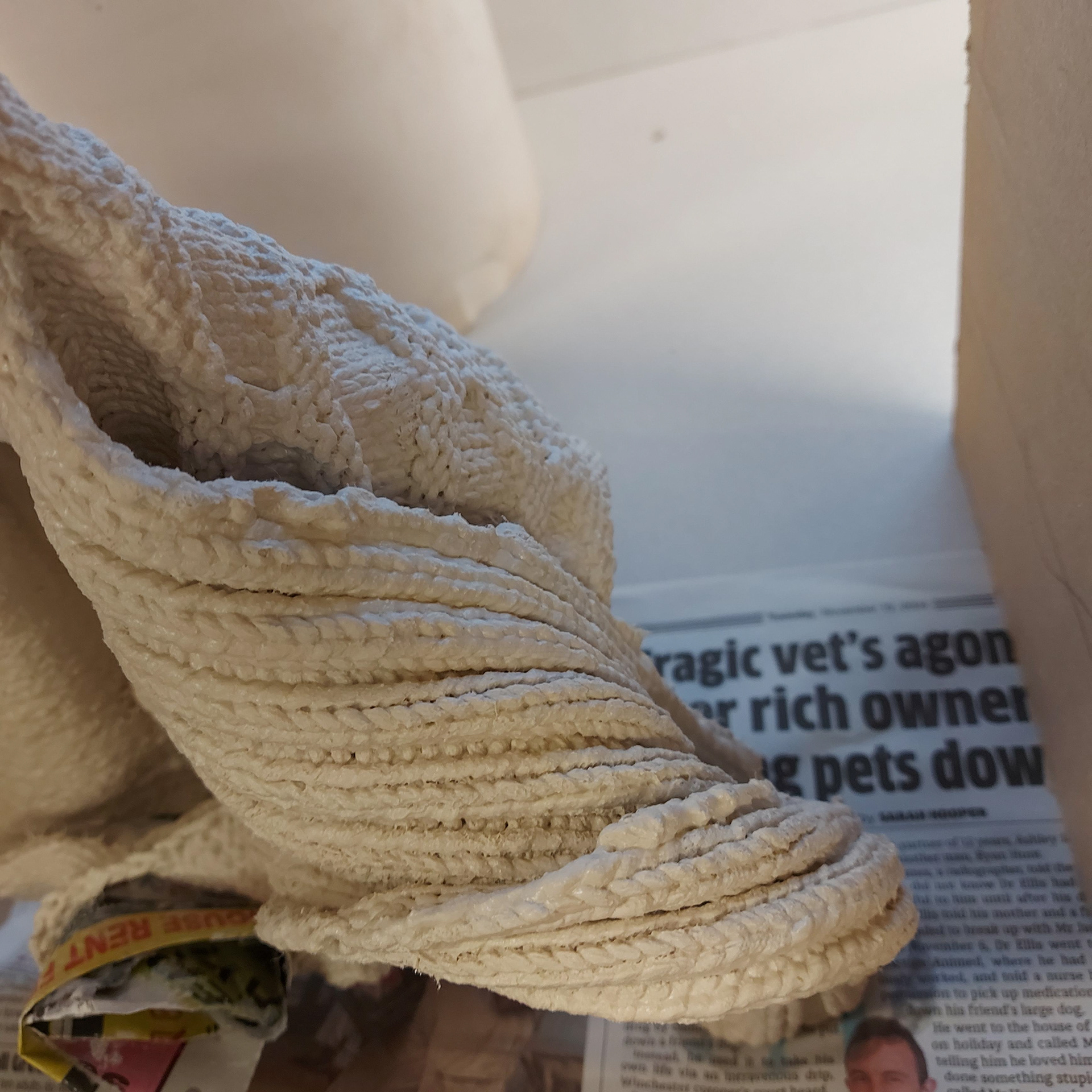
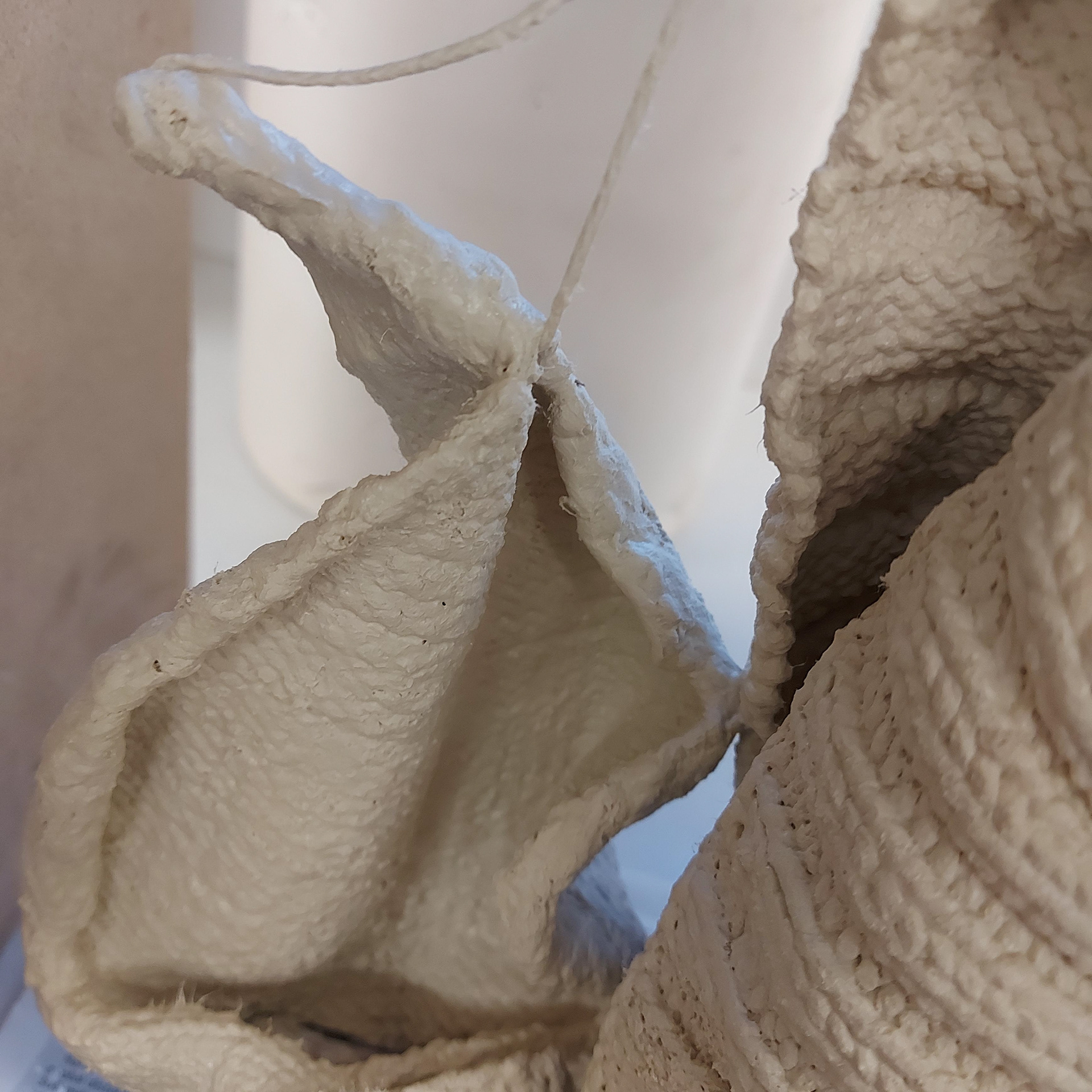
This piece has multiple parts to it. I have a knitted dome shape with three knitted tube like shapes knitted out of the the dome. I have tried to create range using different shapes and textures. I am not happy with the way some of the pieces turned out. Due to the multiple moving parts, some parts have slip that is too thick and you can't see the stitches as clearly, this is due to me not seeing a part of the knitting that wasn't covered and me putting part of the work in slip again. Also I wasn't able to wring all of the slip out quickly enough. I have learnt from this and will take this forward.



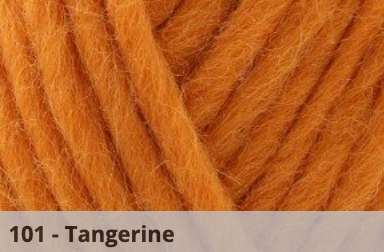

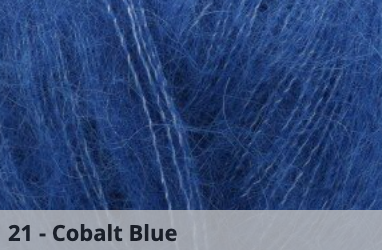
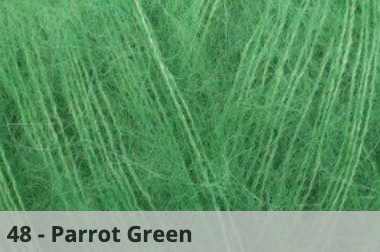

These are the yarns I have ordered. I have tried to stick to four main colours that I was using within my sketches. I believe using these colours will contrast well with the porcelain slip colour when in stoneware and I have chosen wool and mohair as they are more fibrous and I have enjoyed working with these during my experimentation with the ceramic pieces. I enjoyed using natural fibres due to the way they hung and interacted with the ceramic pieces.
It is important to note that the pink mohair looking fibre is not mohair but is a mix of alpaca and silk. I made the decision to buy this instead of real mohair like the other colours, because the colour matched the wool better than the pink in the mohair. This will allow me to have a further mix of fibres within my work, however, I will refer to it as mohair throughout my work as that is the visual effect it has.

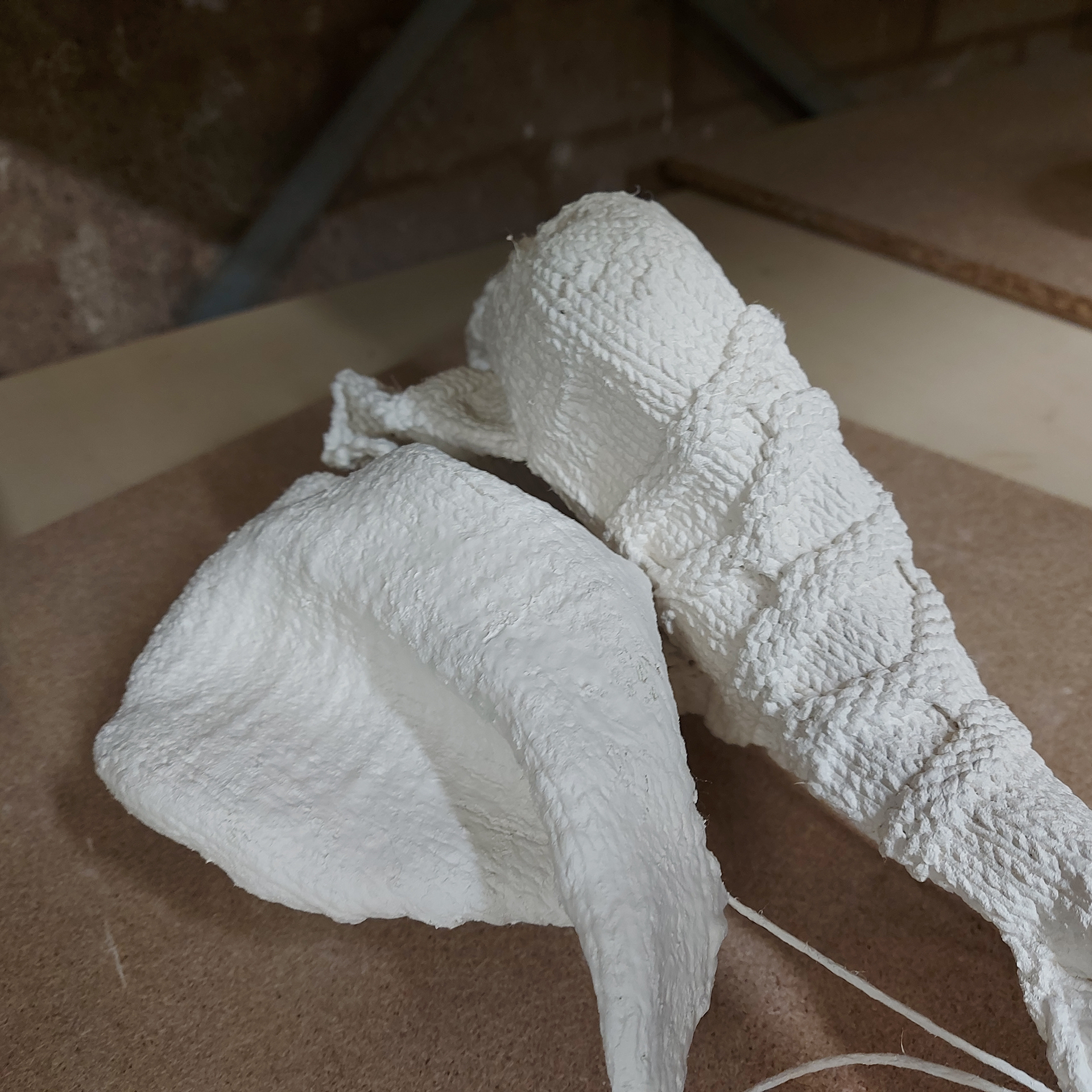
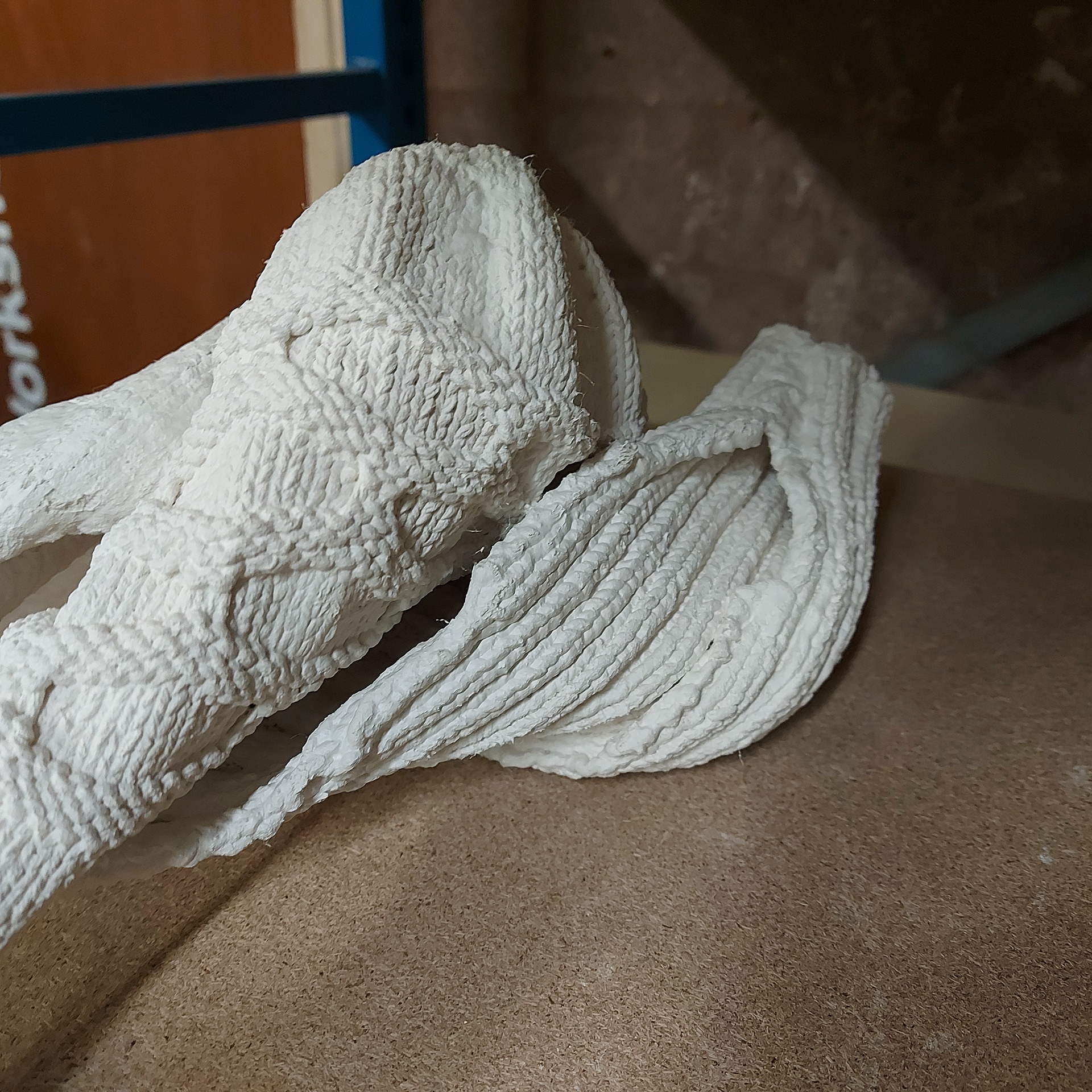
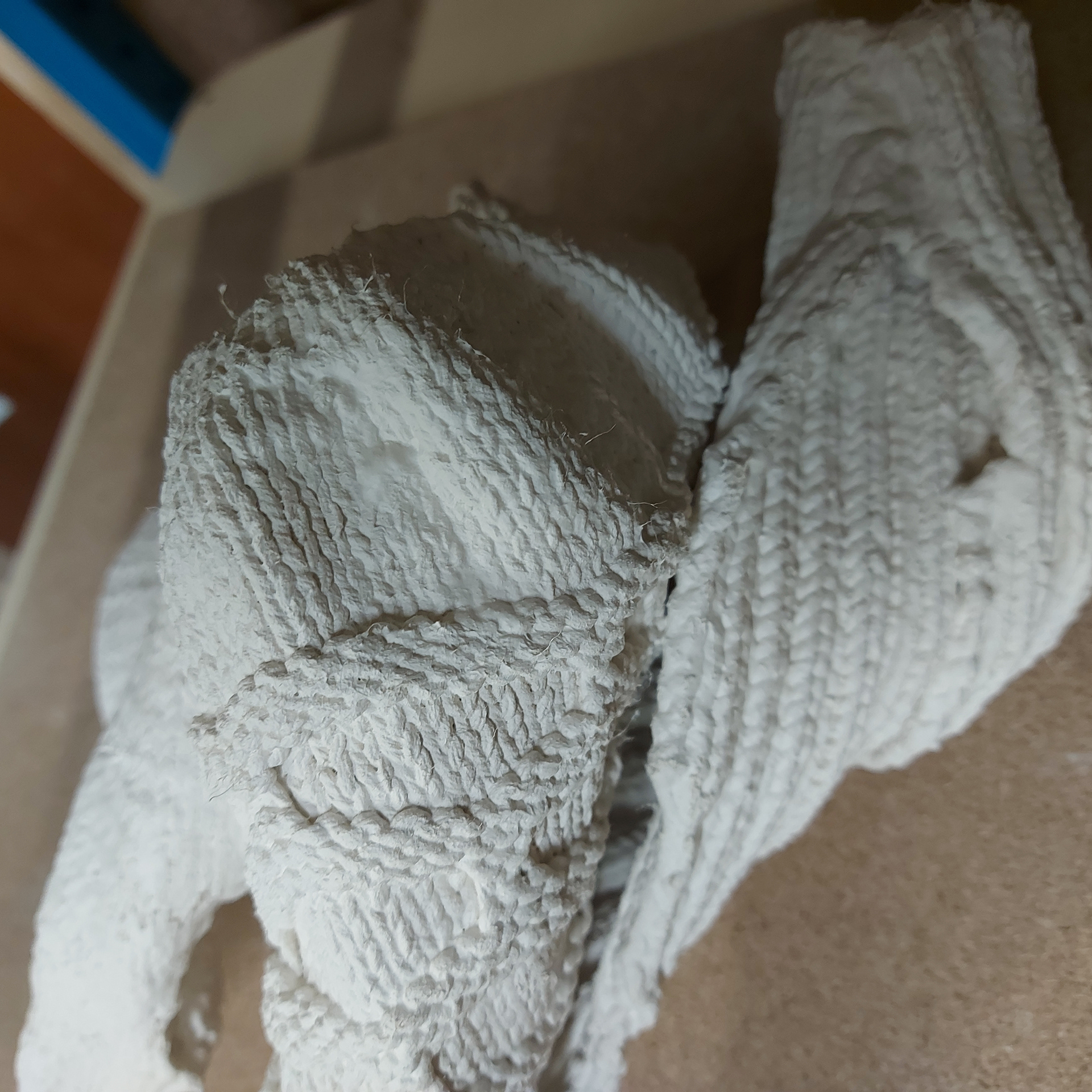

This is the dried work that was hanging. The piece came out better than I thought it would, and I have decided to keep the string that was holding it up. It may be that the string ends up crumbling but it would be interesting to see if it stays. The piece almost looks like a duck but I think it will be interesting to see how I can mix this with knitted material.
Tutorial 28/11/24
Look into how artists present their objects and how the objects can be part of the space. I should think about how my sculpture can portray material and object understanding.

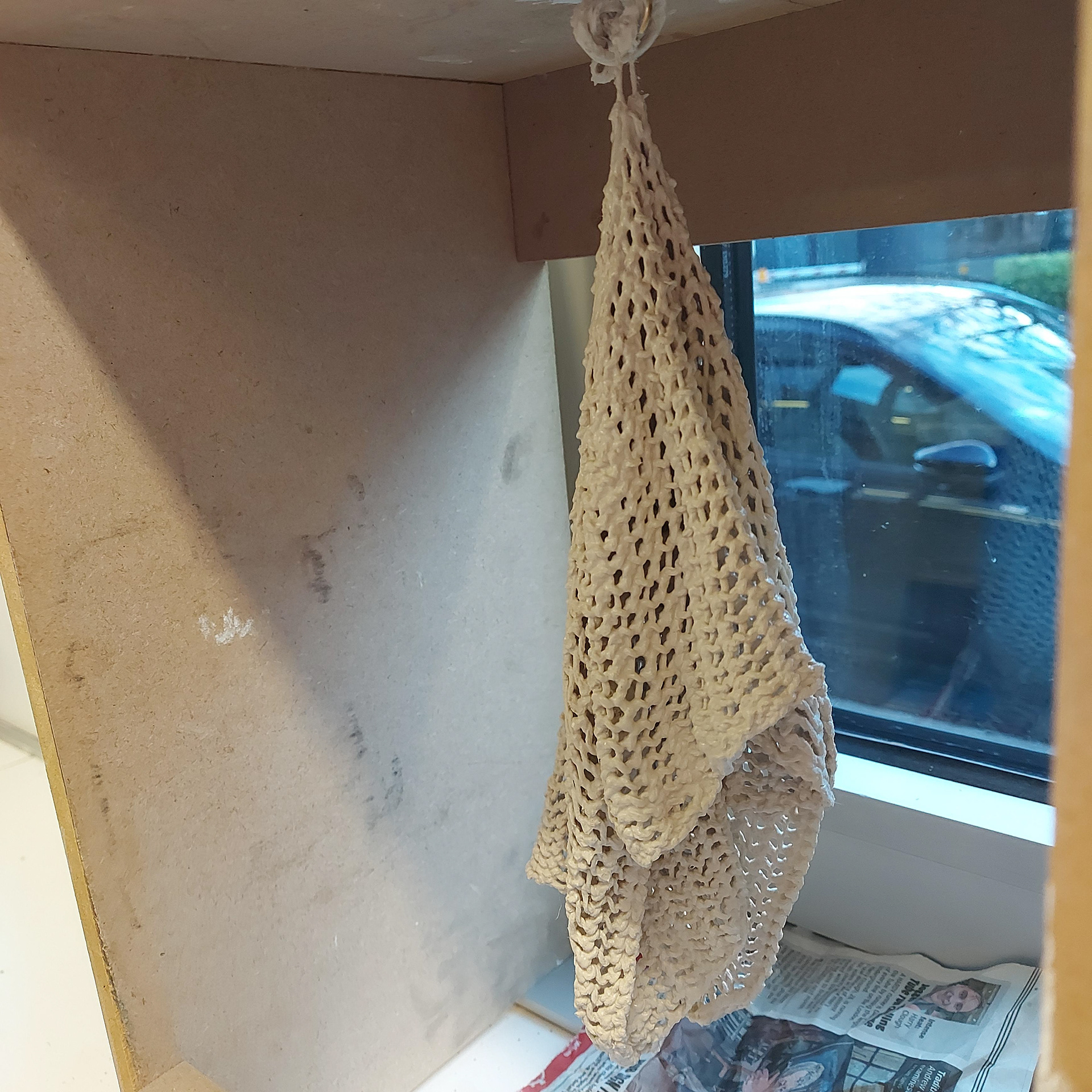


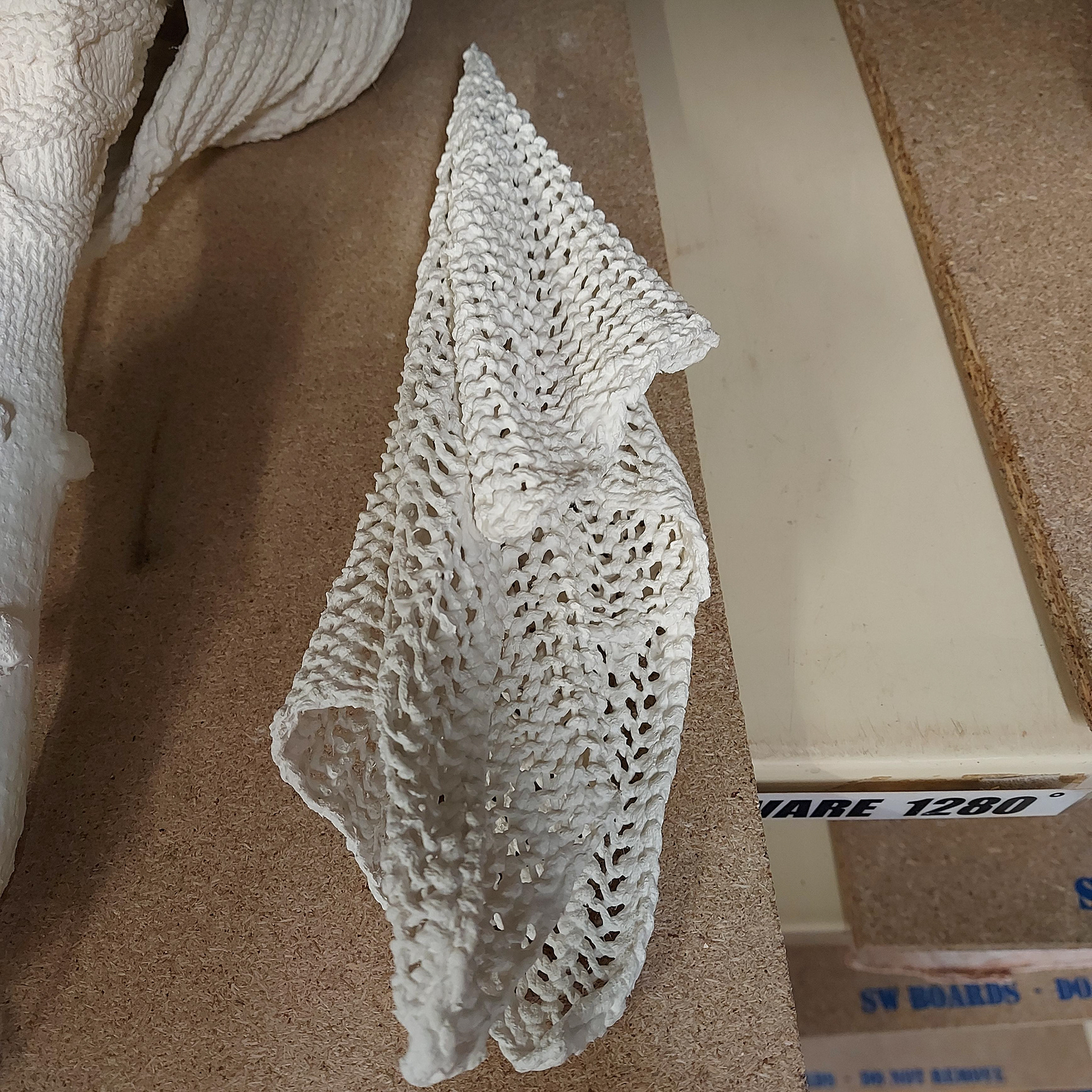
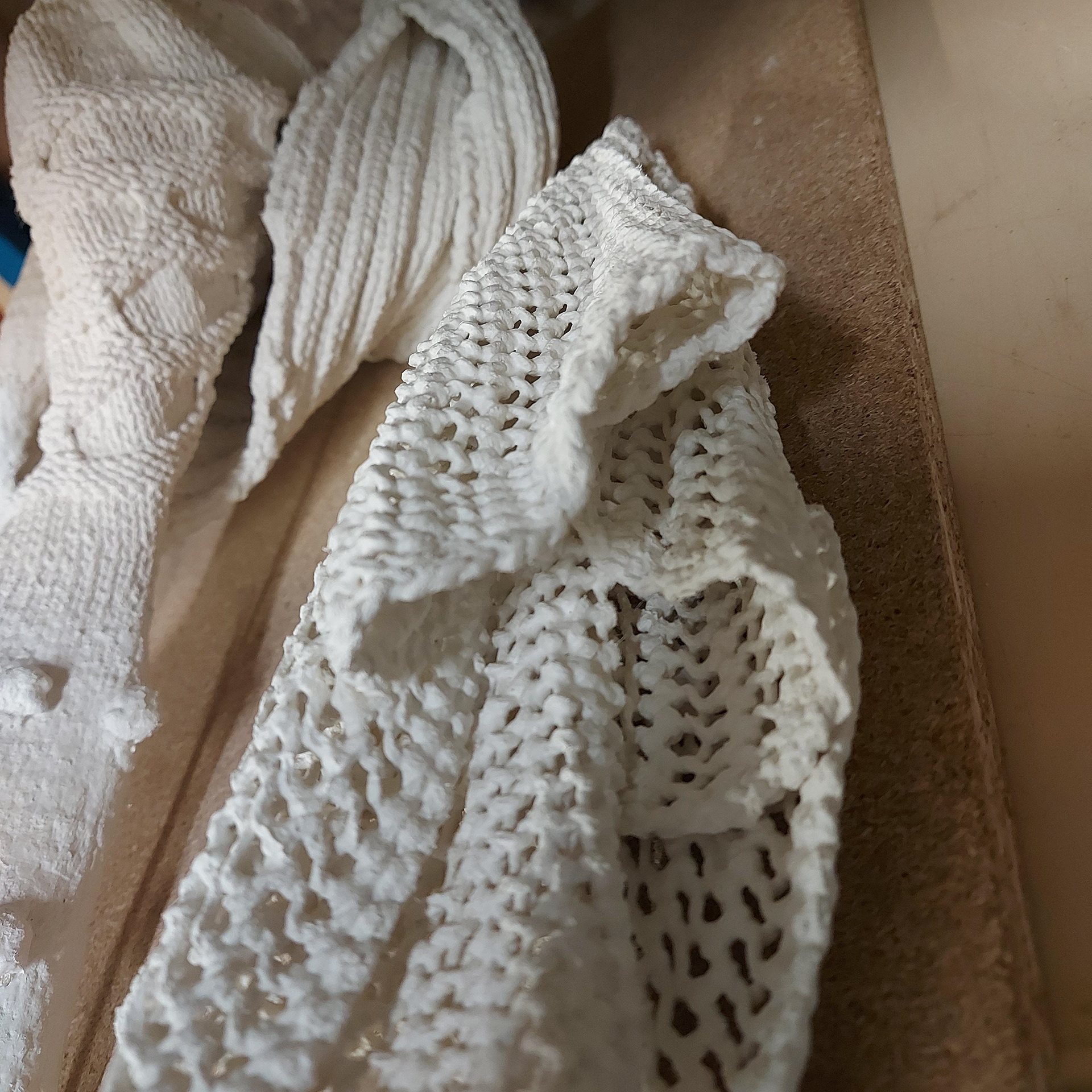
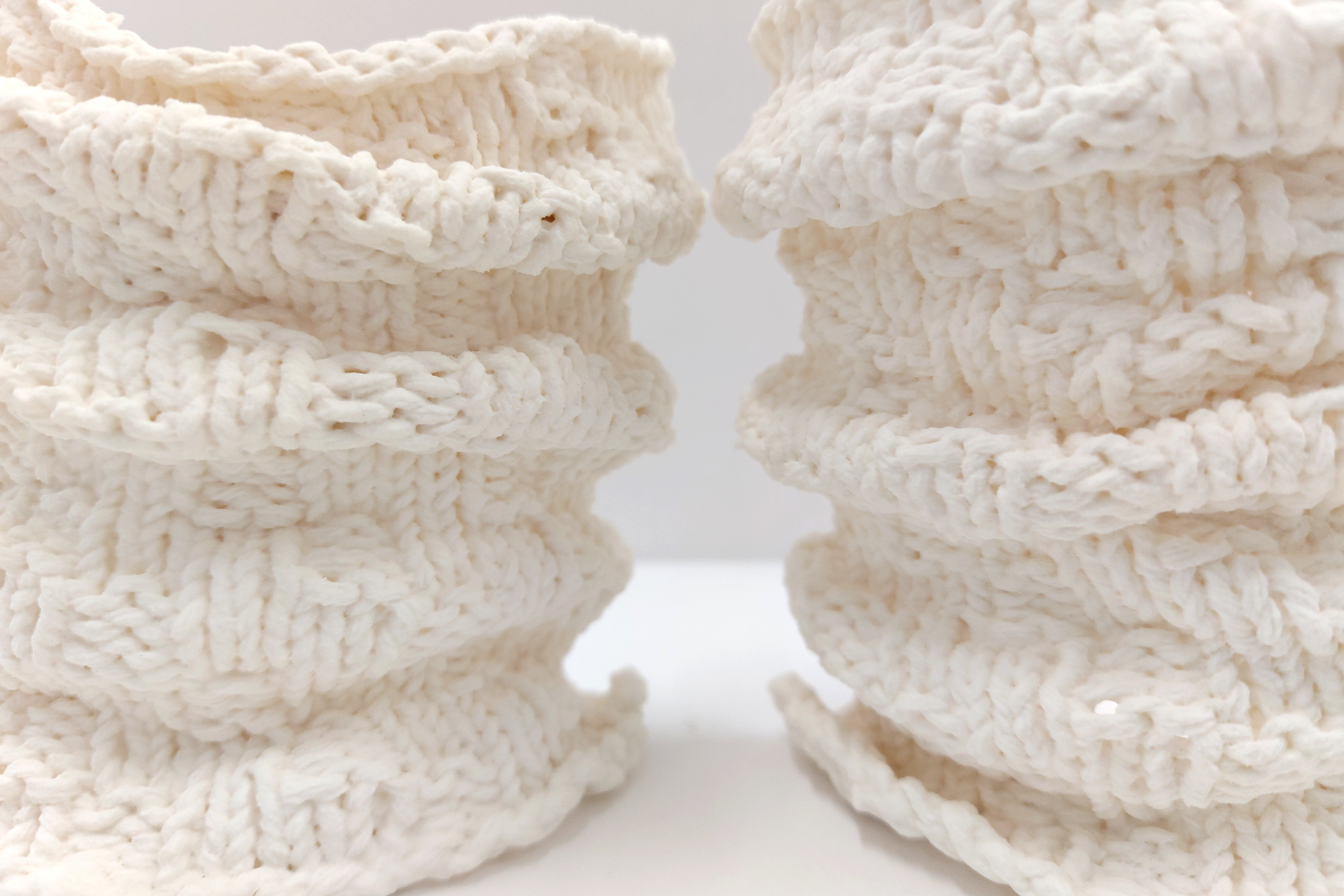



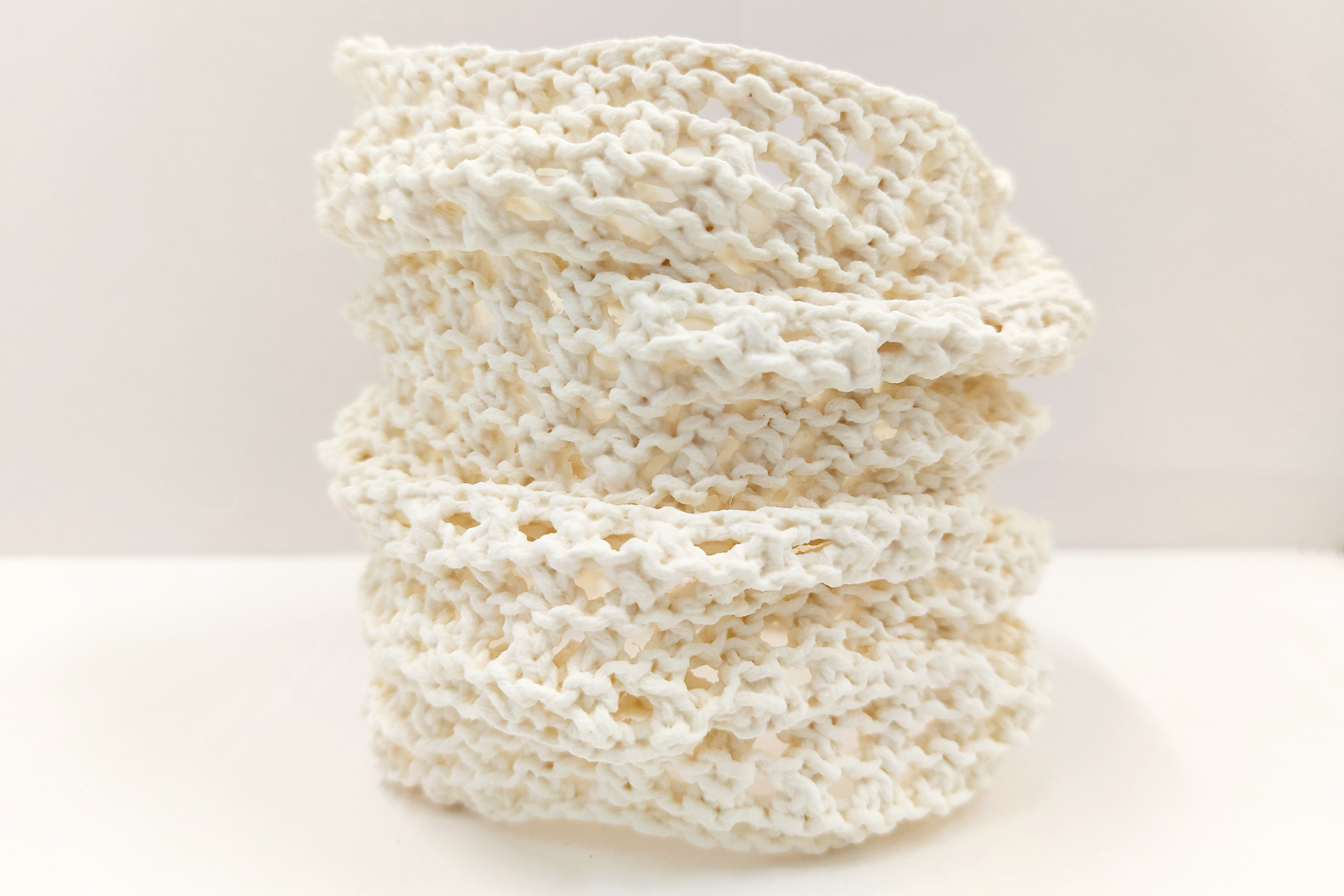
Before firing the pieces I measure them so that while they were firing, I could get started on knitting their knitted wool and mohair counterparts. In the end I didn't really use the measurements, but it was good to get an idea roughly of the size of the pieces.
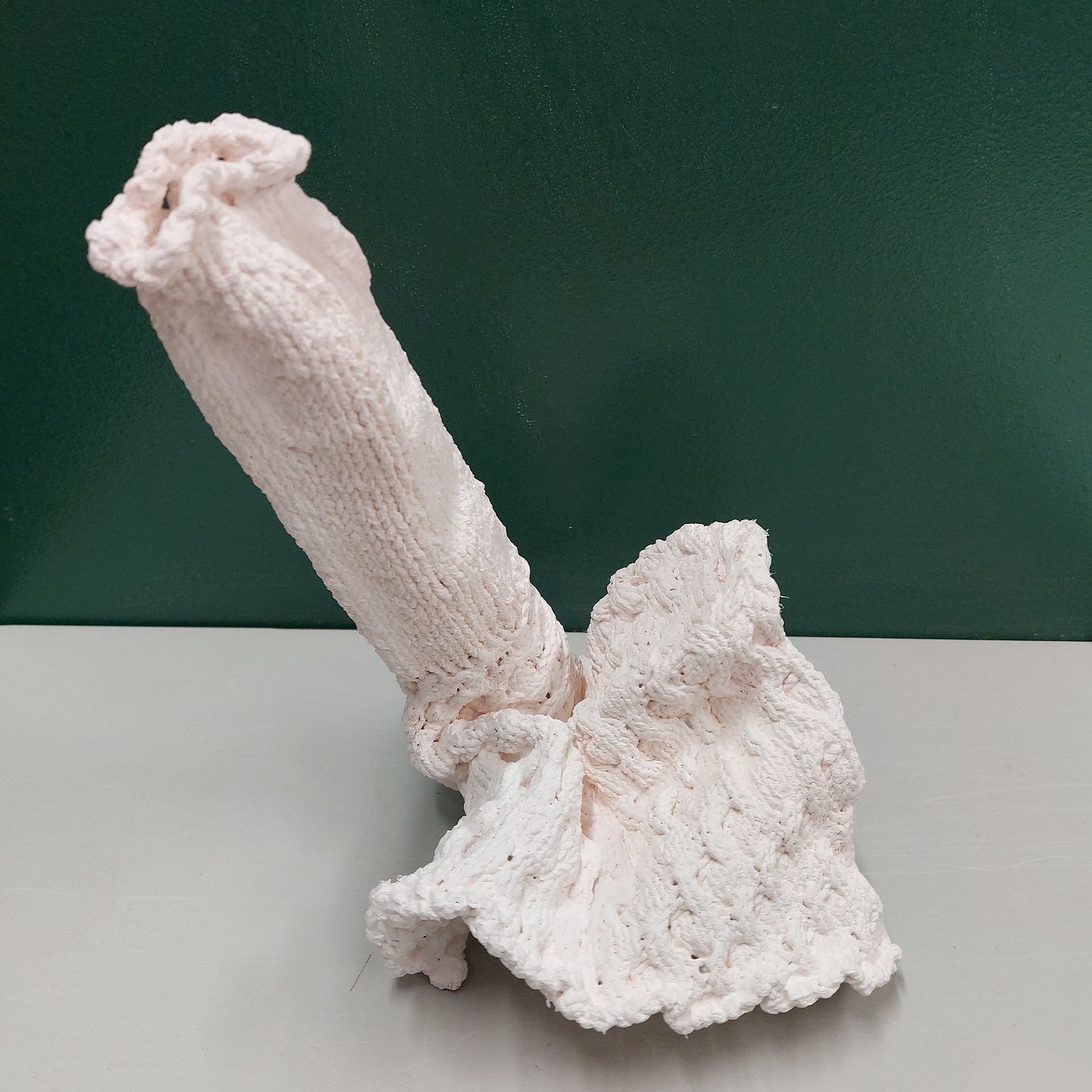
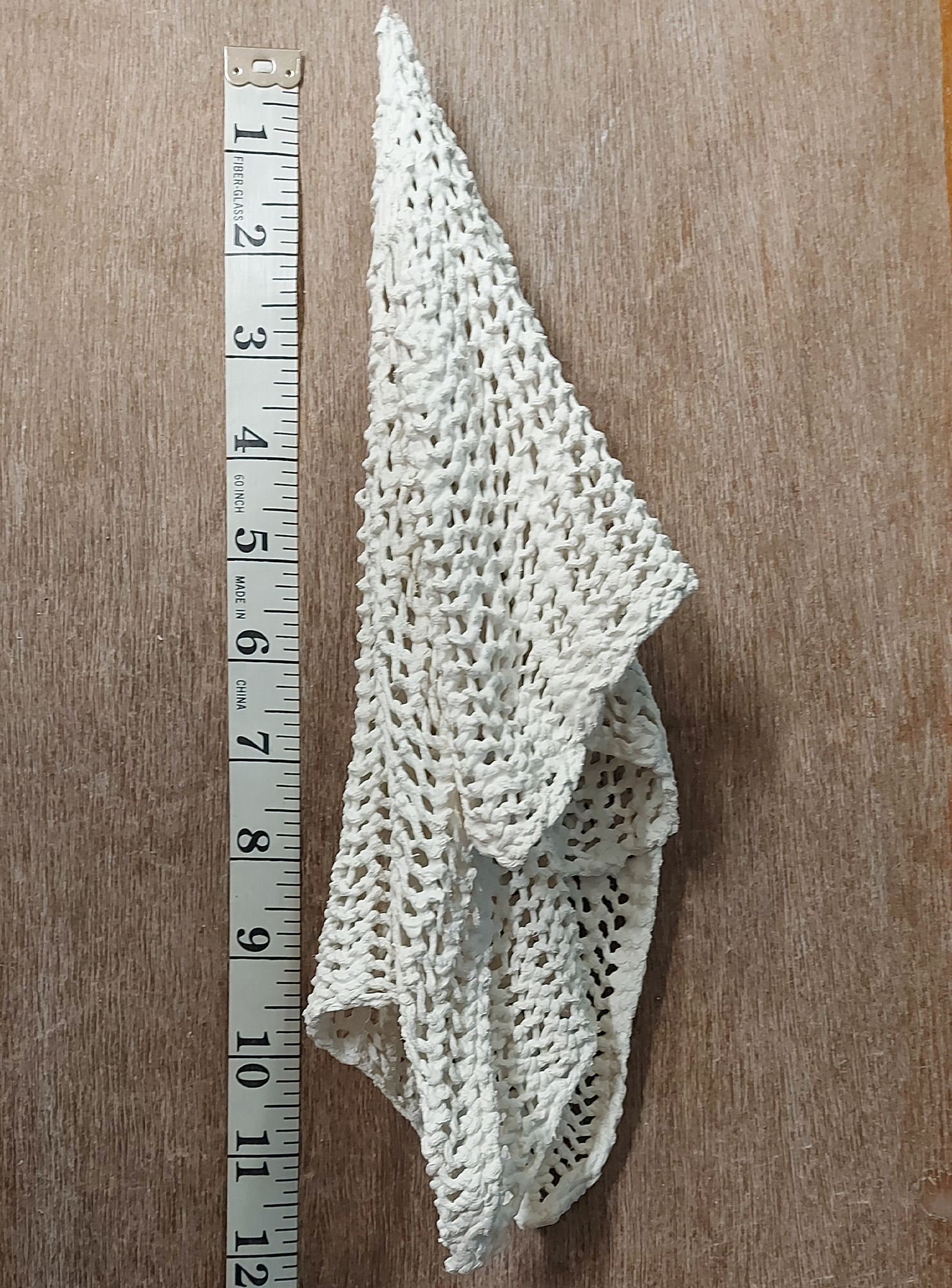

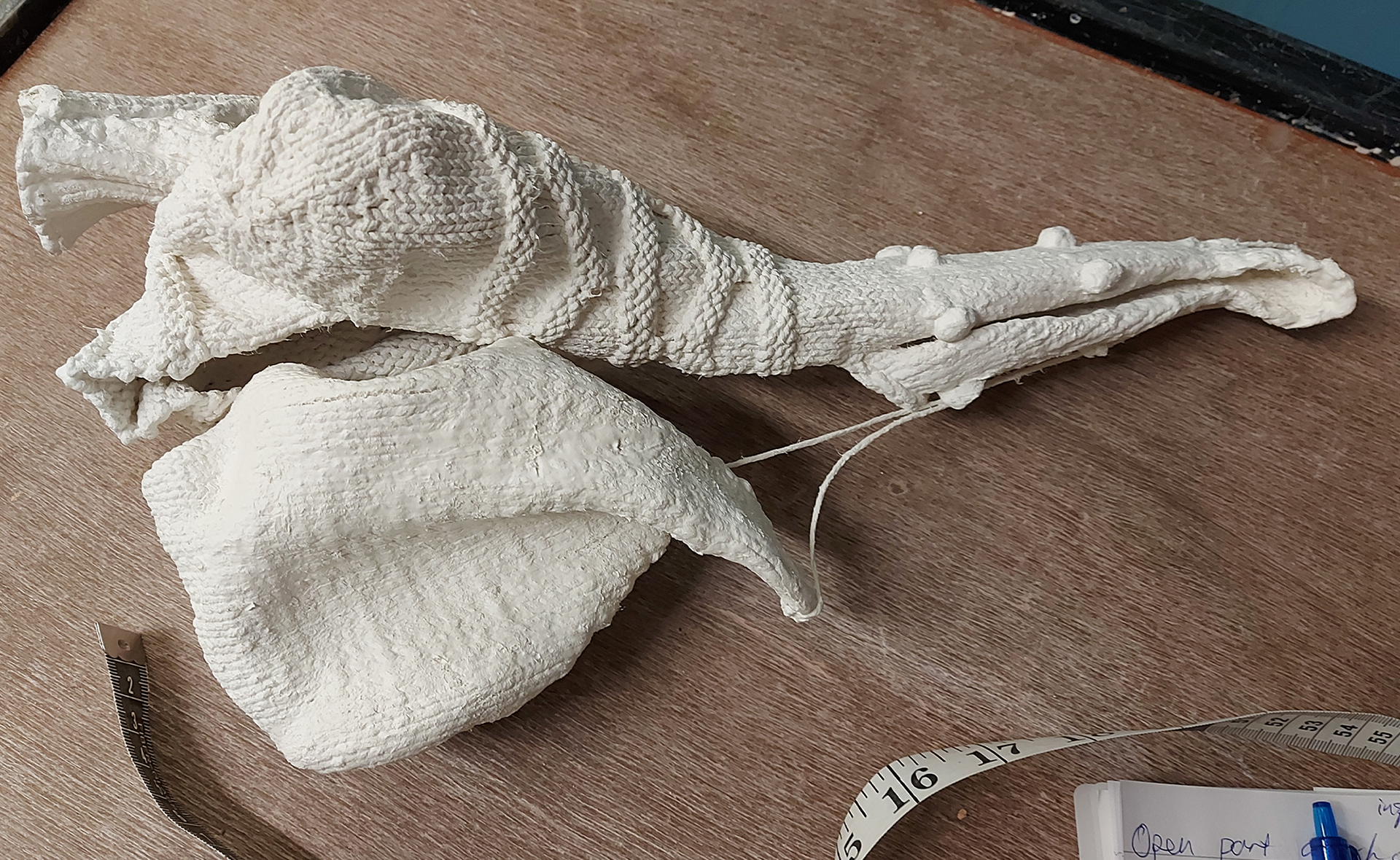
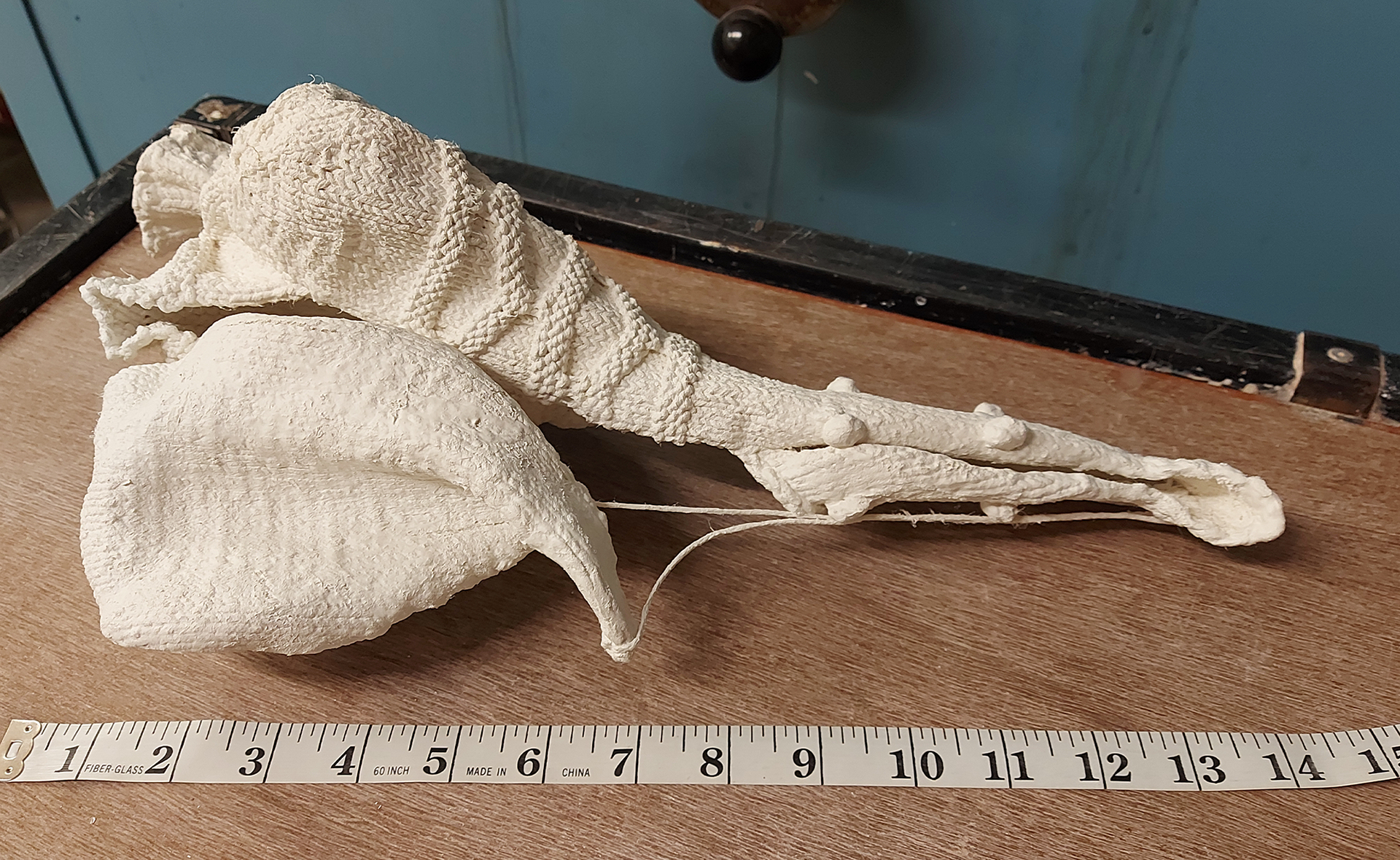
There was a delay with firing two of my pieces due to kiln sizes, however I was able to get the two smaller pieces fired first, due to being able to go in a test kiln to get fired. One went from bisque to stone ware and the other went from non fired to stoneware. I was happy with the way they both came out and they didn't slump in a particular direction.
The biggest piece was too big to go in the test kiln and as there was an undiagnosed problem within the kiln, my piece was put in as a way to see what the problem was. The kiln broke and my piece did break in two, however, the part that broke up was one of the parts I didn't like so I decided to not make this part of my final object overall. I did also find that the piece did slump quite flat but overall, you could see the stitches and I was happy with how it turned out. Although it wasn't the original work that I had put in, I was able to work with it and use it in a way that would still show the relationship between the knitted ceramic and knitted fibres.
The problem with the kiln was that it was on the high temperature for too long. This meant that the piece was more rigid and felt stoneware fired even though it had only been put to bisque. If I was to fire it again to stoneware, it wouldn't make much difference so I kept it as I could feel that it was sturdy when I picked it up and it was strong enough for me to work with.

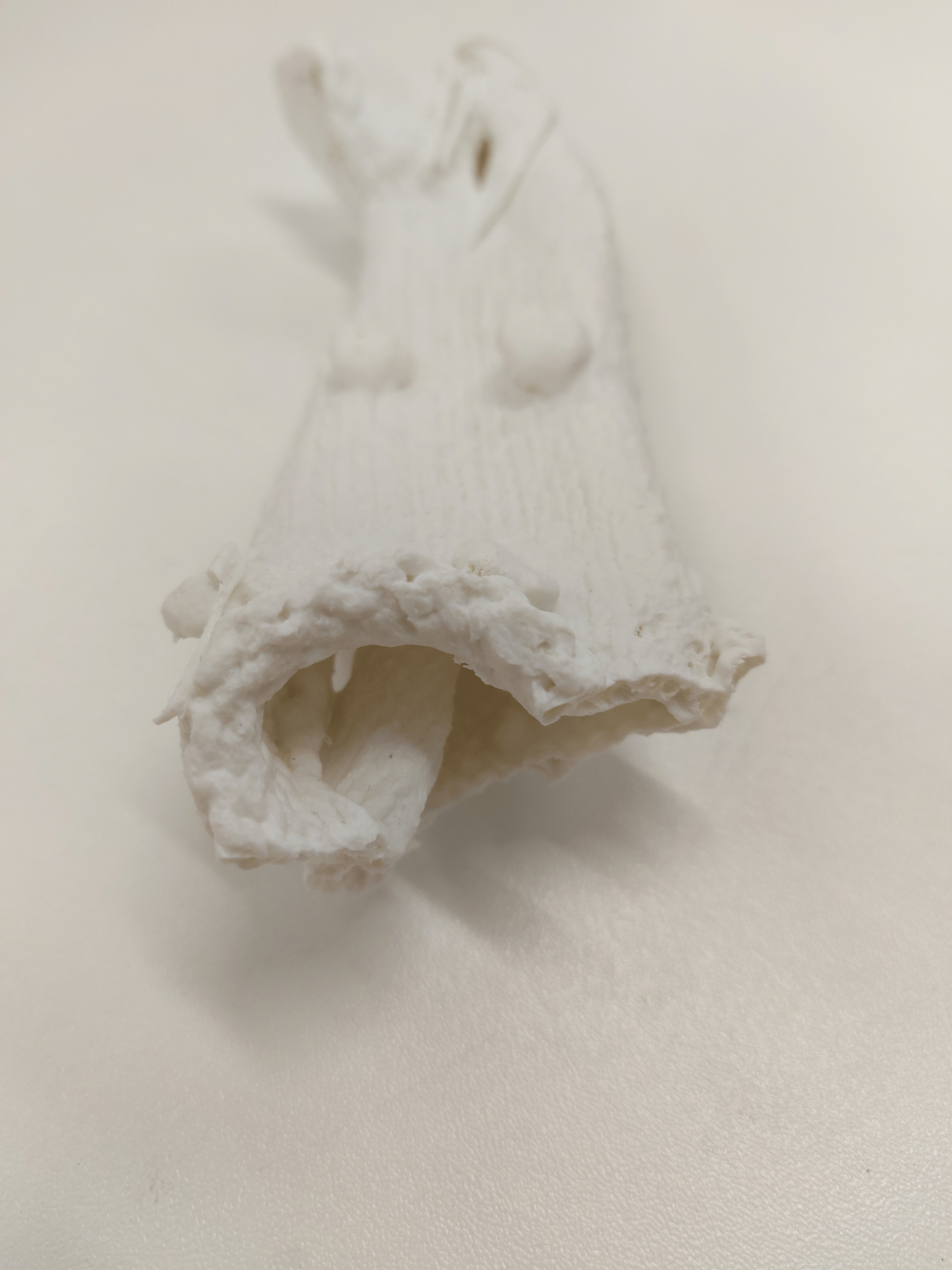
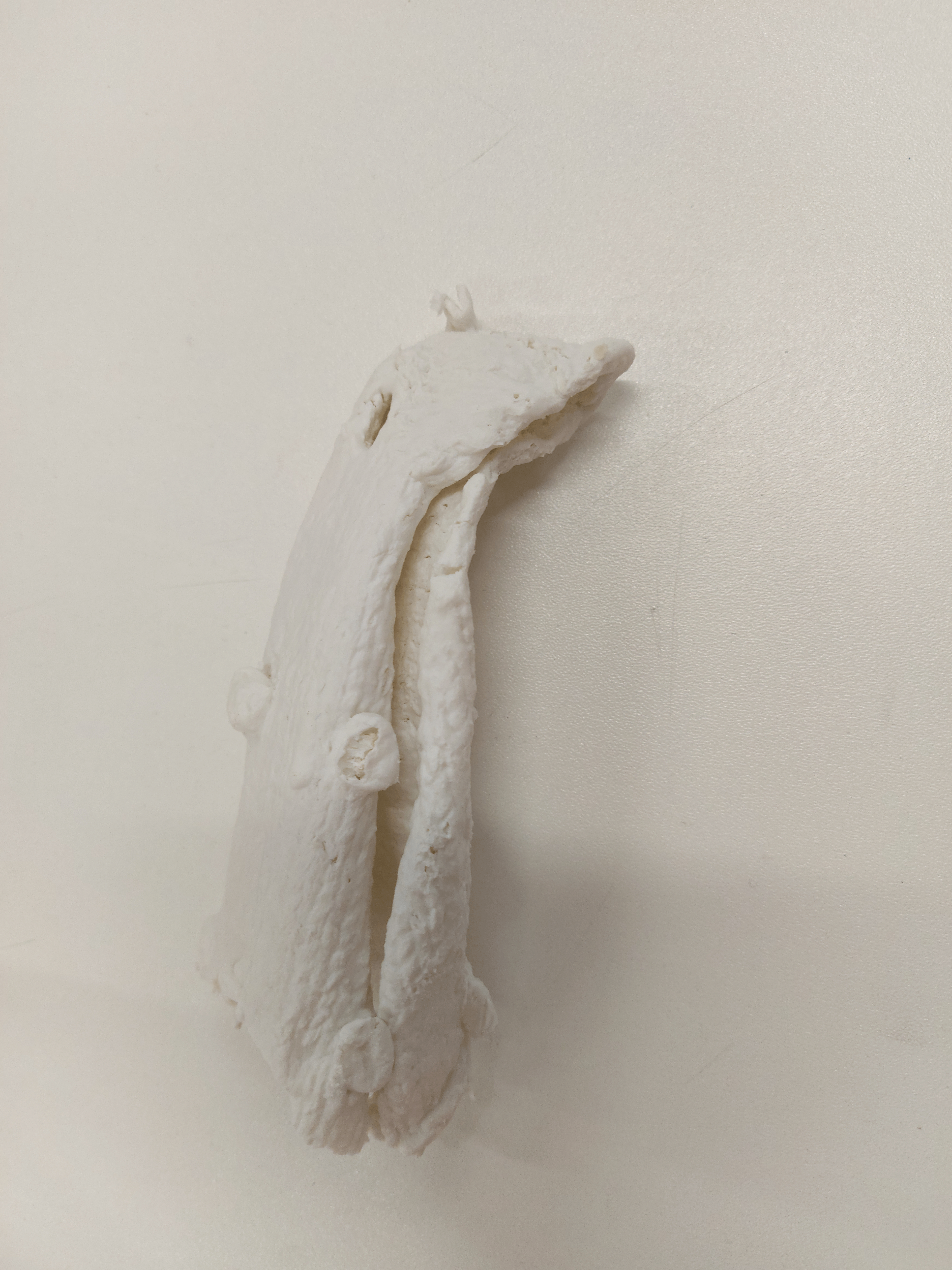
I drew some sketches to experiment with different ways I could make the knitted wool and mohair work with the knitted ceramic. I used these as inspiration for the final pieces but found that changing the shape as I knitted and basing a lot of my angled pieces off of the shape of the ceramics was my process.
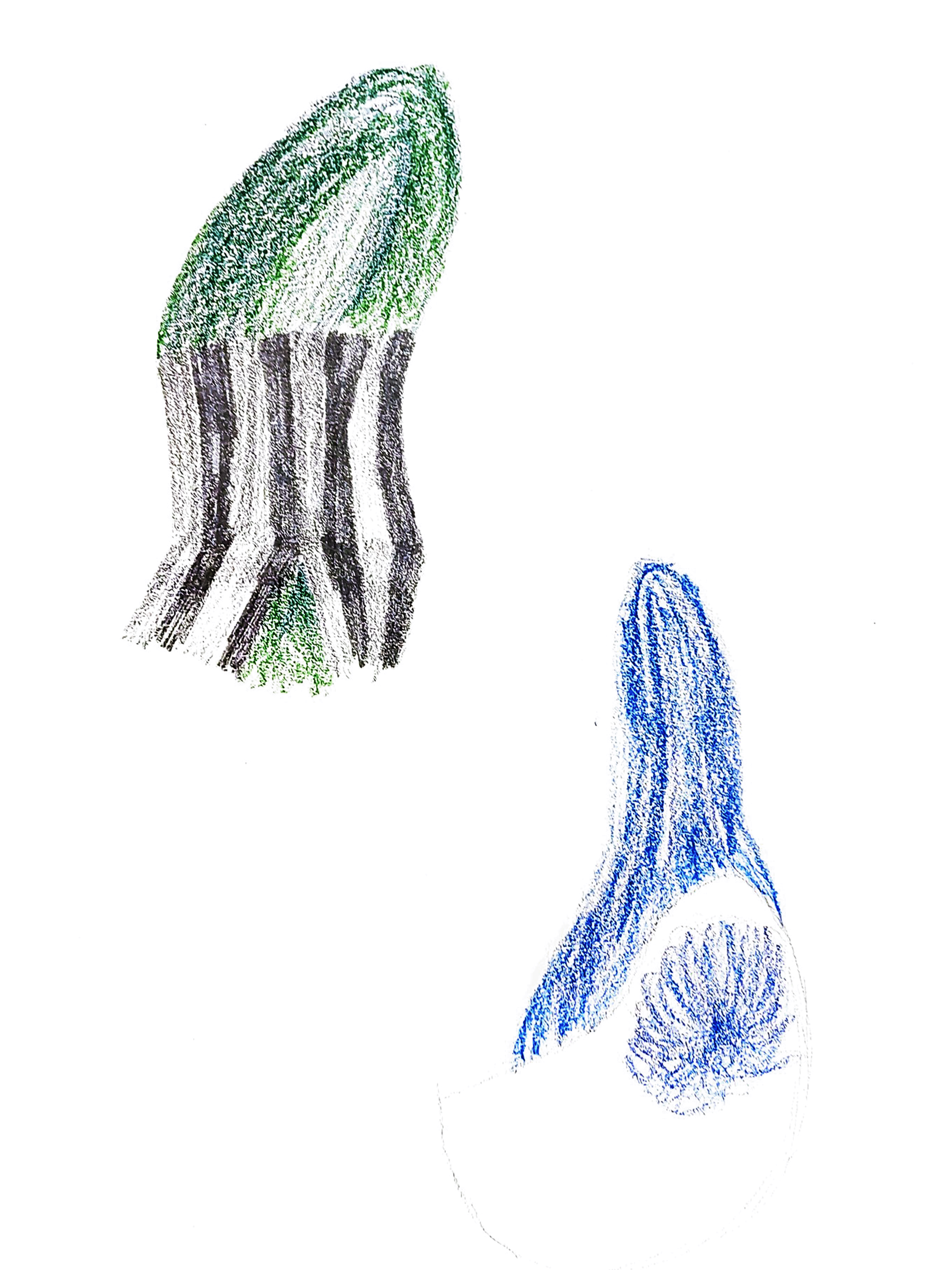

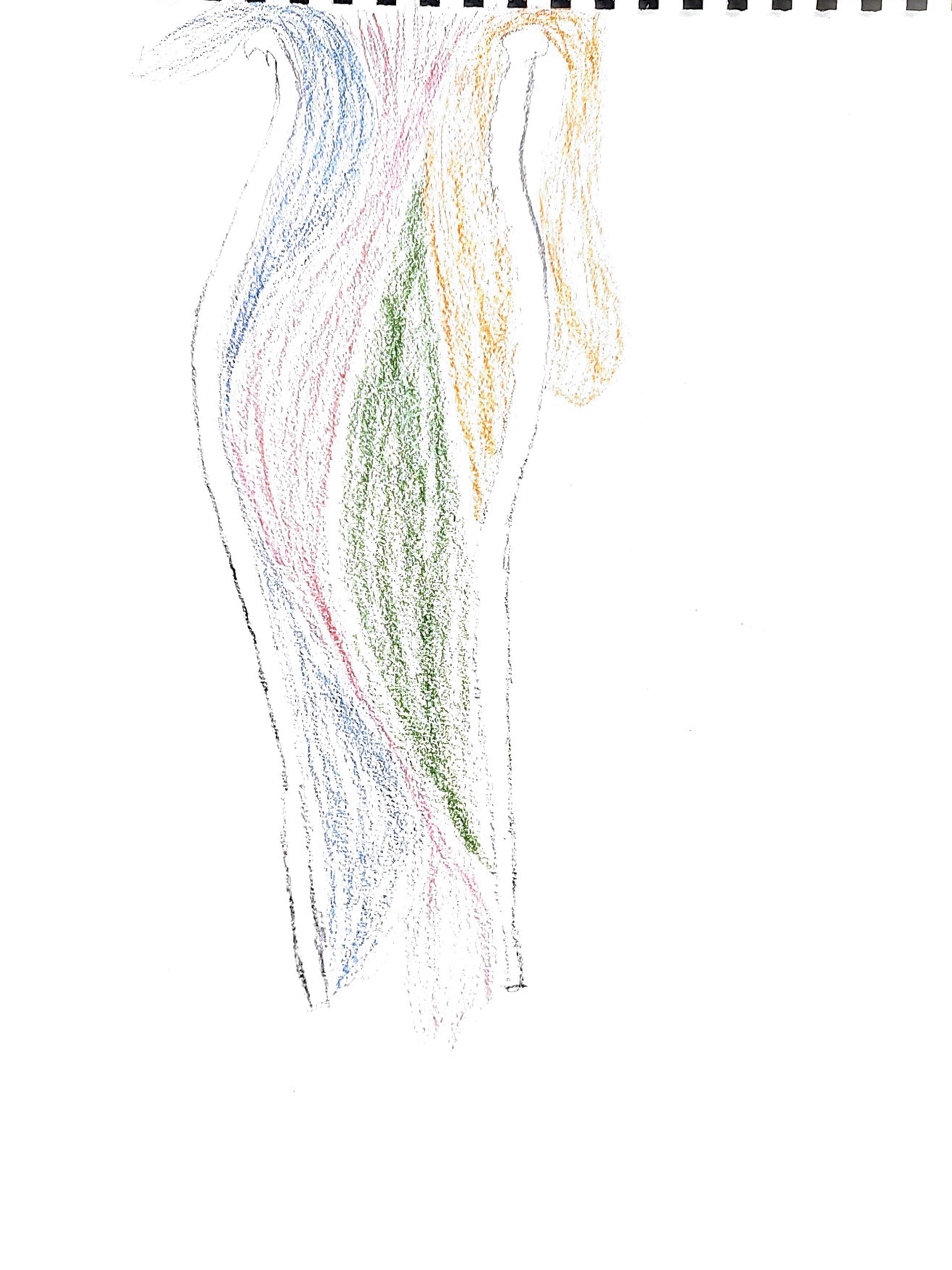

I have annotated the pictures below to give a better idea of the thought process behind knitting the wool and mohair shapes and the assembly of the pieces.
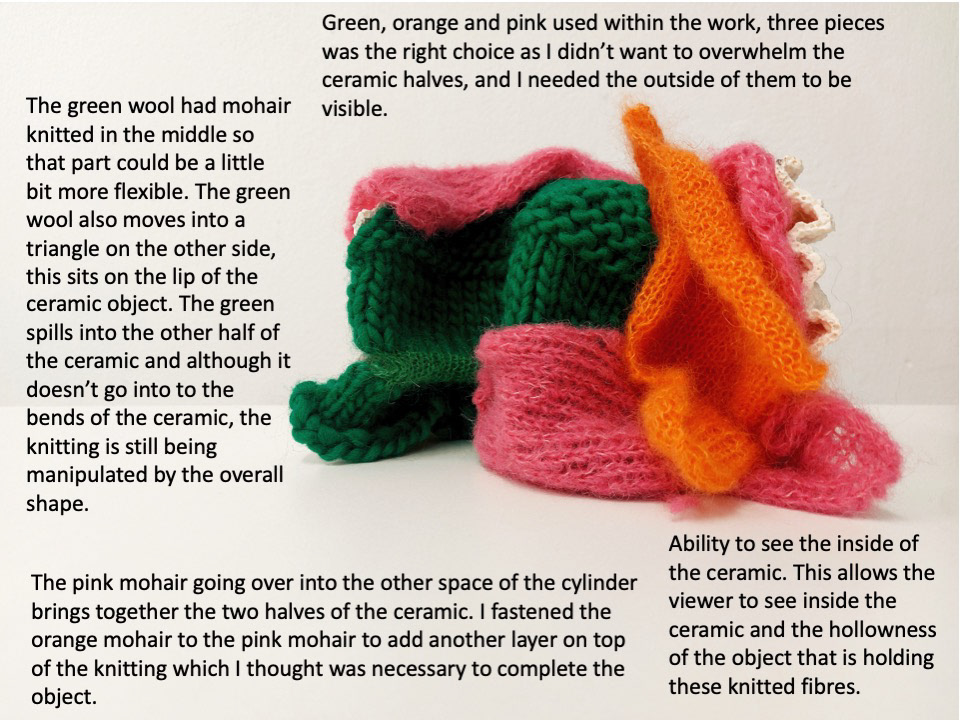

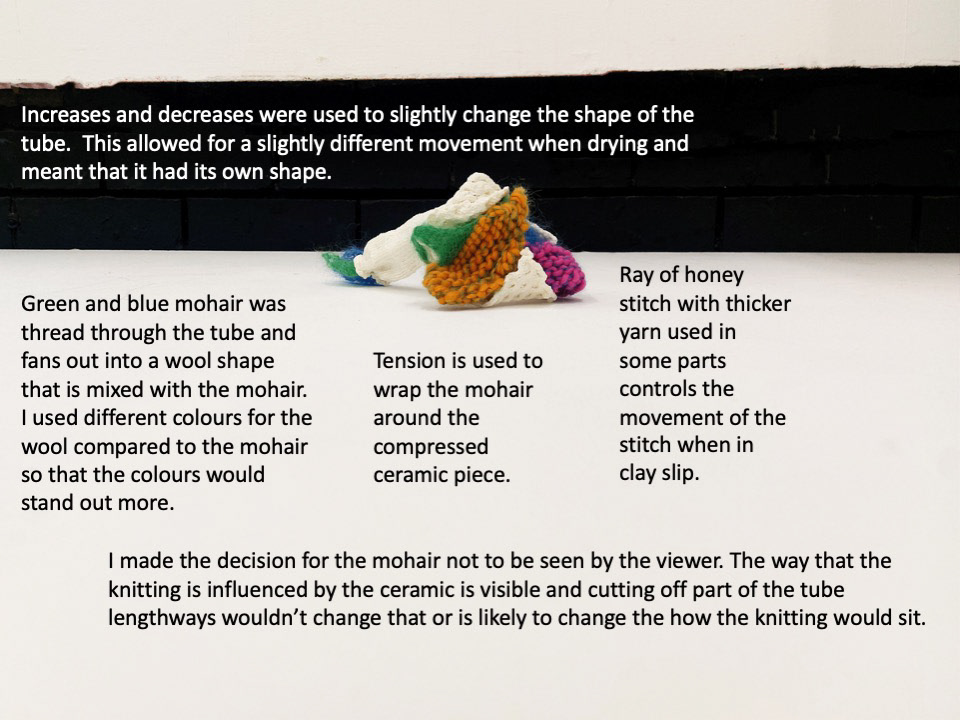
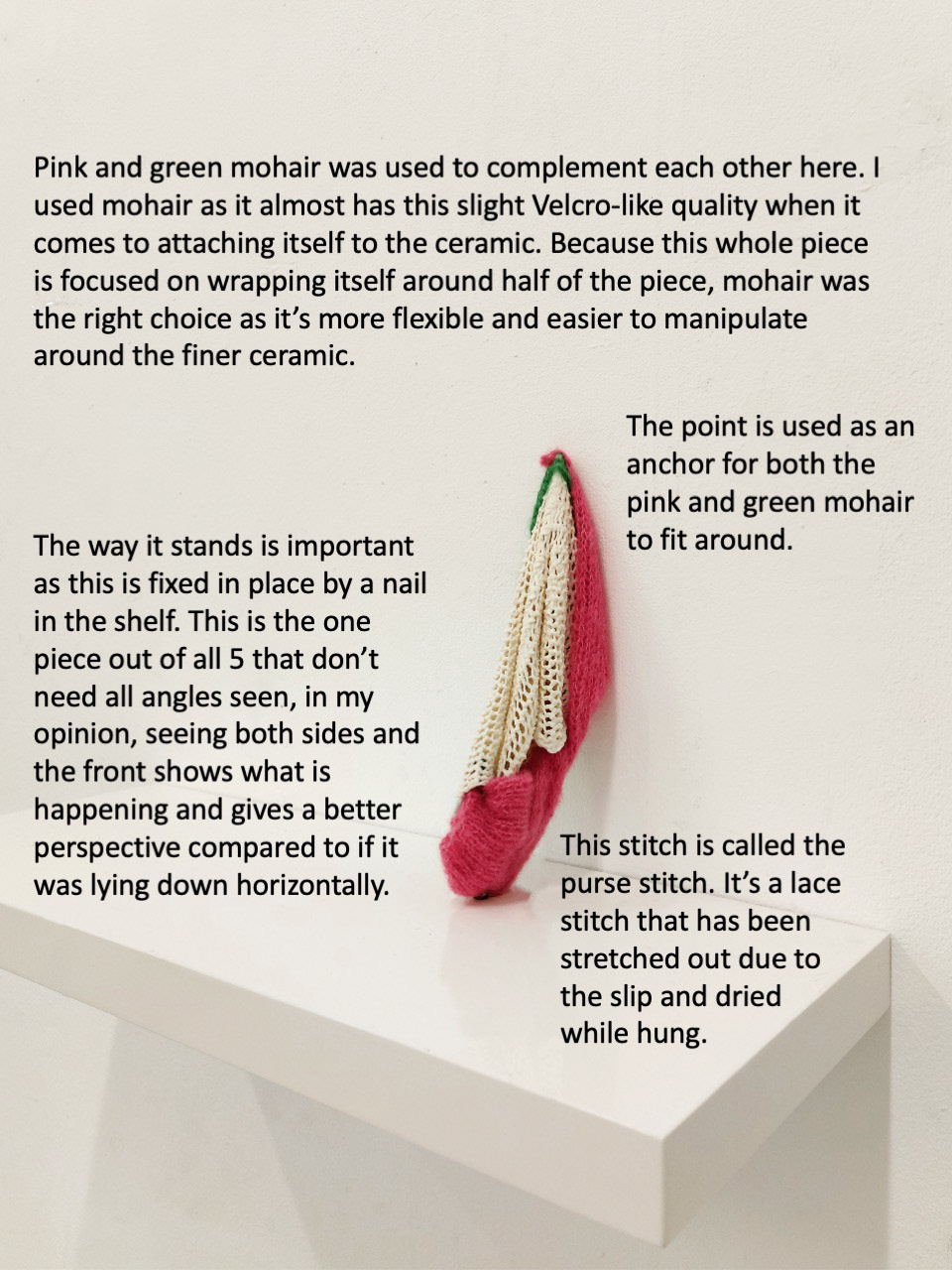

After doing some research into curation and going off of research into other artists, I knew that the main aim for me was to have my work as visible as possible. Because the work is so bright I knew that each piece needed to take up its own space and that they should be spread out.
I started to photograph each piece individually, taking photos of multiple angles informed me of what angles showed off the knitted fibres and how they interacted with the knitted ceramic.
I started experimenting with levels, seeing how I could present the pieces. 3 and 5 seemed right on the bottom shelf because they needed to be seen from multiple angles. Number 2 needed to have the knitted forms working with gravity by having them dangling off the edge. Number 1 being seen at a higher level means that the viewer can see all around the ceramic, which is more important than the top of the piece. Number 4 needs to be set up against the wall so that you can see the full tension of the mohair wrapped around the full length of the piece.
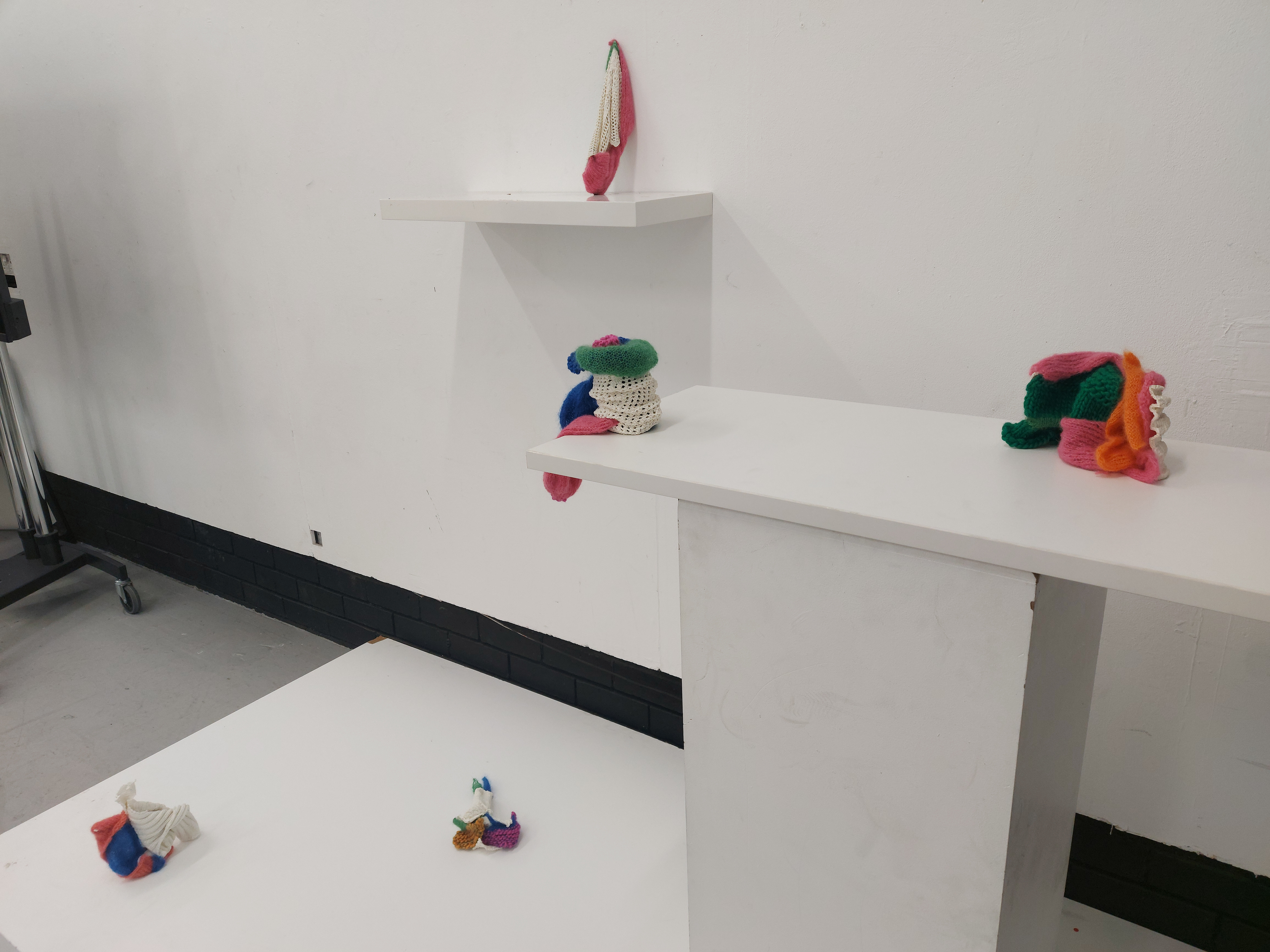
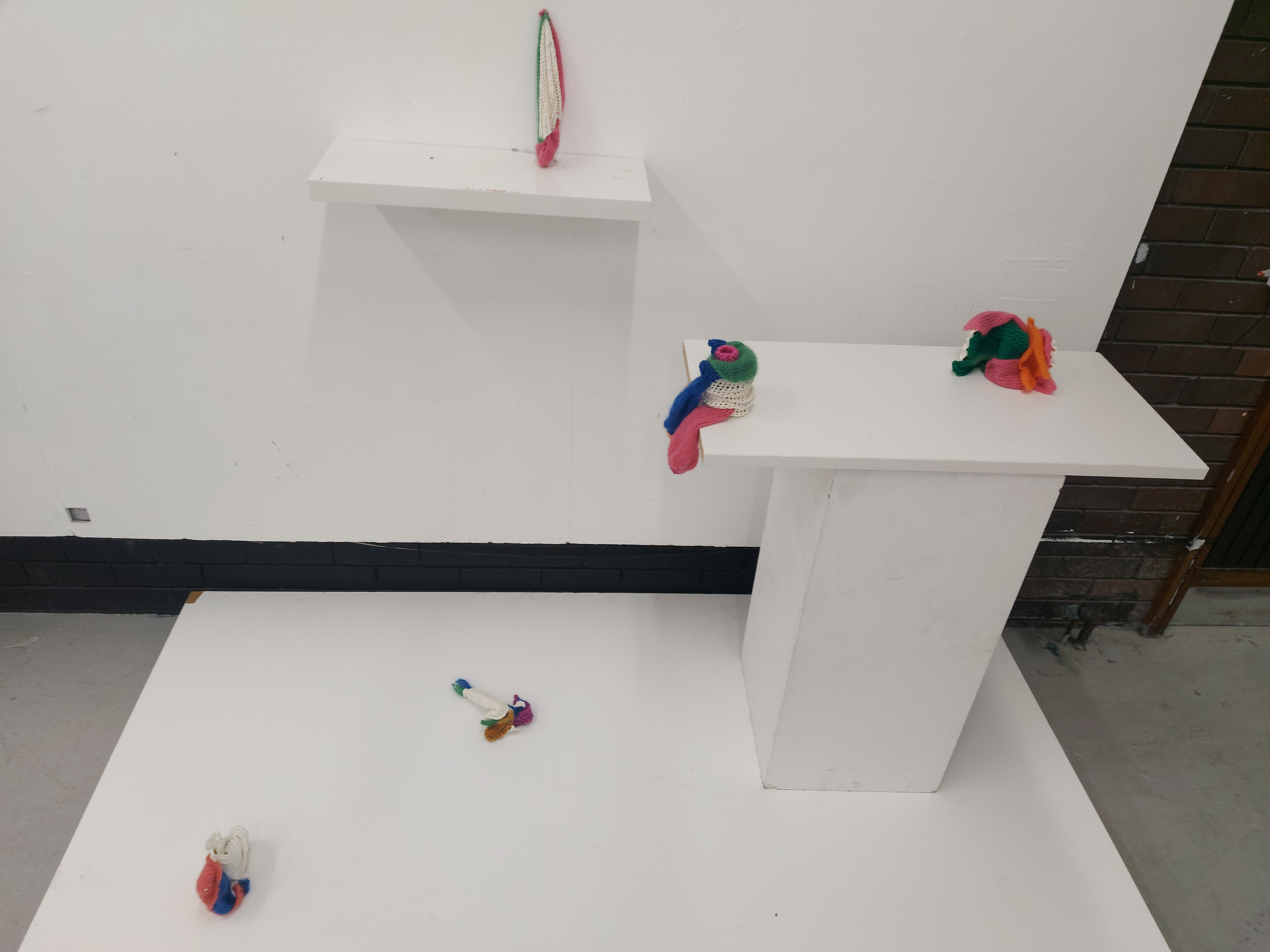
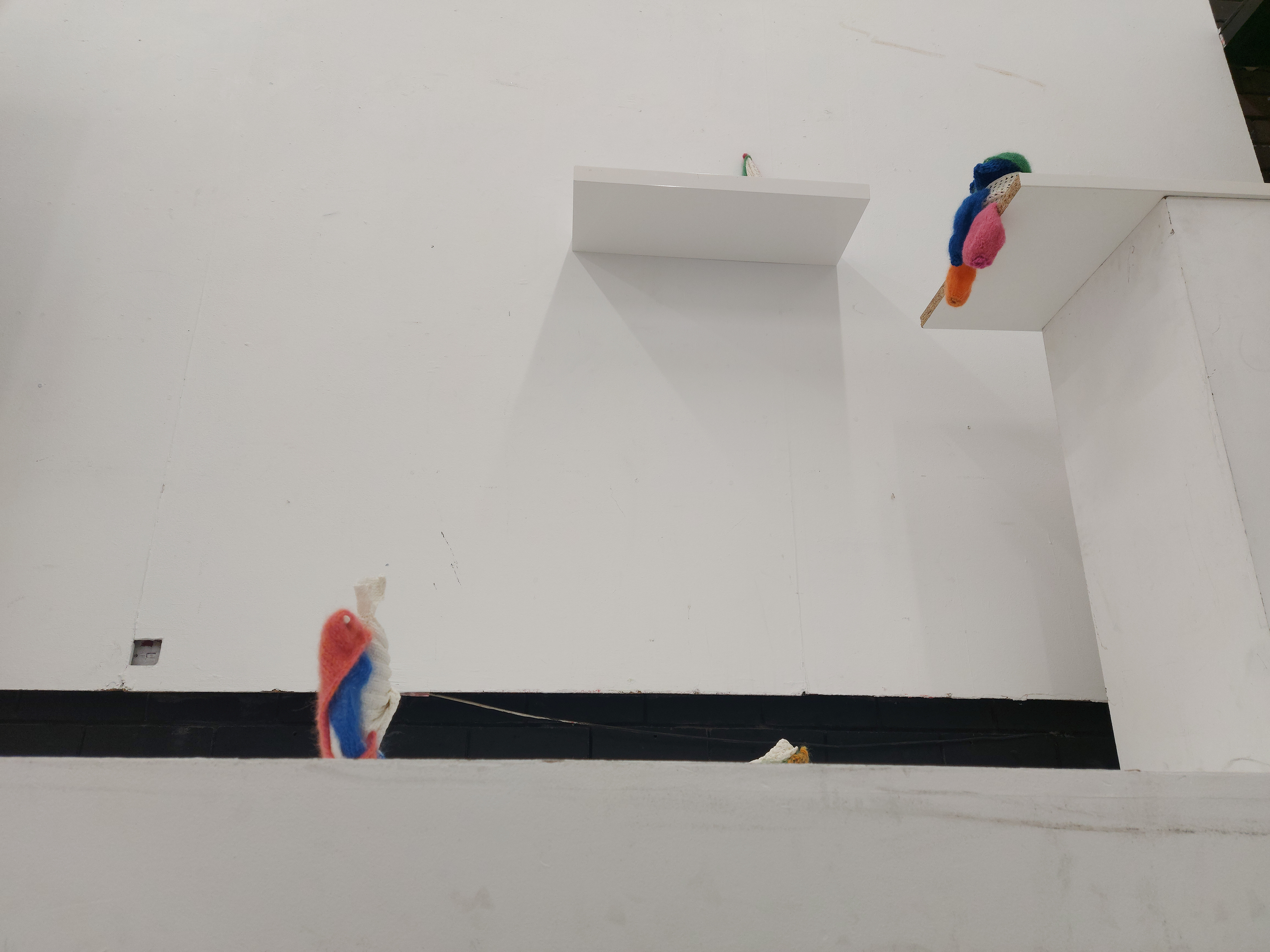
Overall, I am happy with the way I curated the objects. I tried to utilise the space as well as I could with whatever resources were available. With more space and resources I would've liked 3 and 5 to have been higher than the floor level they were on and to have more space so that the viewer could fully walk round them. I would have liked number 1 and 2 to be on separate stands so that there could have been an opportunity to get a 360 degree view on both. The nail in the shelf was necessary for piece number 4 to stand up on its side and lean against the wall.
On reflection, the work has shown what I have wanted it to. For me the main interest I found throughout my experimentation was seeing how ceramic could influence movement of my hand knitted material. These pieces are colourful and contrast with the stoneware fired porcelain. Hand knitting is still a key part of my process as it has allowed me to create forms and textures as I go along, exploring how this changes the work and how it contrasts with another material. The button below goes to the final outcome 'Knitting Tension', a collection of 5 objects that show off how hand knitted ceramics and hand knitted natural fibres can interact with each other. I have numbered each piece because I feel the higher the number gets, the more the form develops.
